Launched in 2007, the first-generation Audi R8 was so successful that the German brand decided to keep it around for no fewer than eight model years. The Spyder, on the other hand, is a bit younger than that, having been unveiled at the 2009 Frankfurt Auto Show->ke235 for the 2010 model year.
At first only available with the 5.2-liter V-10, the convertible->ke144 also received the 4.2-liter V-8 for 2011, and a limited-edition GT model for 2012. With the second-generation R8->ke1440 already in dealerships, Audi->ke14 introduced the redesigned Spyder version at the 2016 New York Auto Show.->ke226
Much like its predecessor, the second-generation R8 Spyder is essentially a topless version of the R8 Coupe, using a soft-top instead of metal roof. Specs are obviously identical, meaning there's no longer a V-8 engine and a manual transmission. Audi has yet to confirm whether the R8 Spyder will also get an e-tron version, but an all-electric drop-top is very likely to arrive by the end of 2016.
Audi's new angular design works well with the R8 Spyder's convertible layout and the performance is definitely strong, but does it have what it takes to compete against the bonkers Porsche 911 Turbo Cabriolet and McLaren's upcoming 570S Spider? Keep reading to find out.
Update 12/12/2018: We've updated this review with pictures taken at the 2018 Los Angeles Auto Show. Check them out in the gallery at the bottom of the page!
2017 - 2018 Audi R8 Spyder
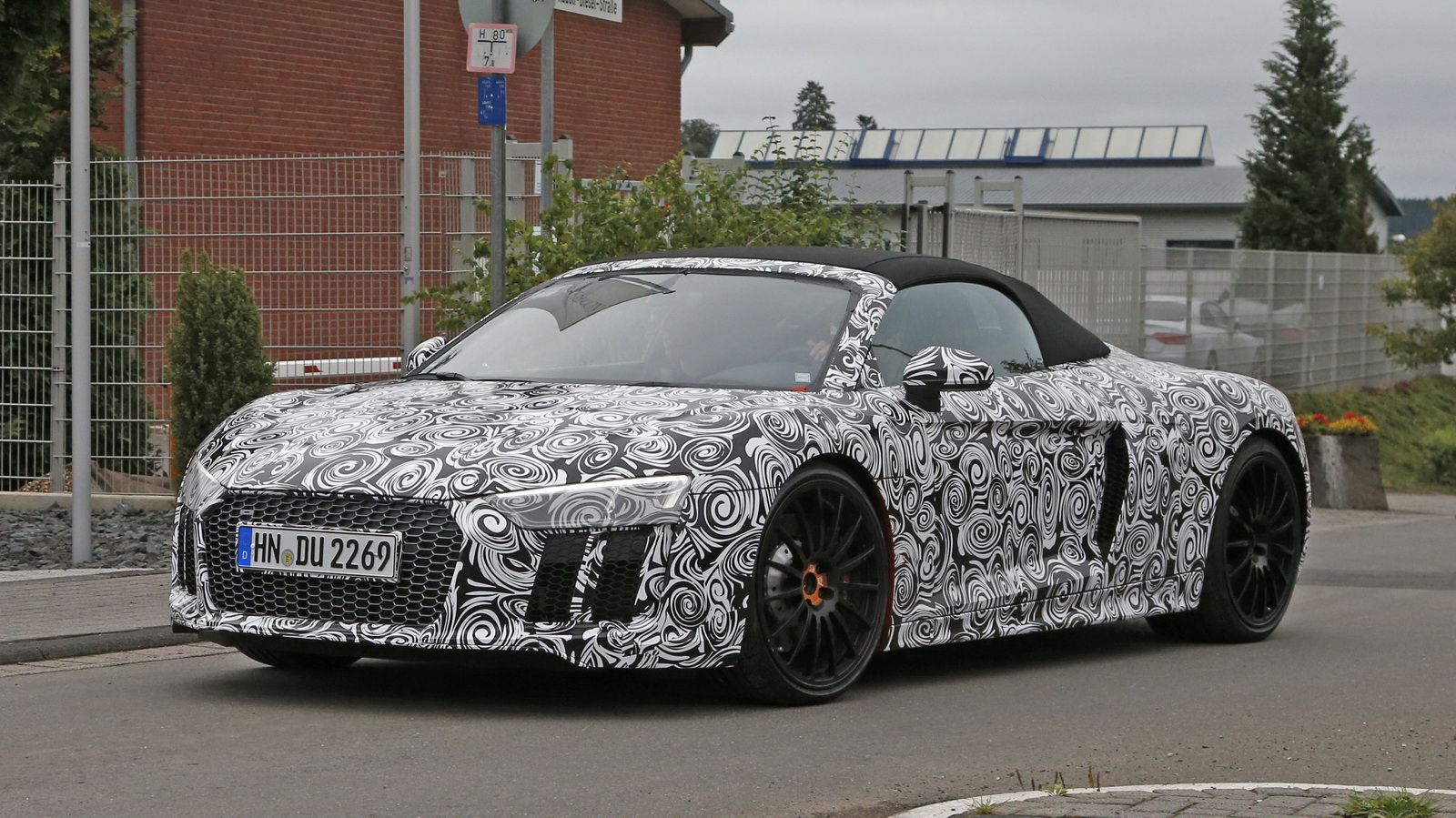

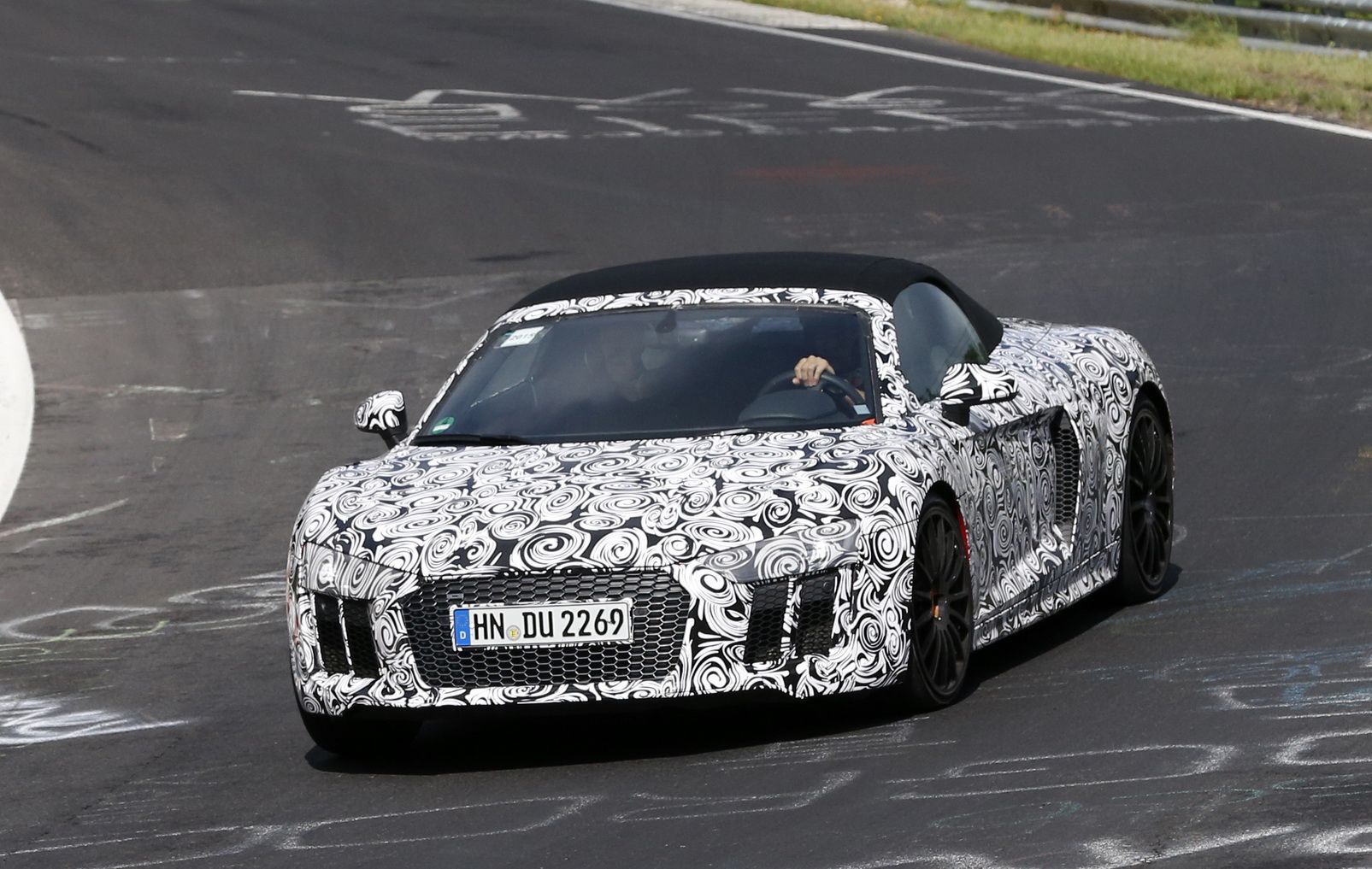
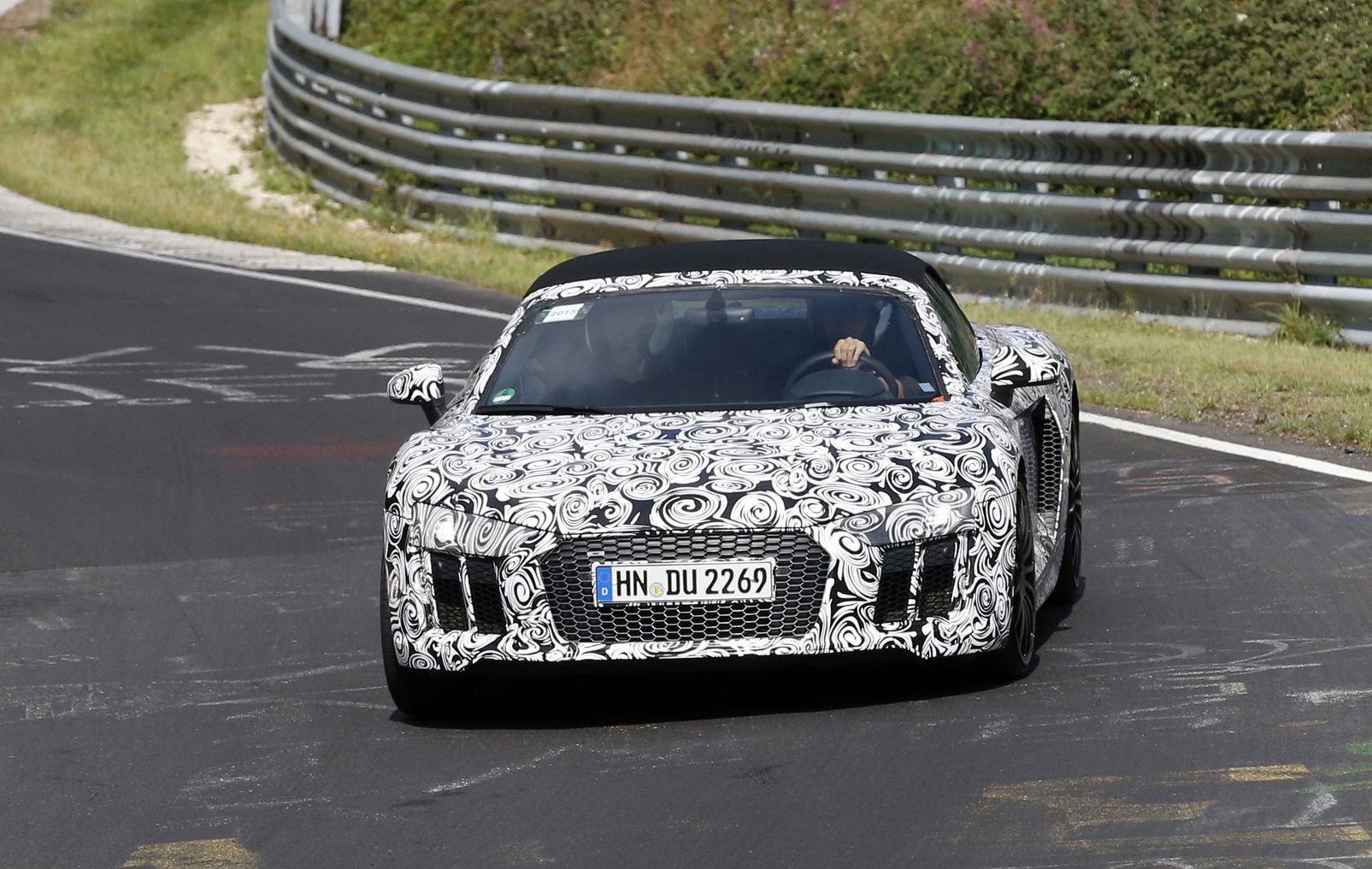
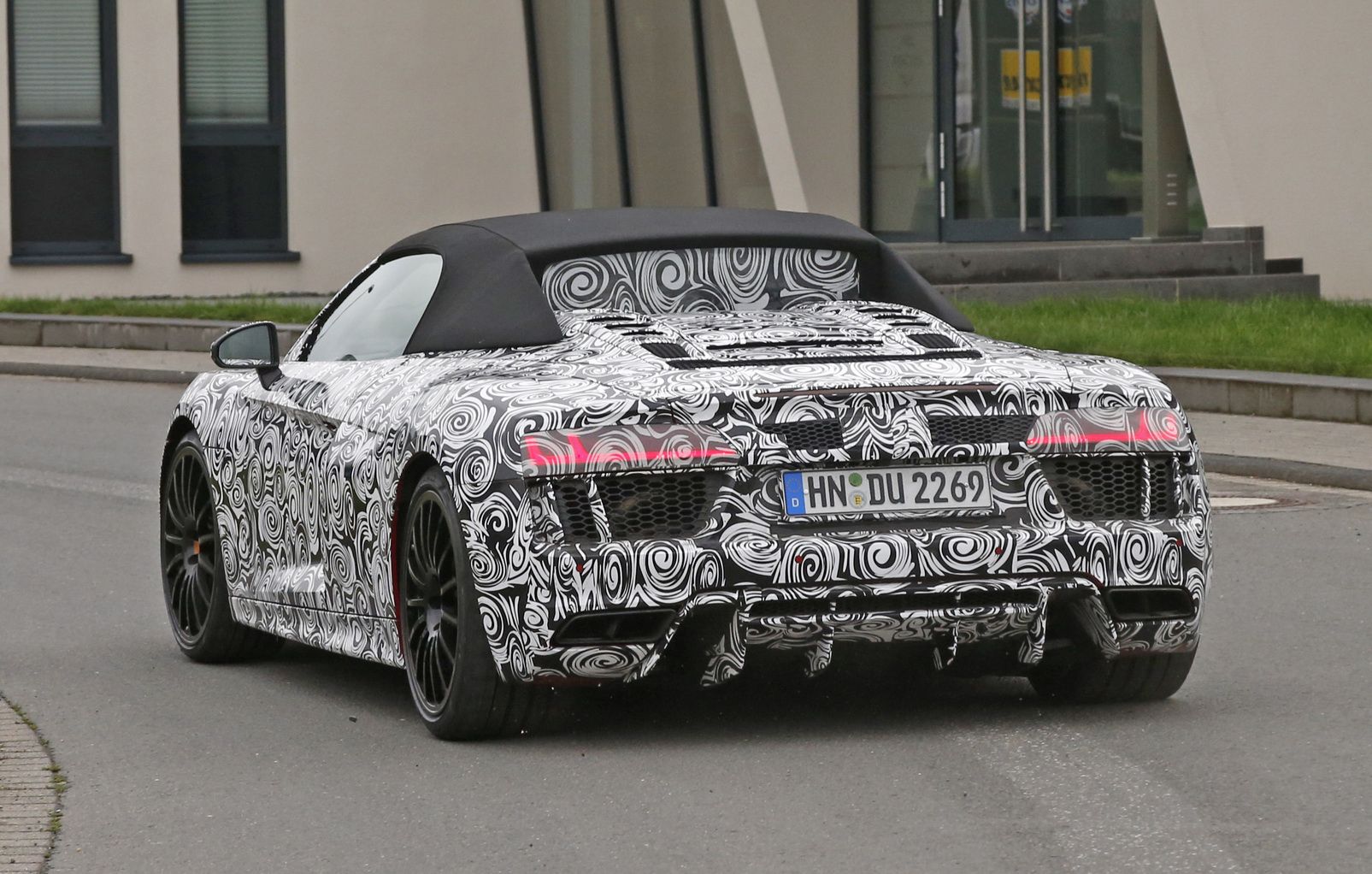
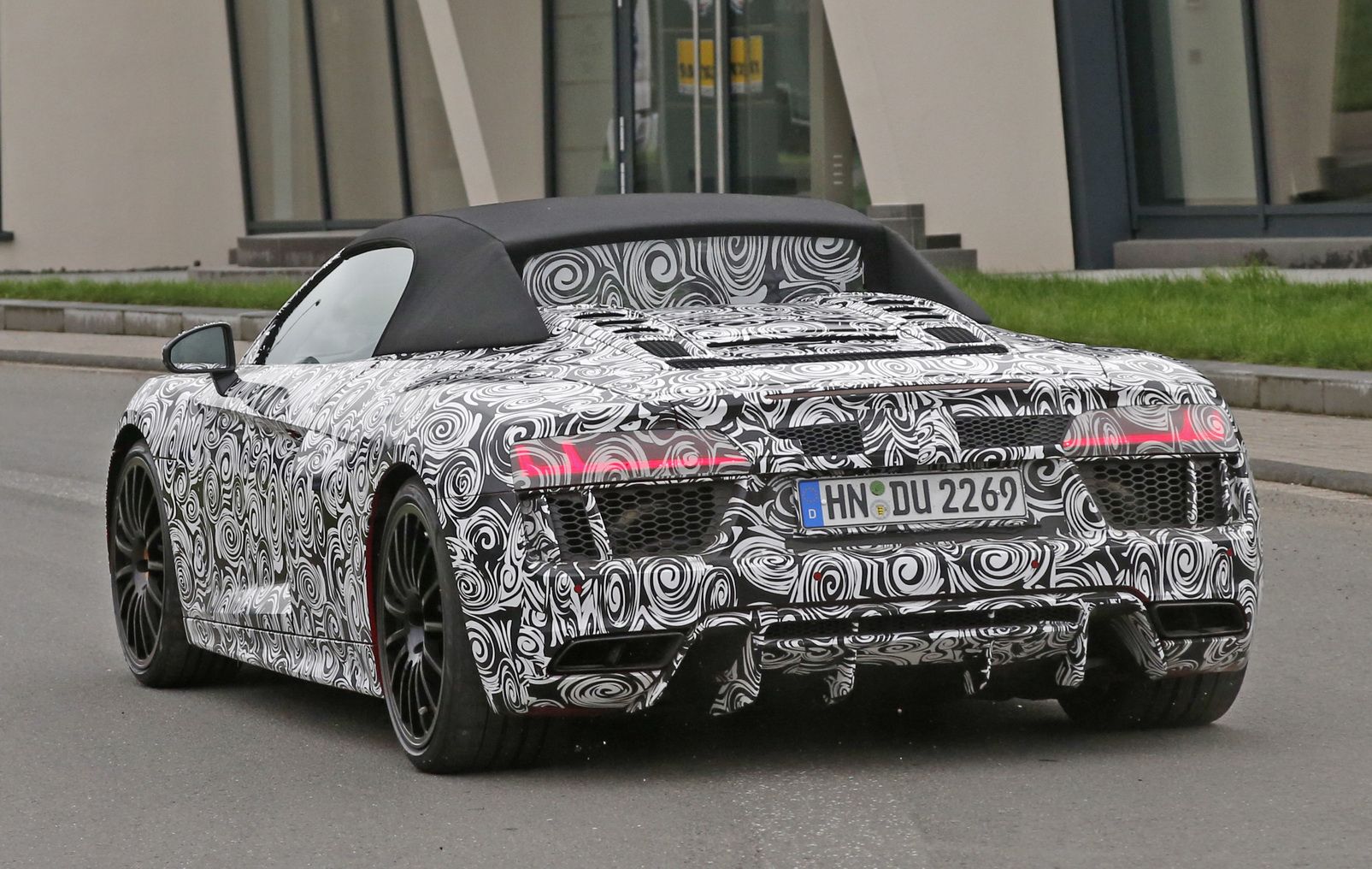
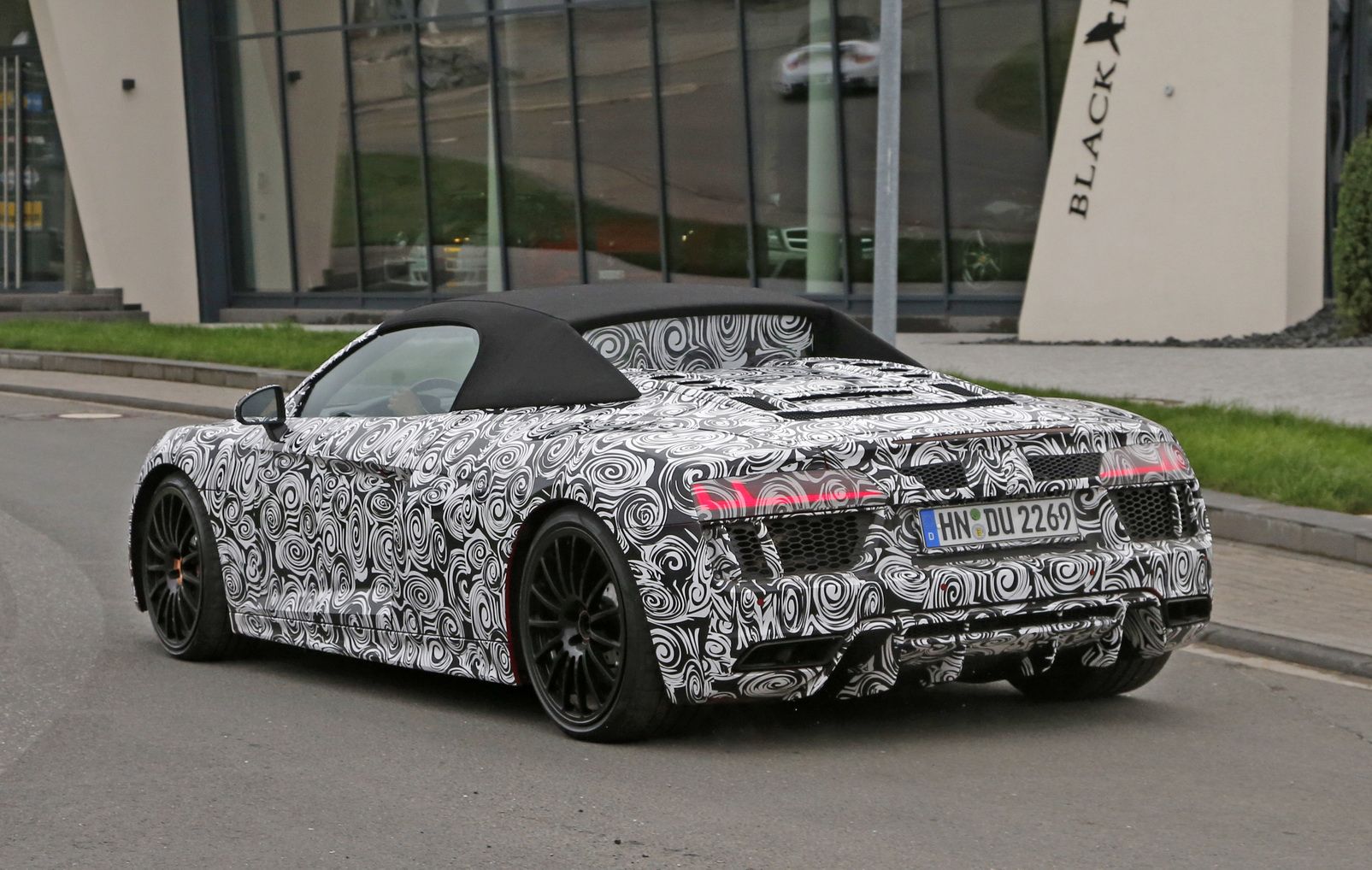
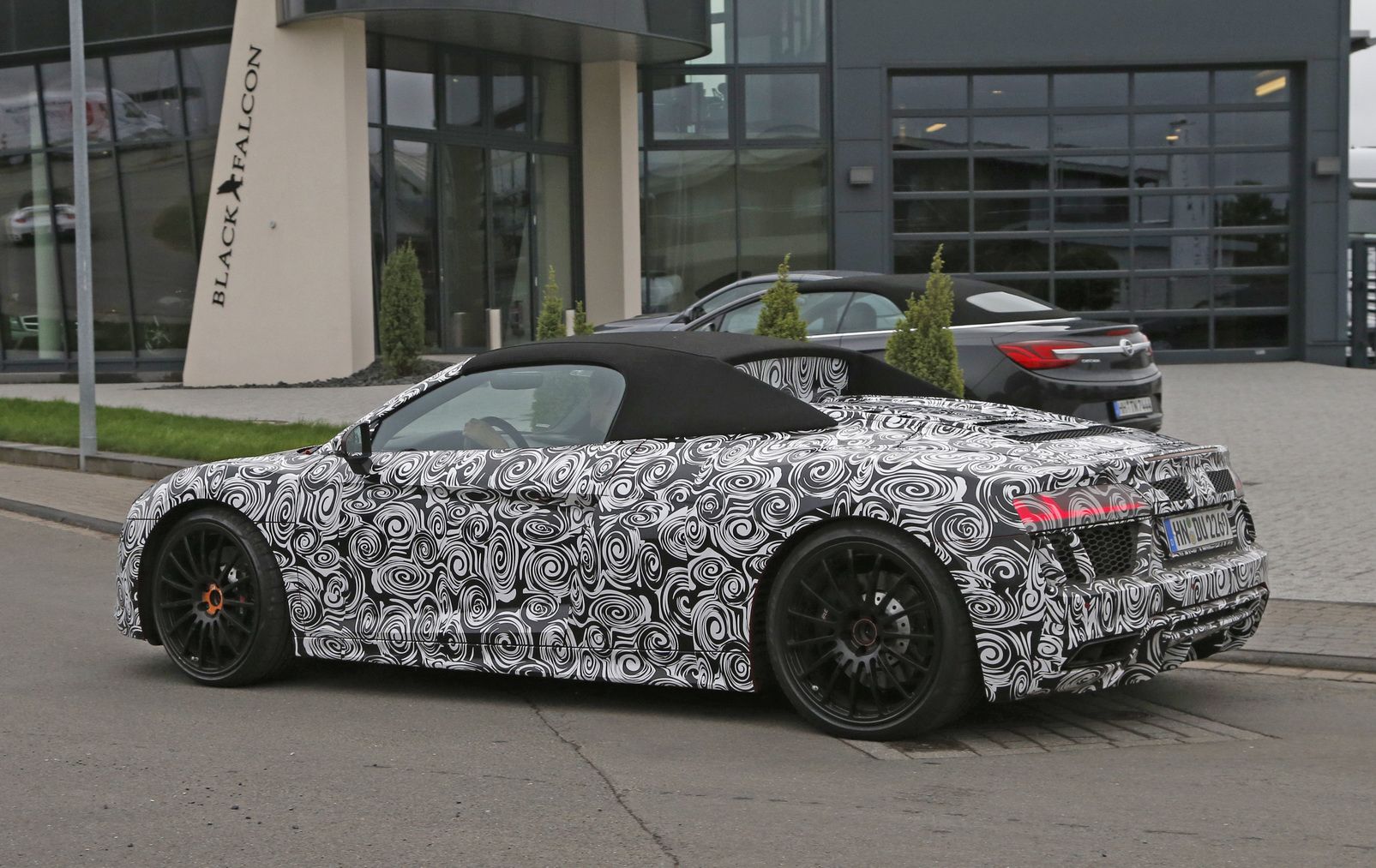
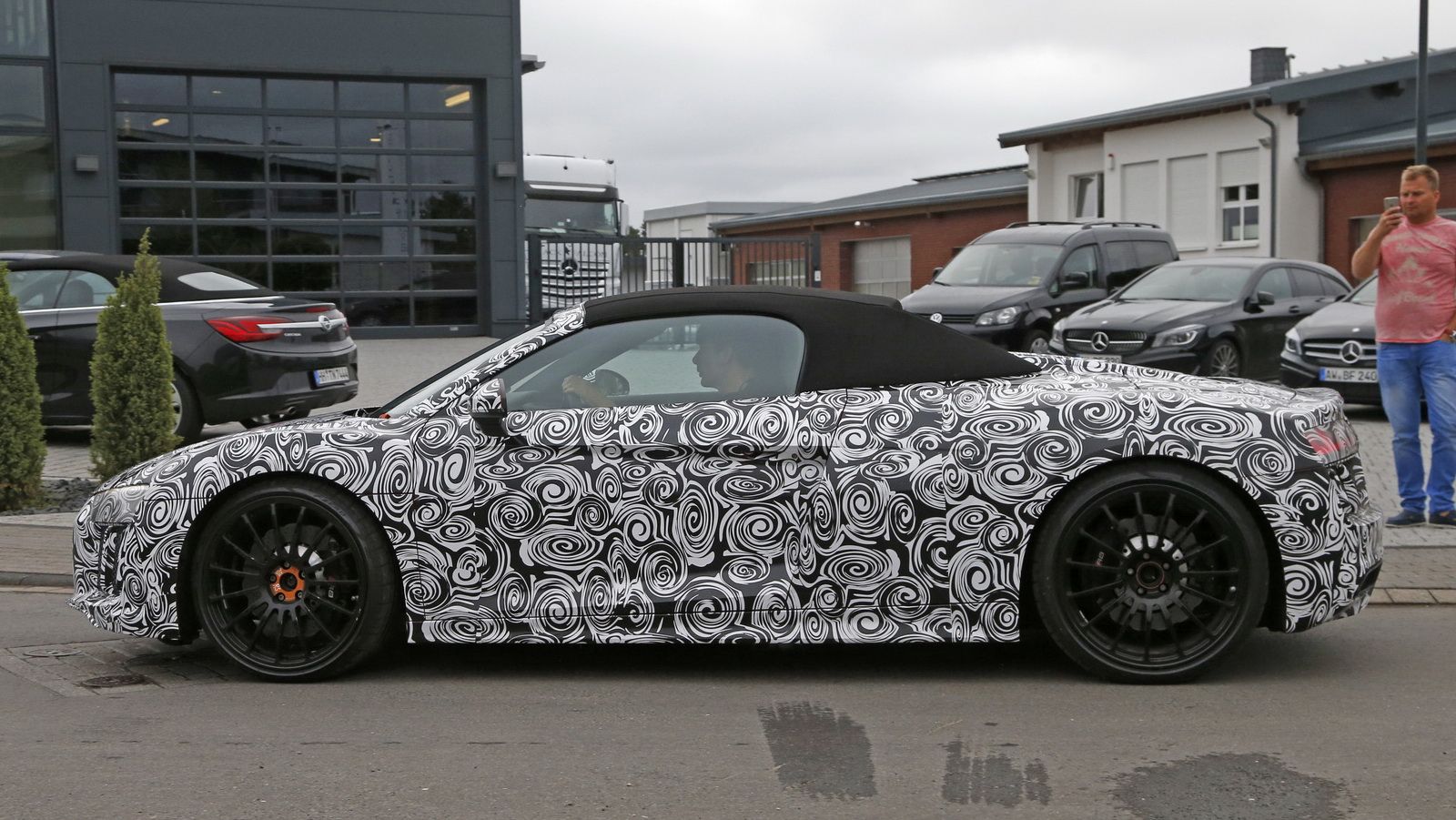
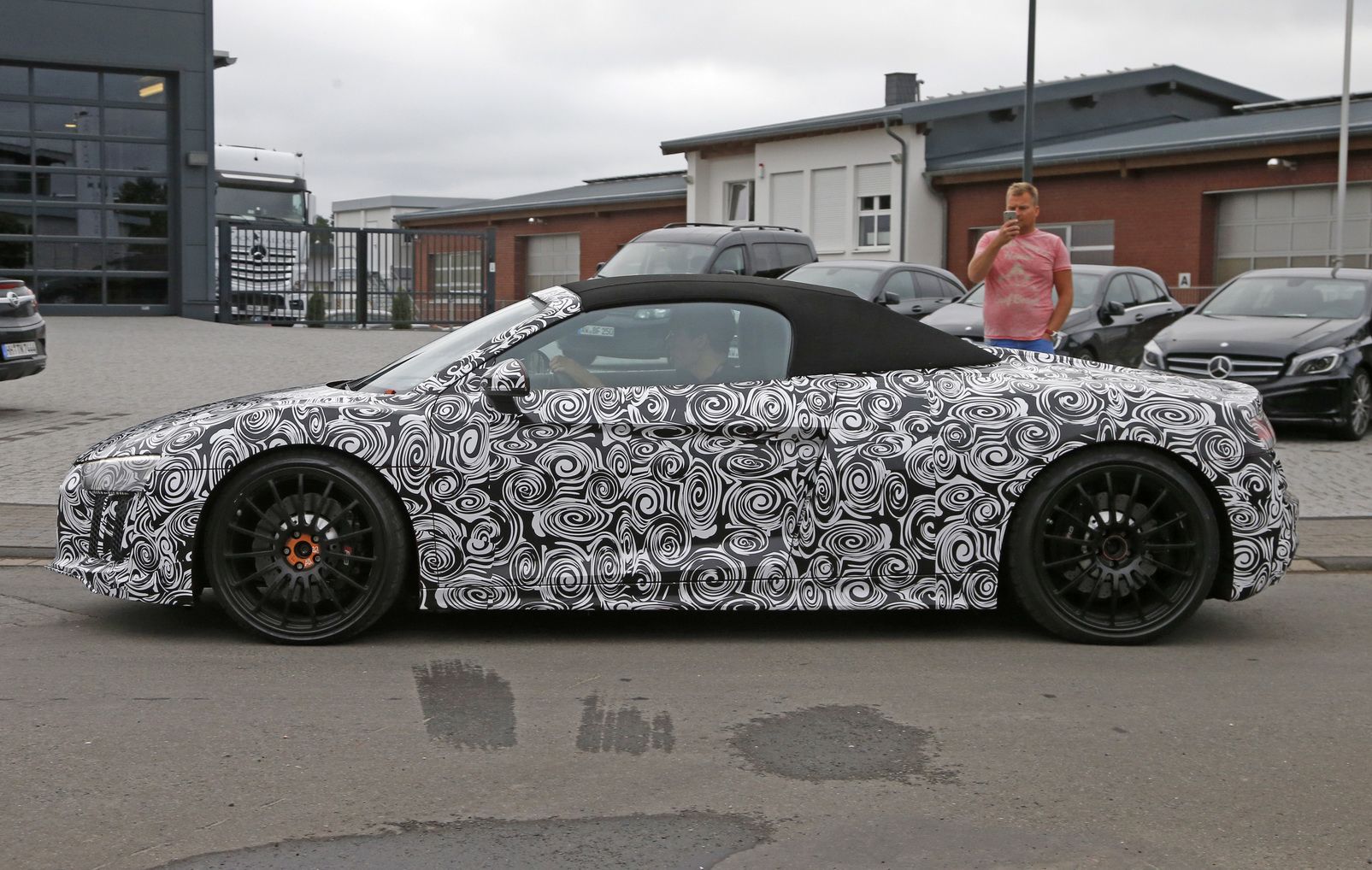
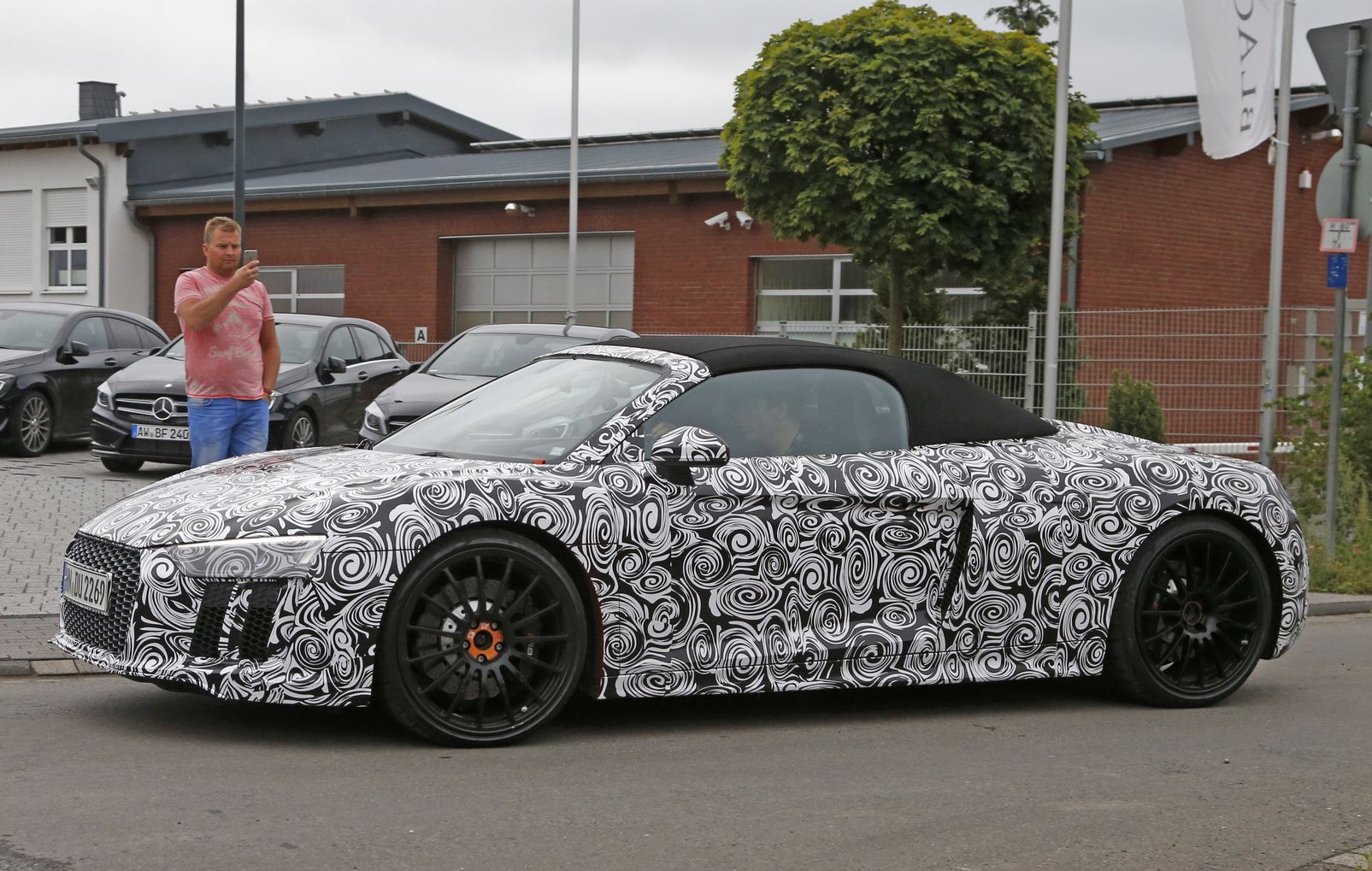
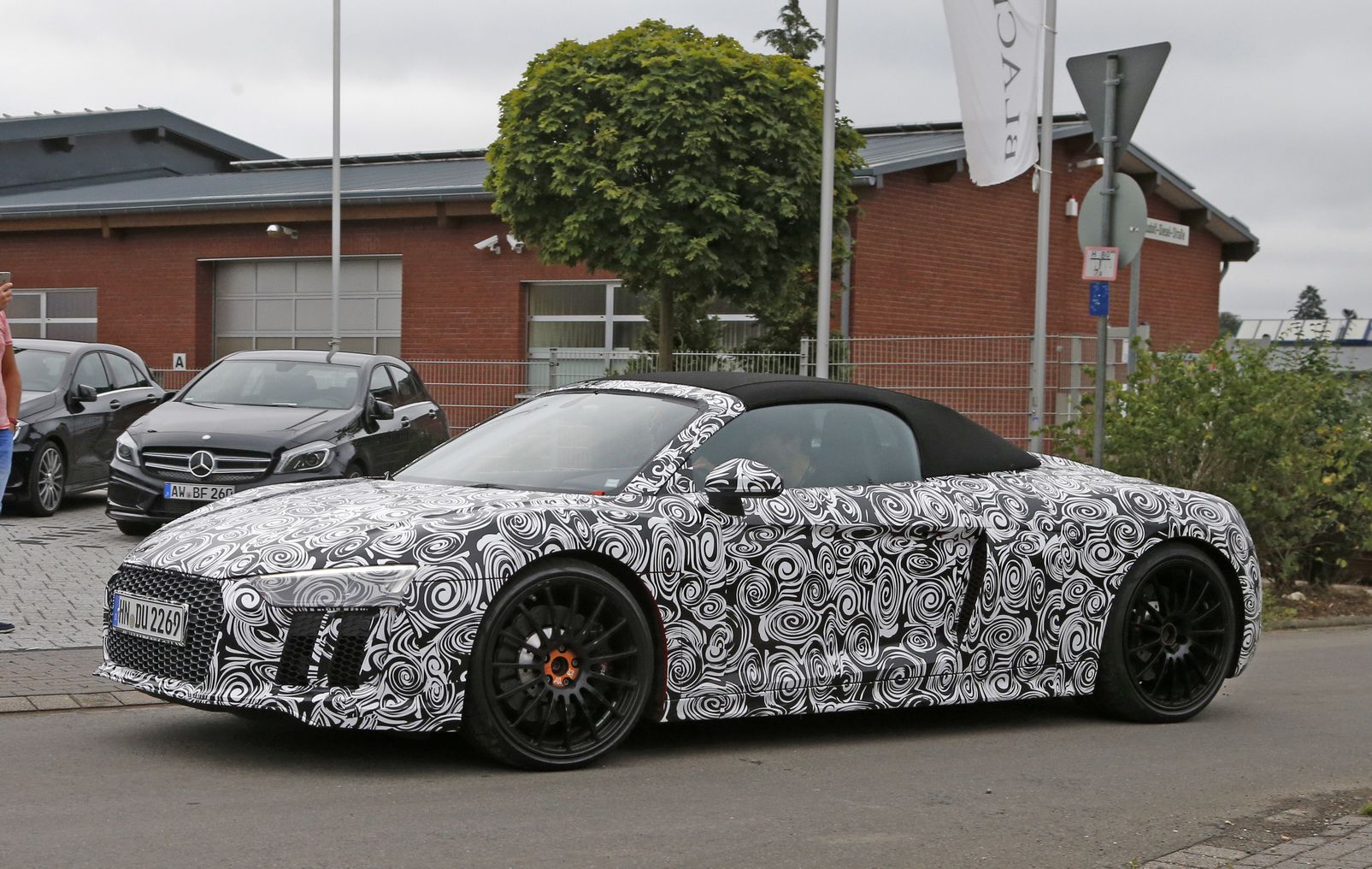
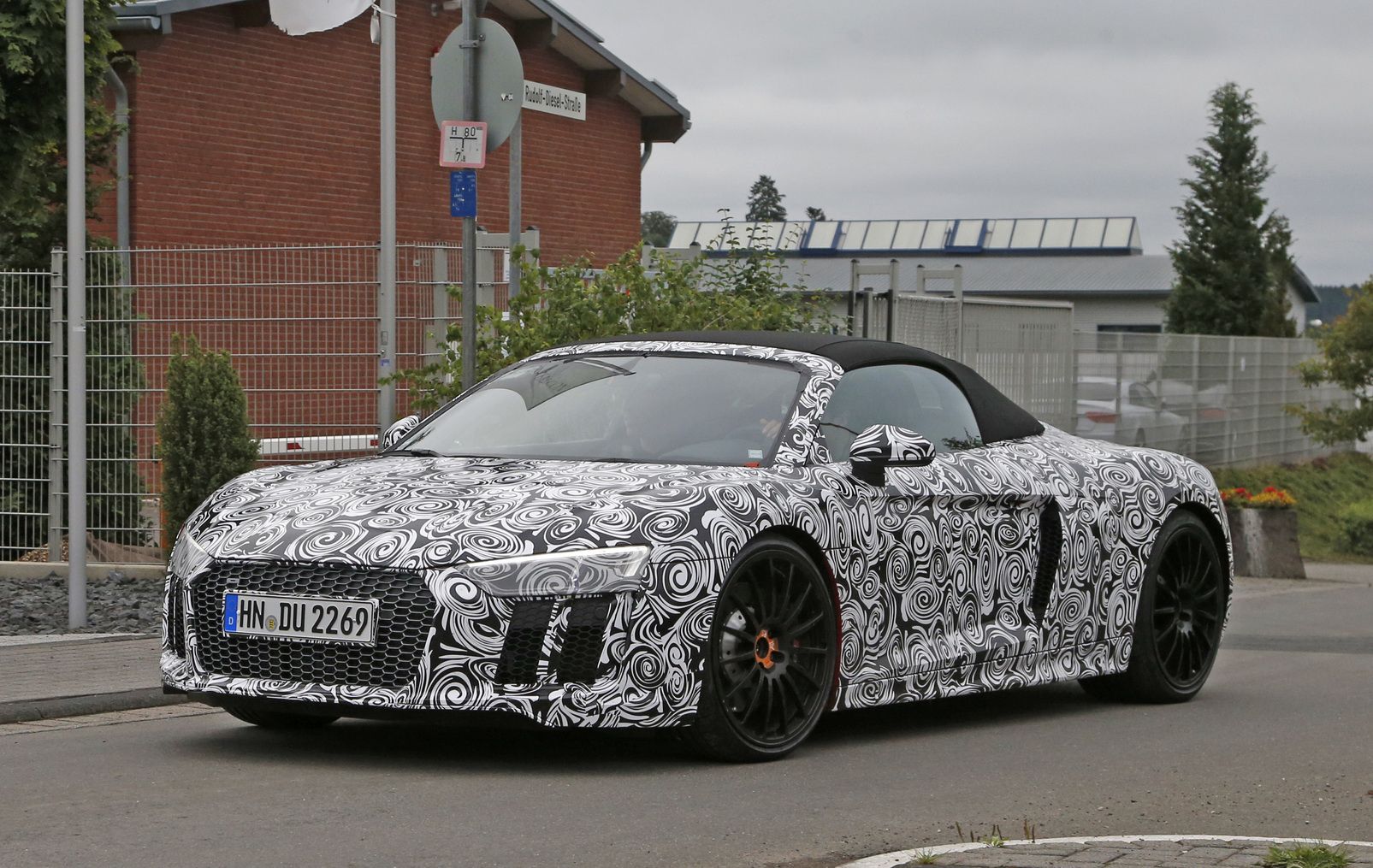
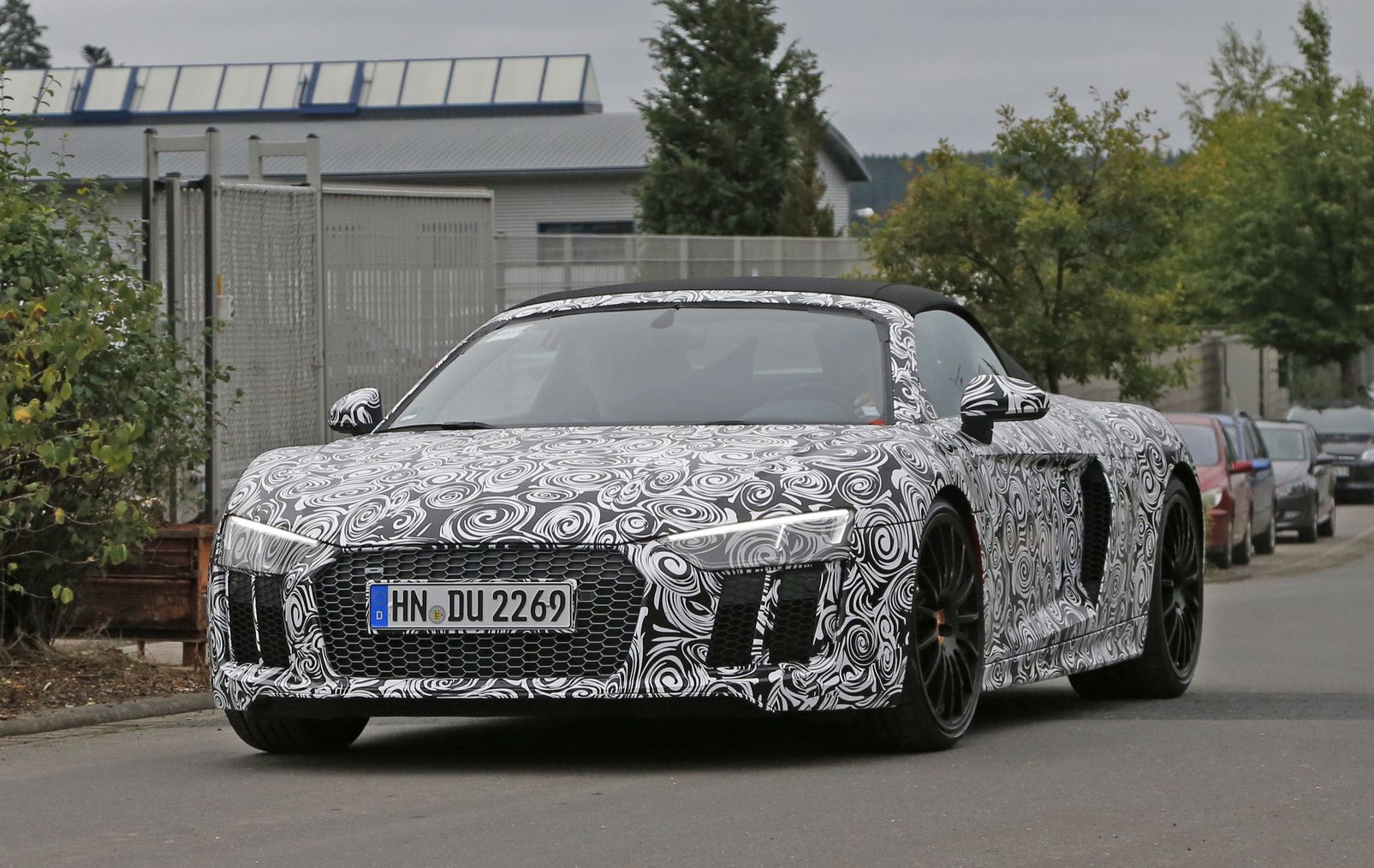
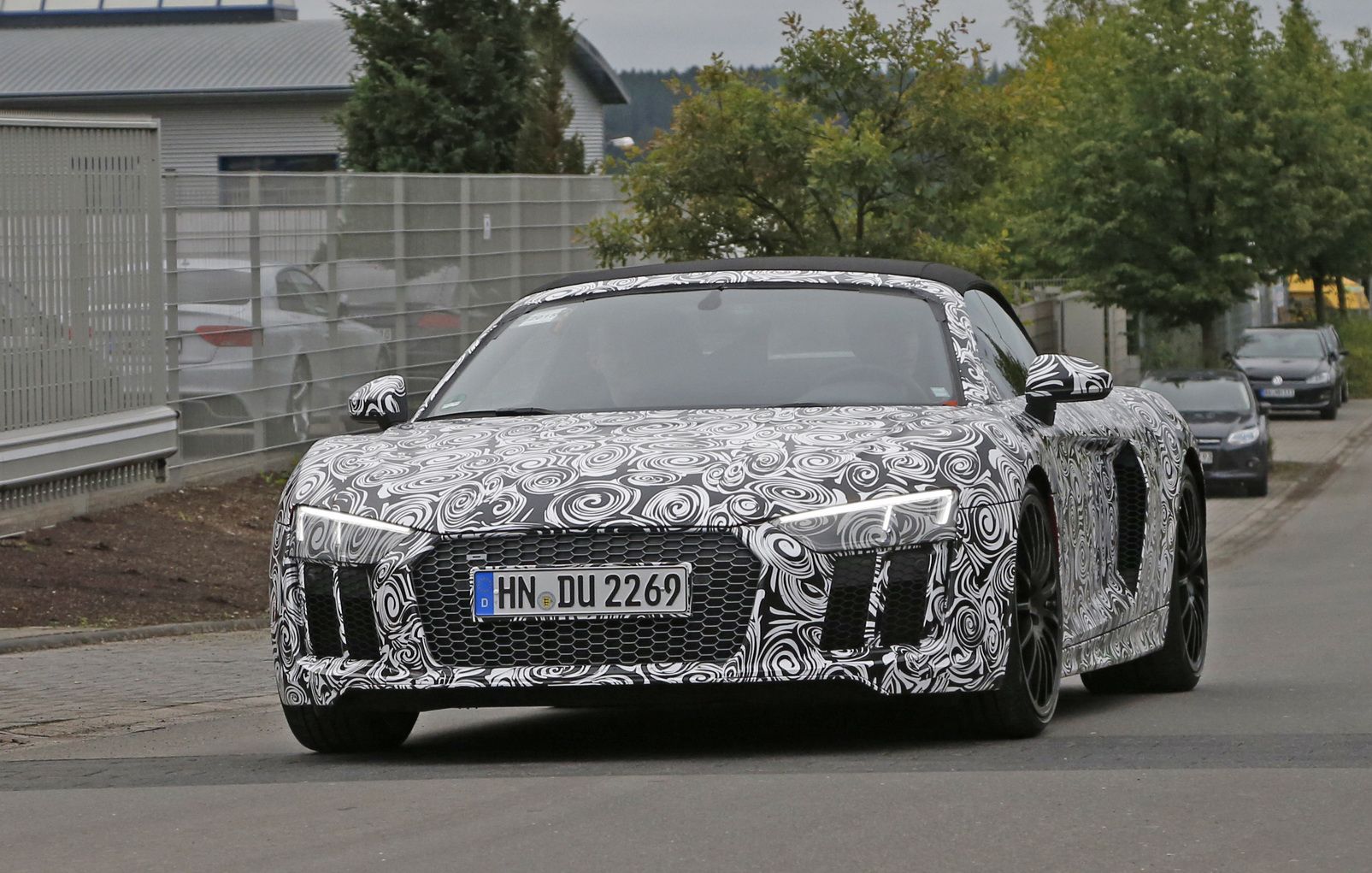
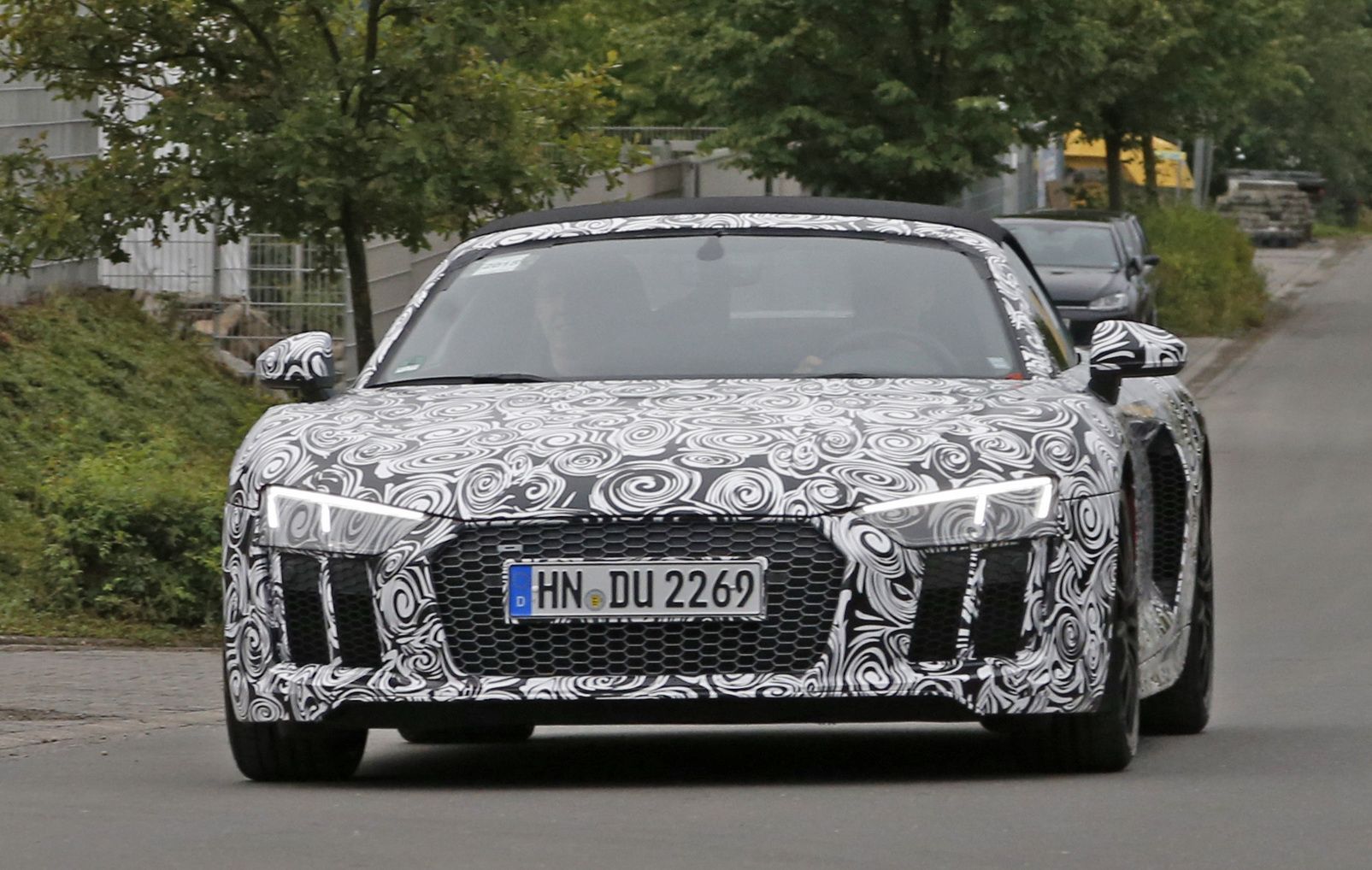
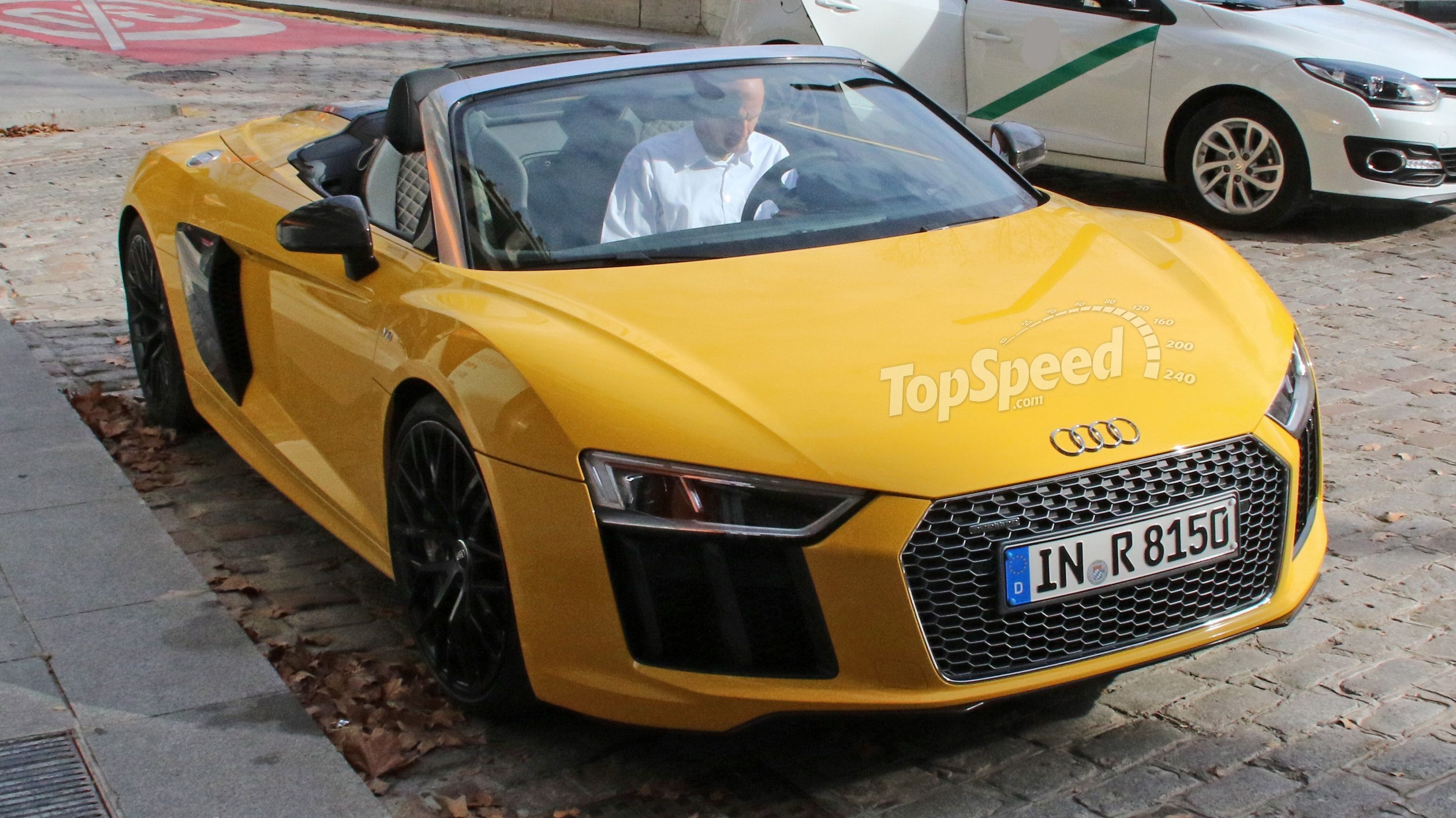
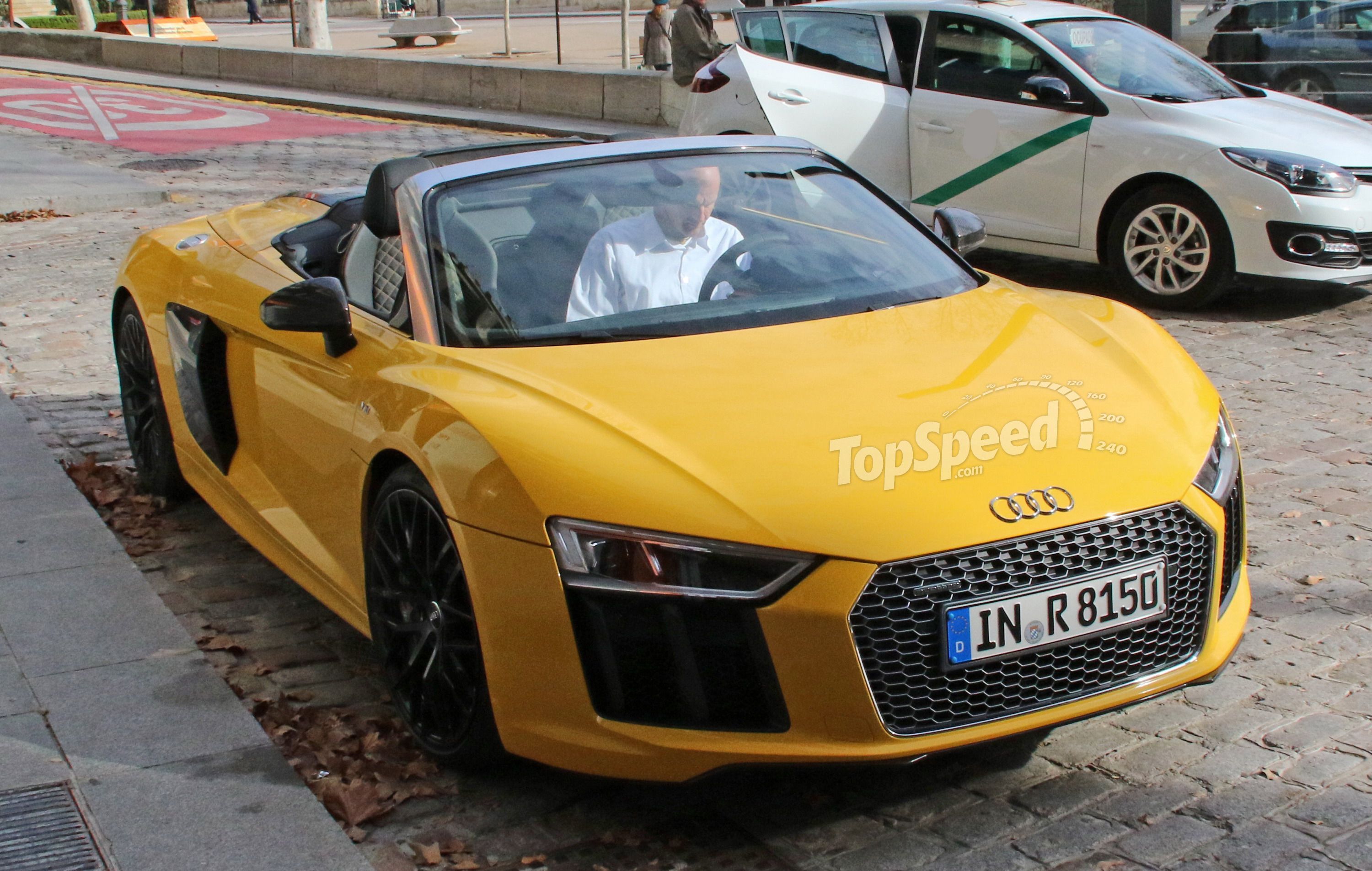
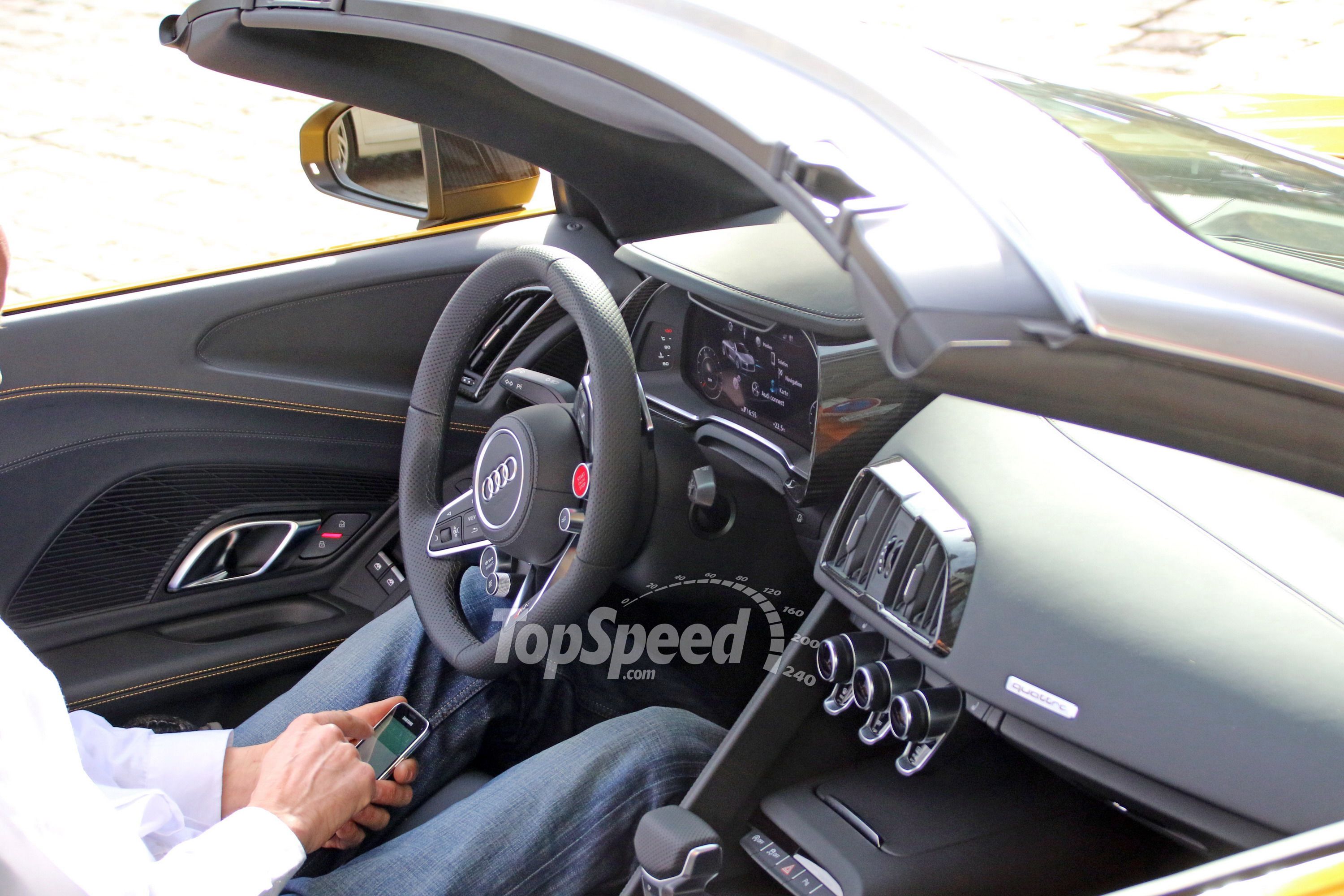
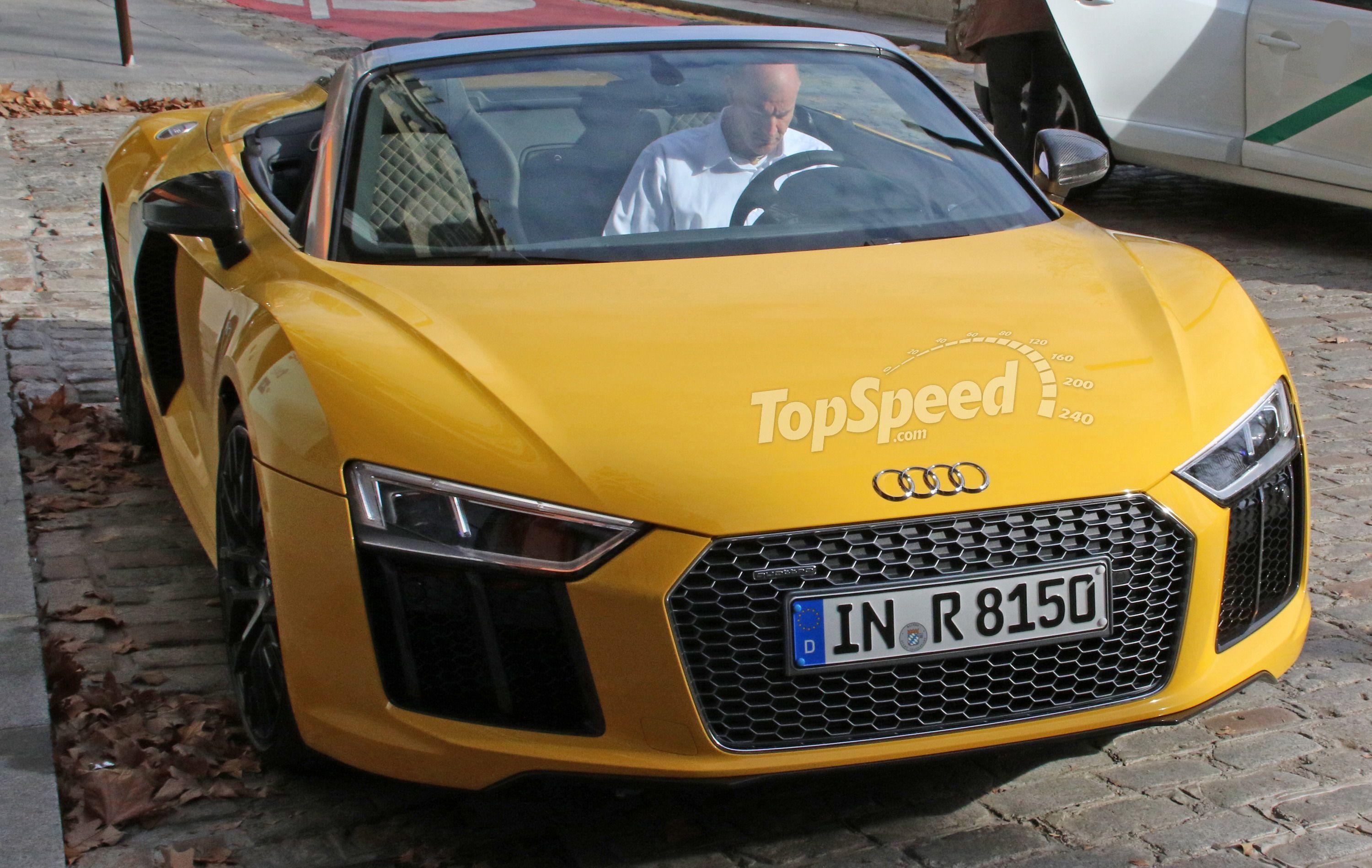
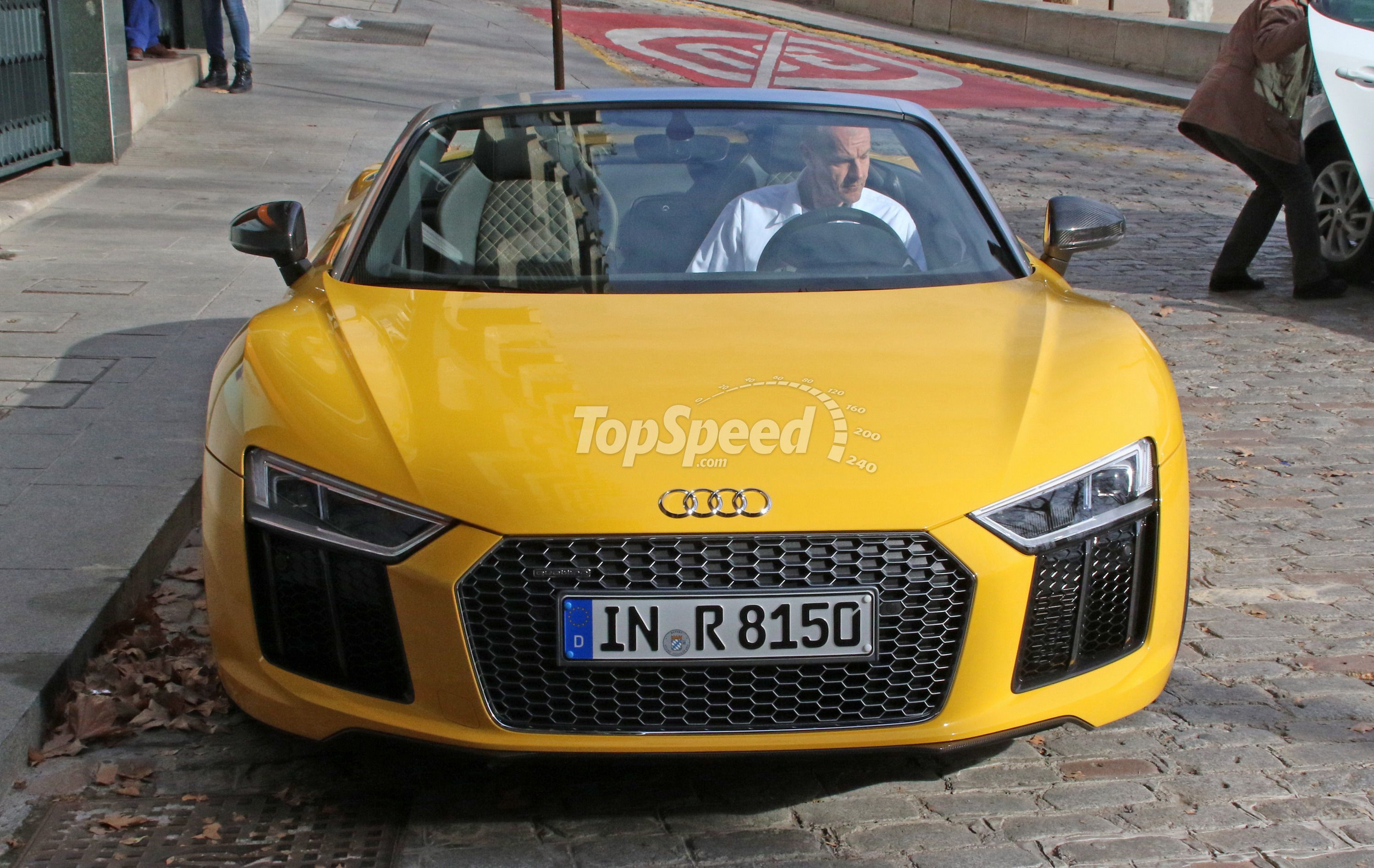
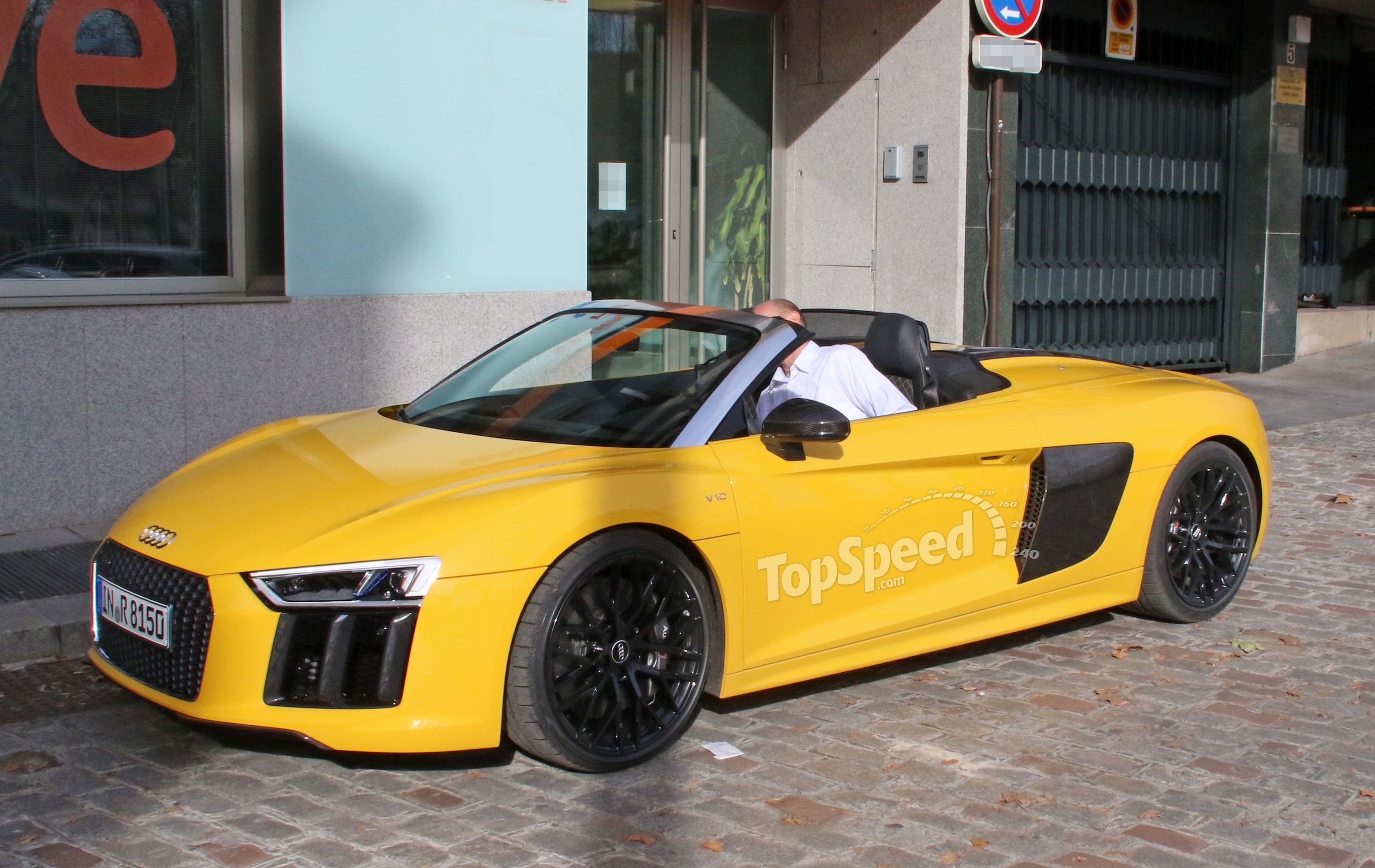
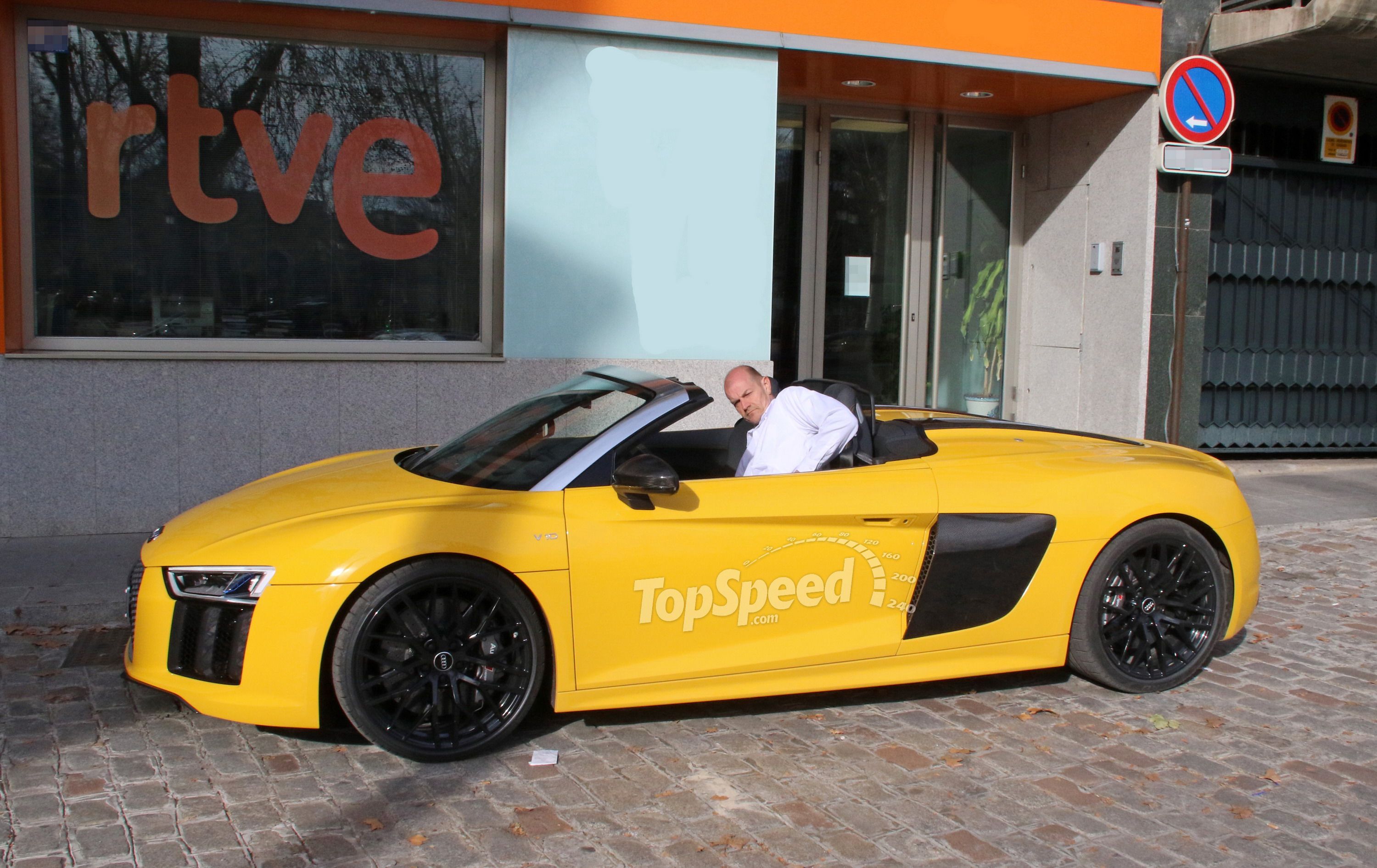
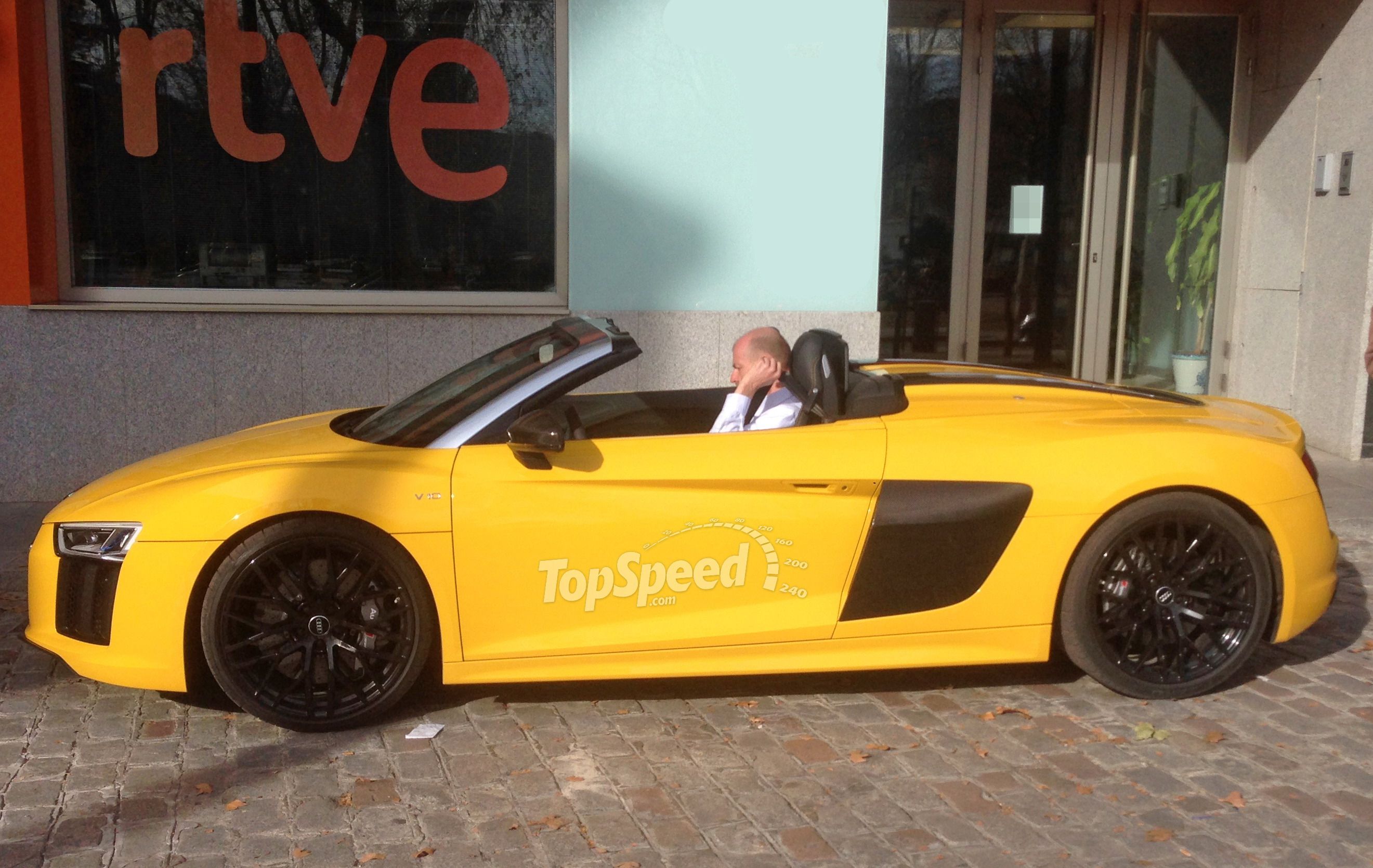
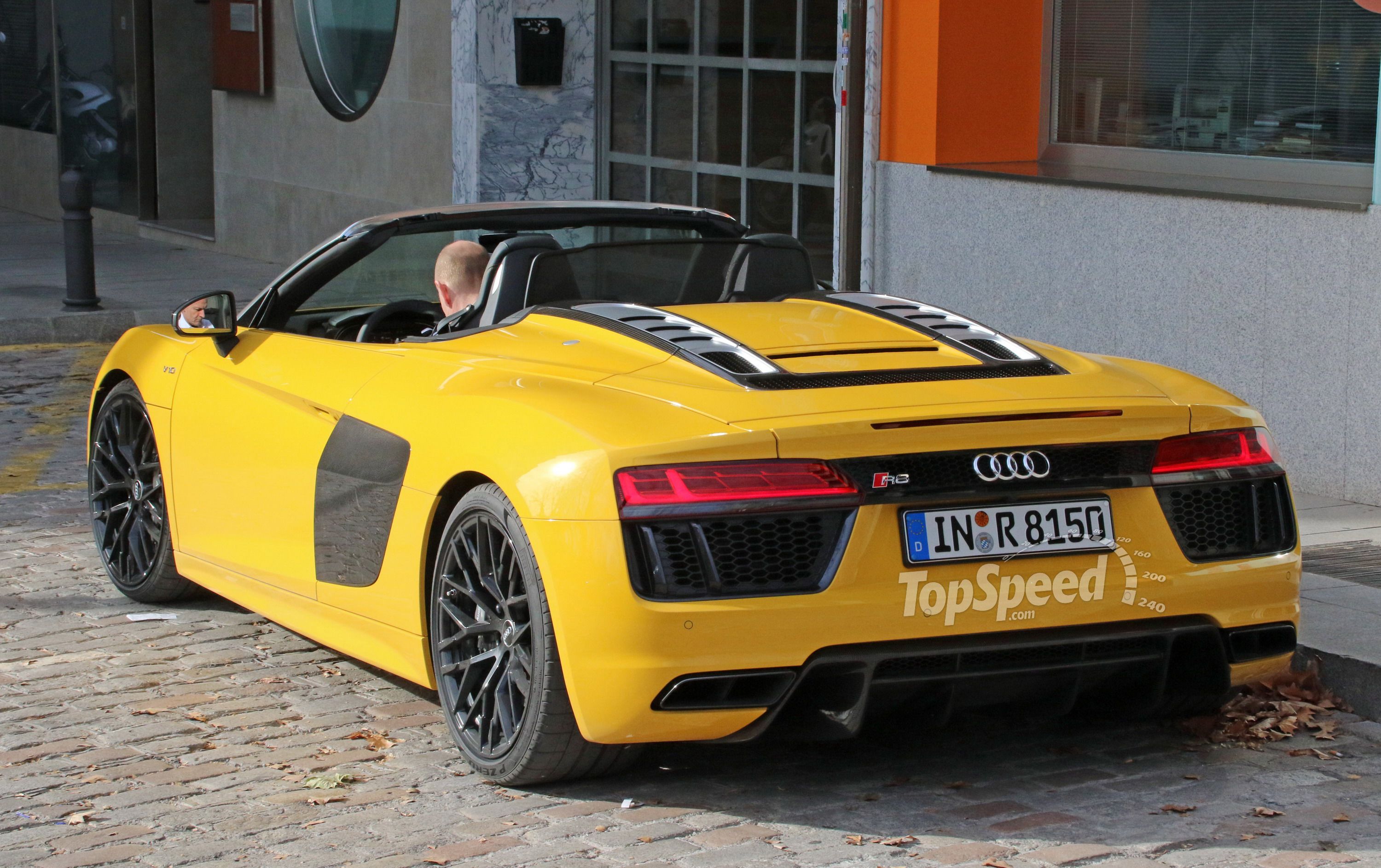
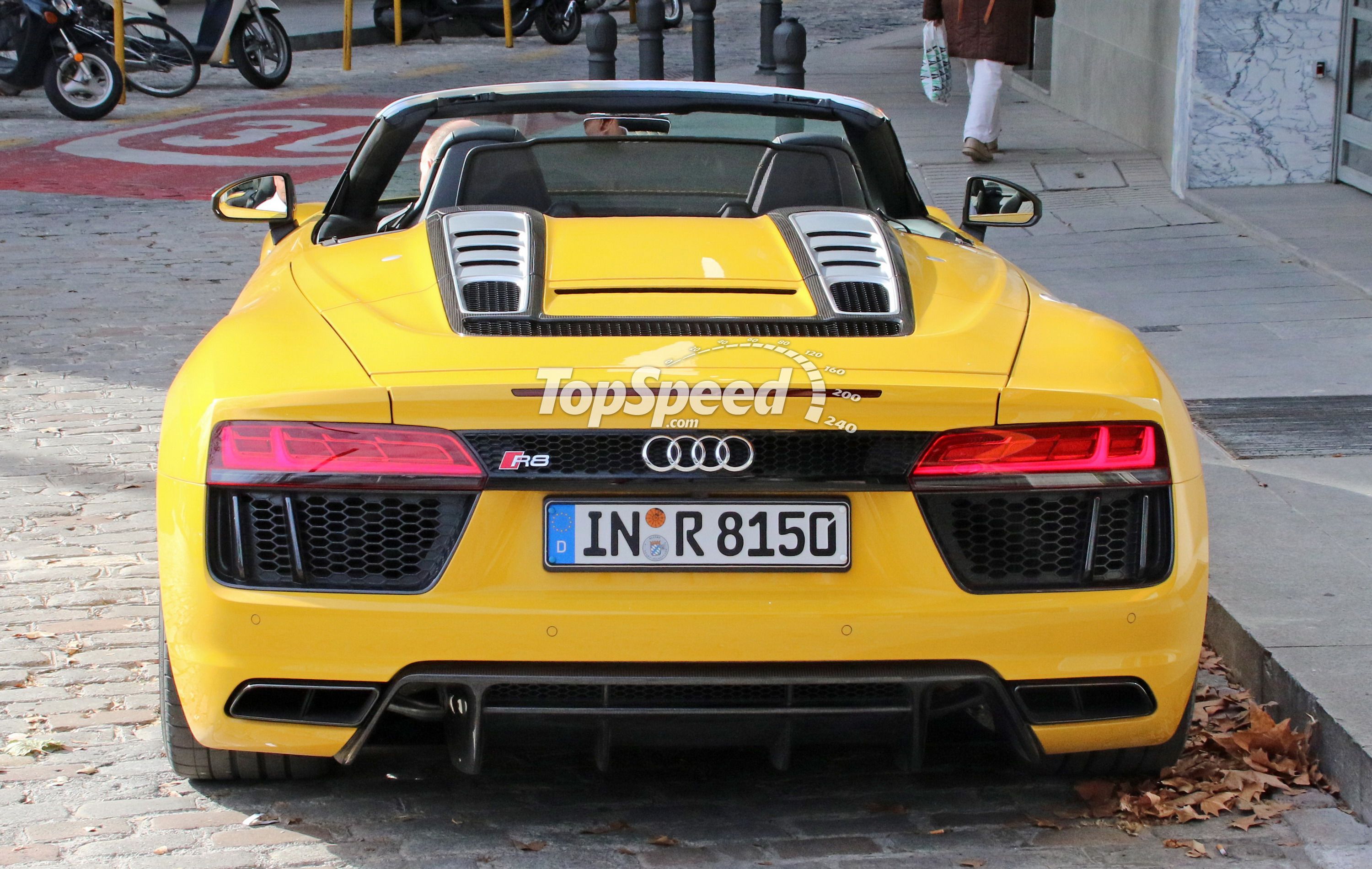
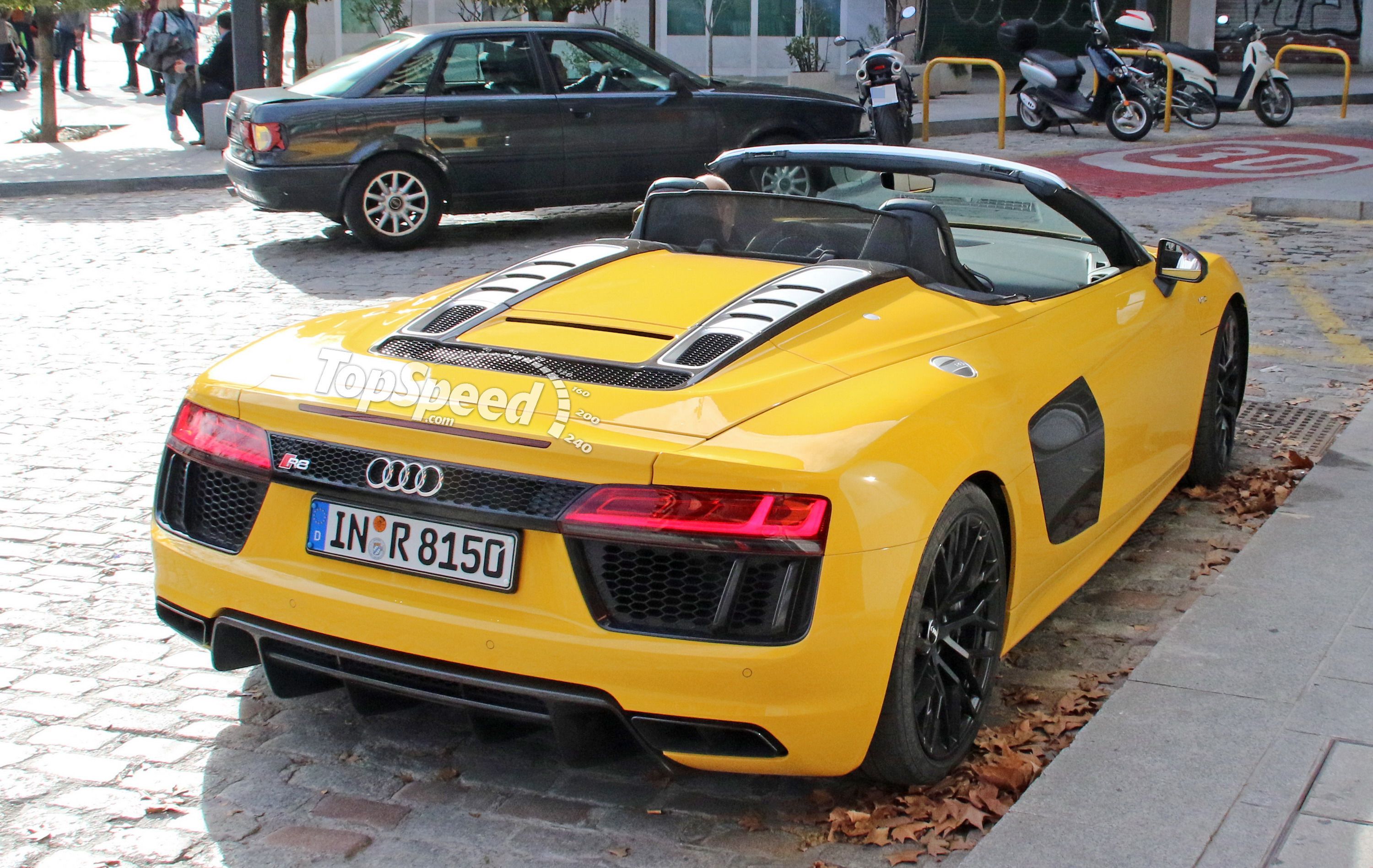
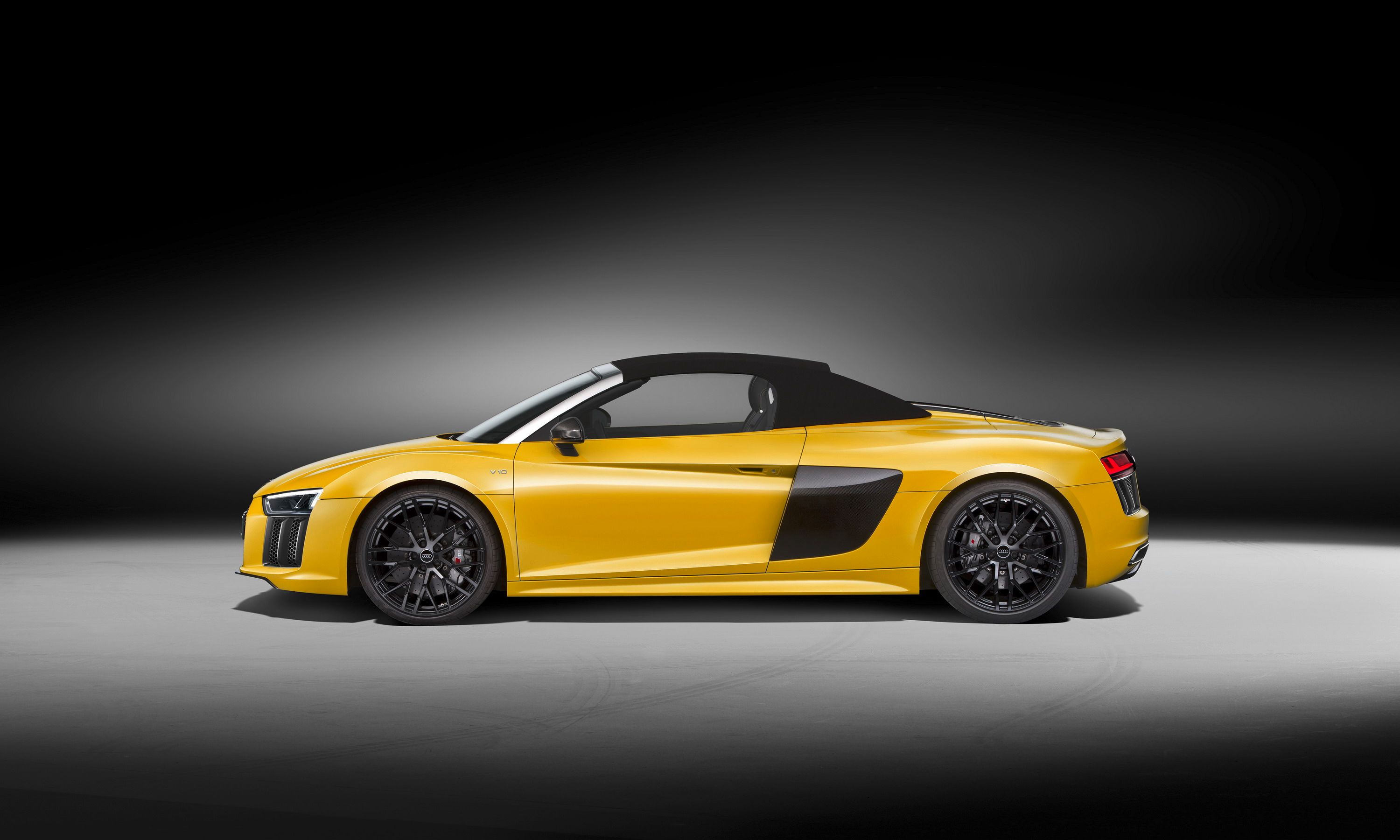
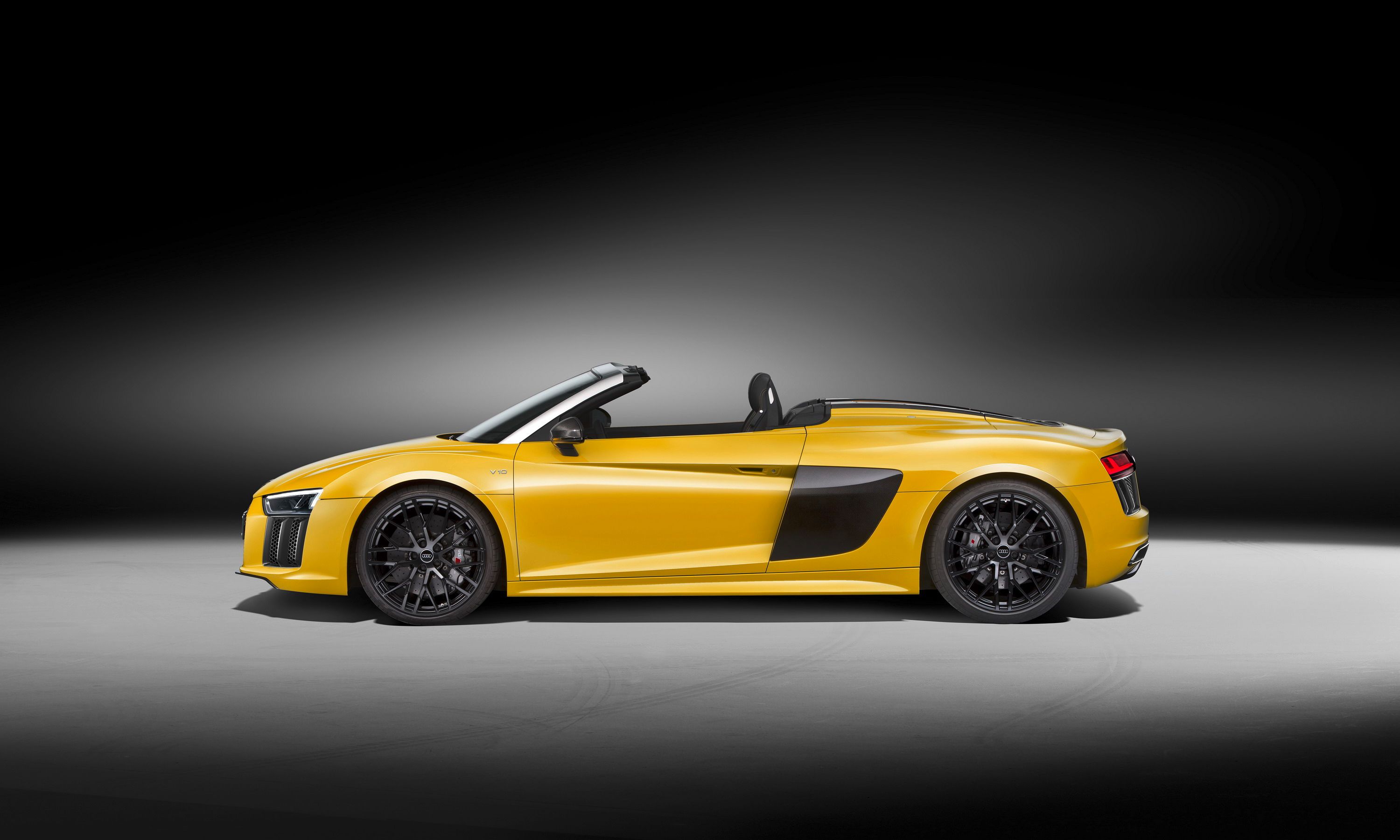
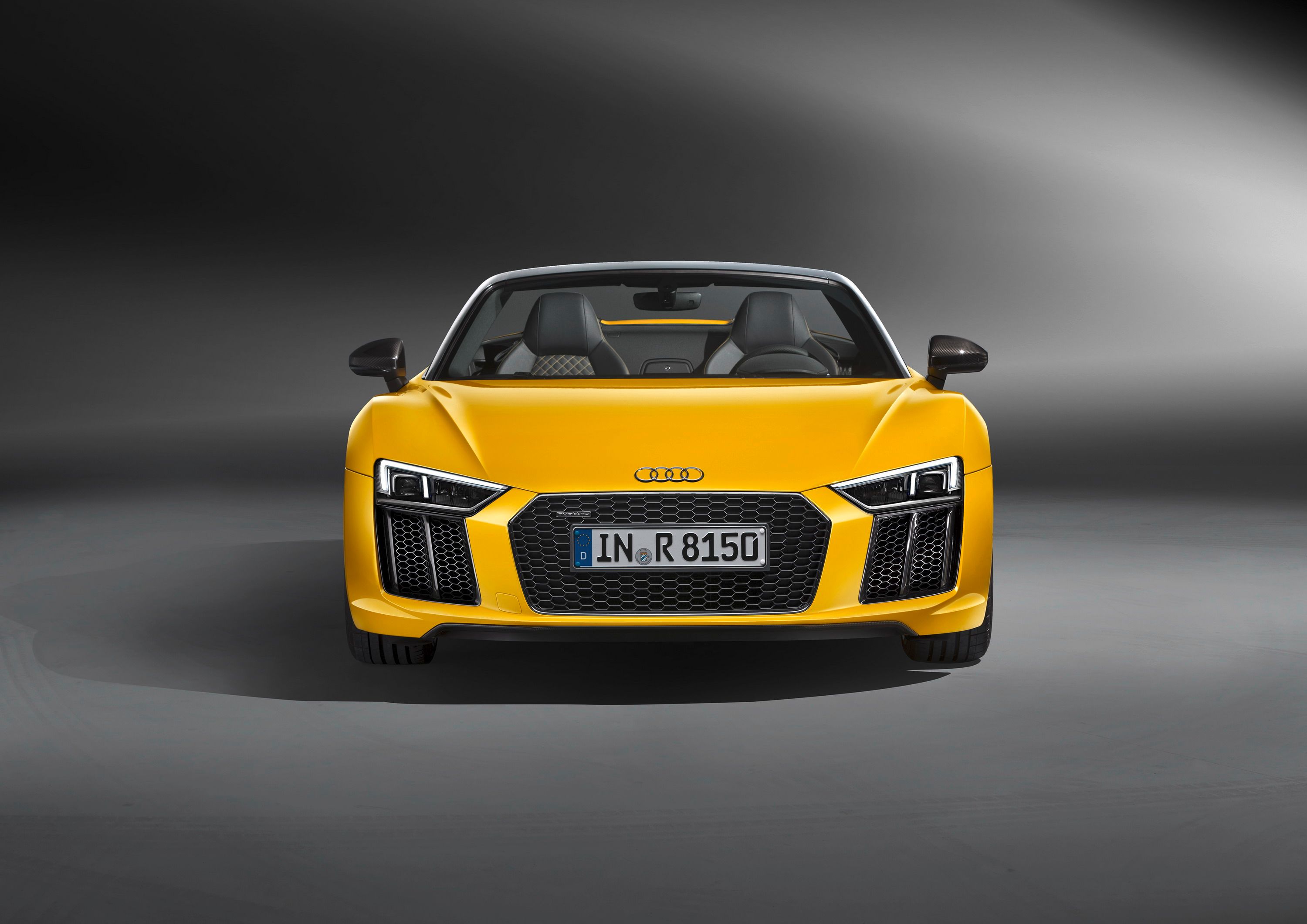
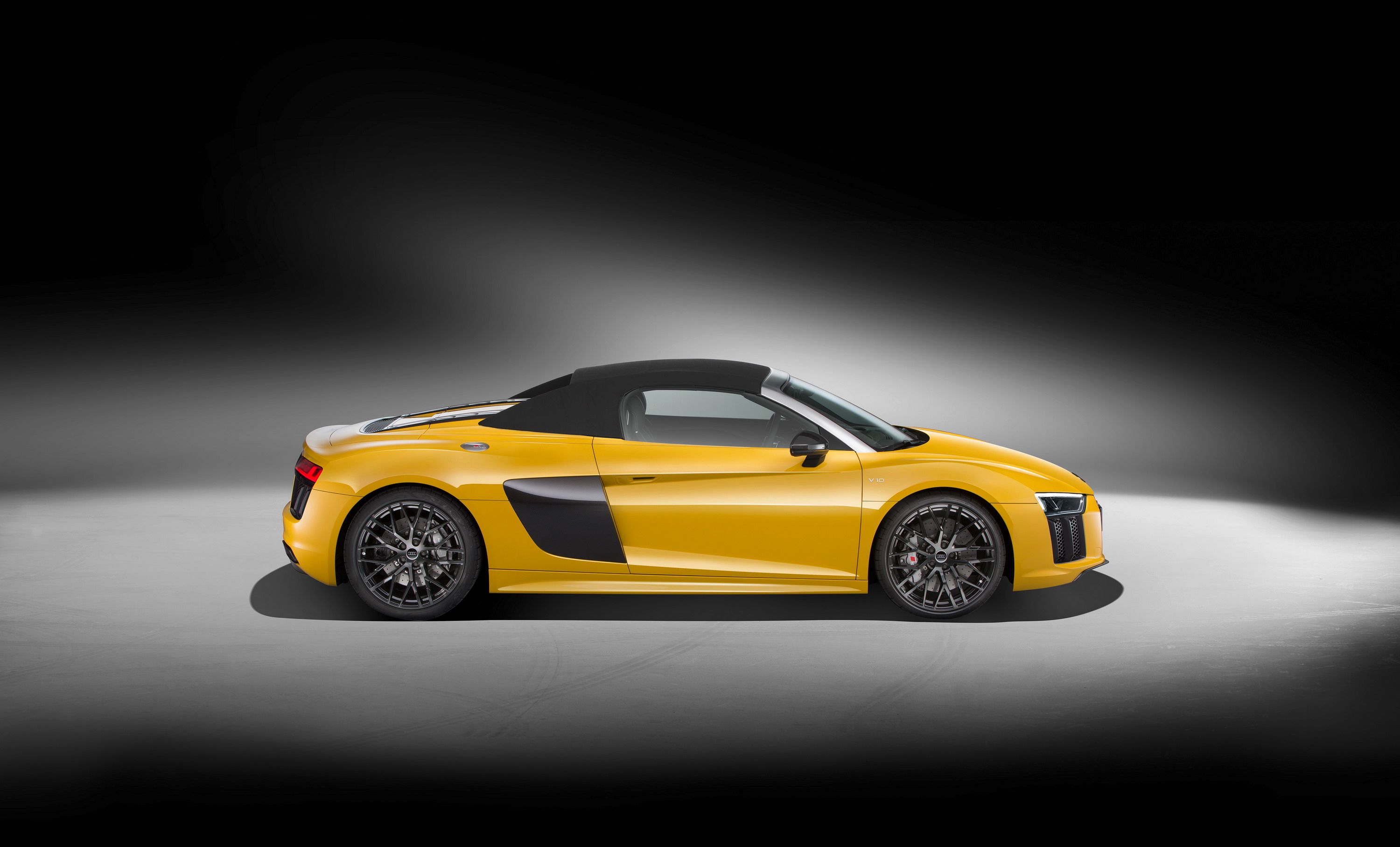
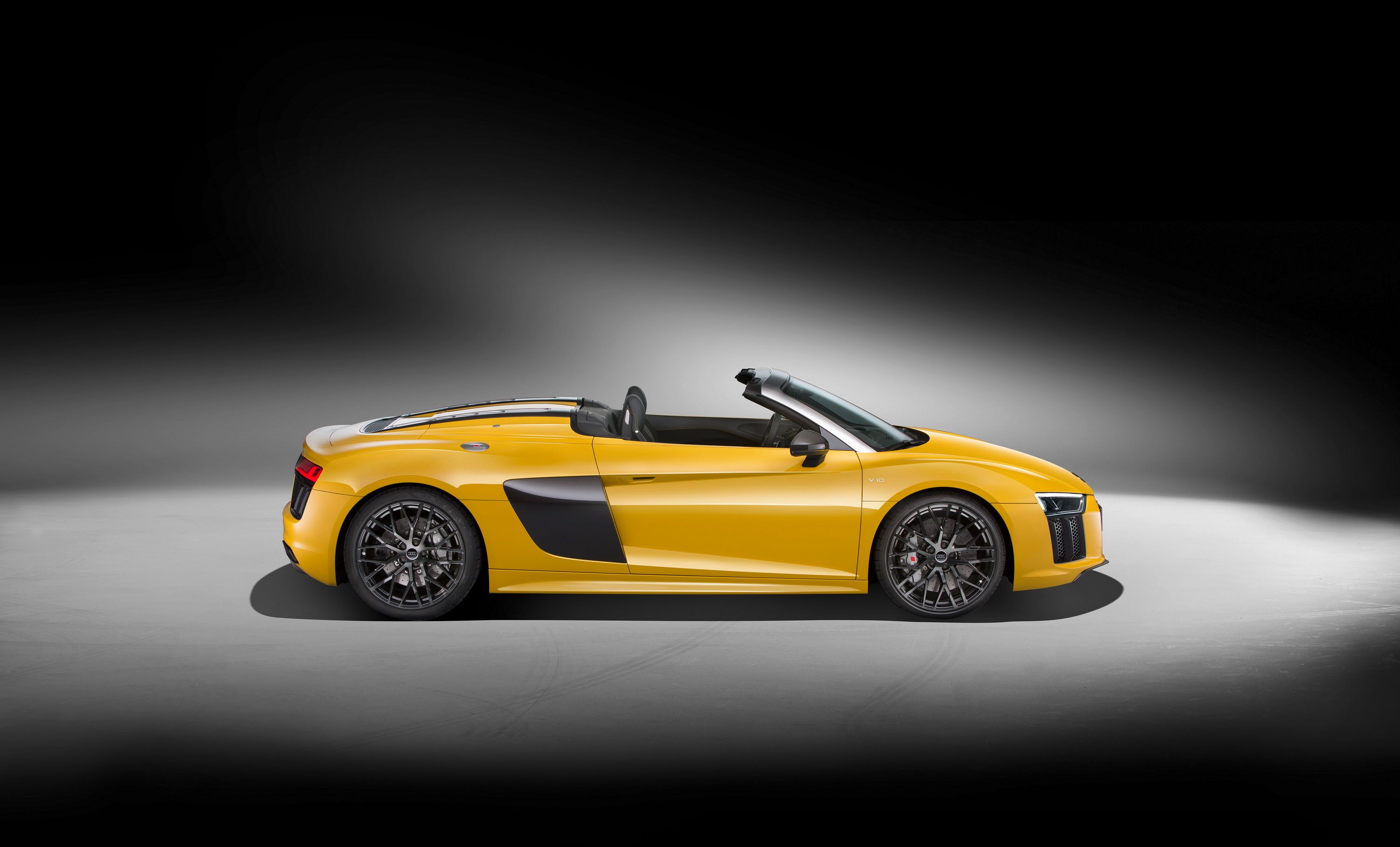
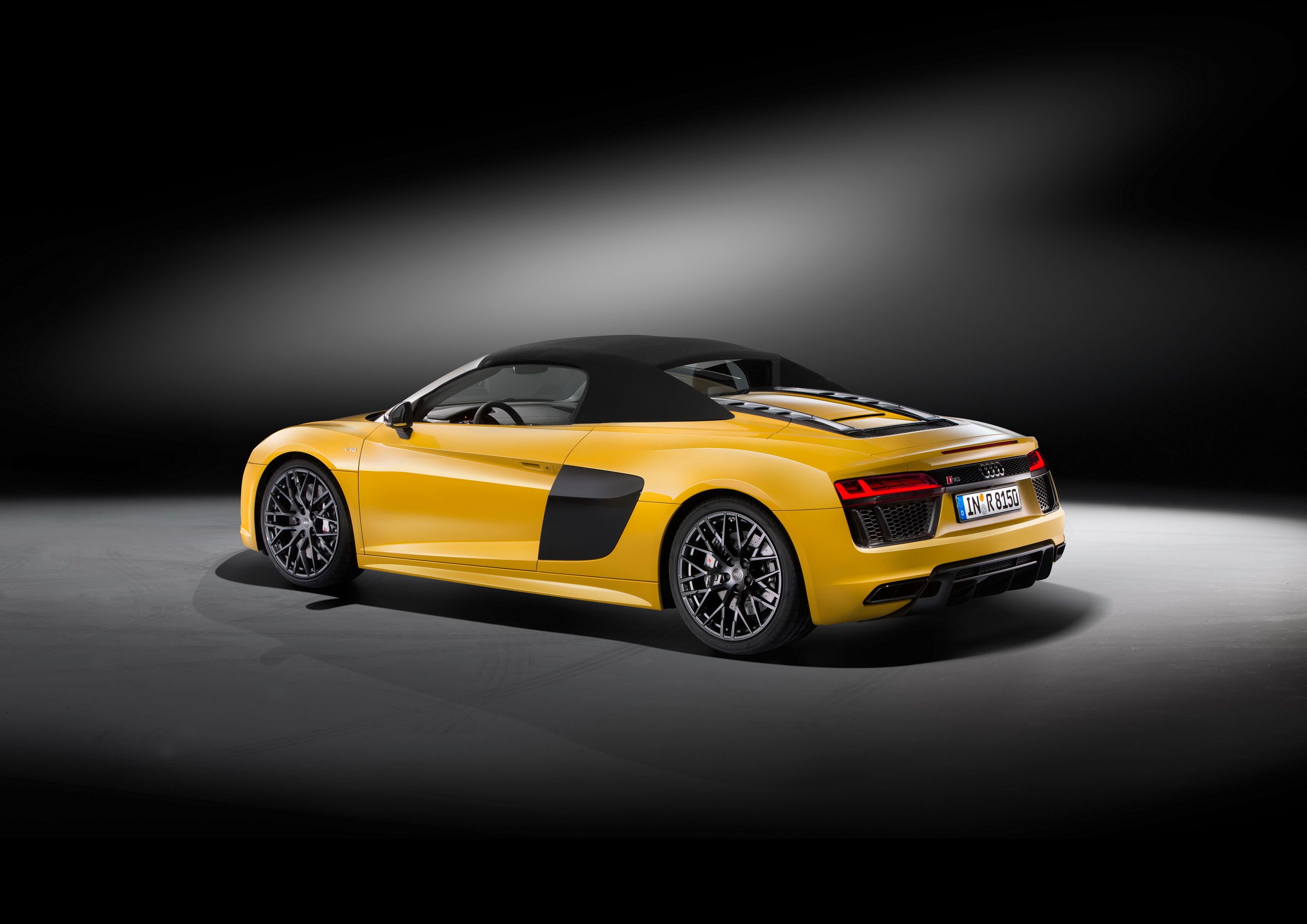
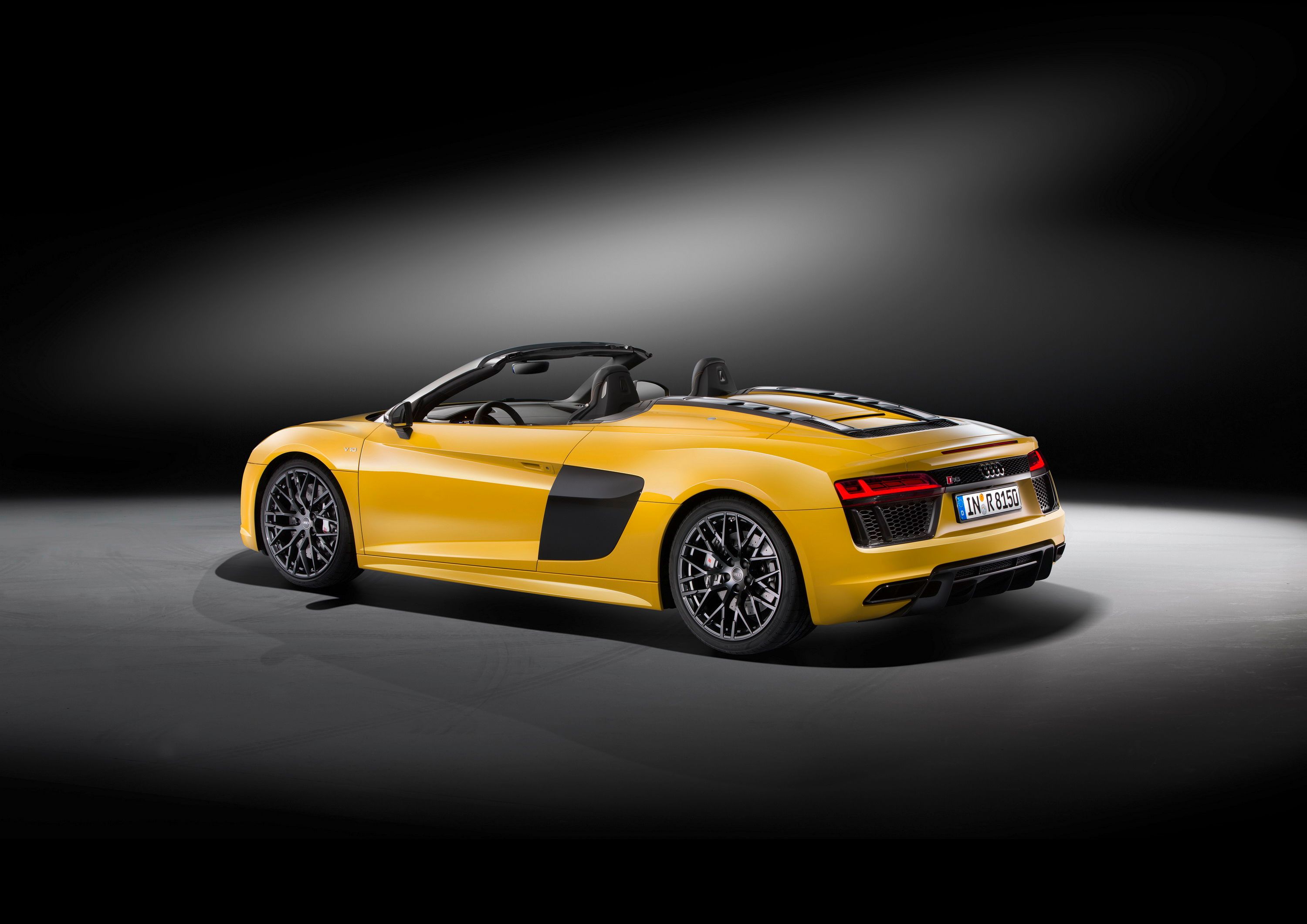
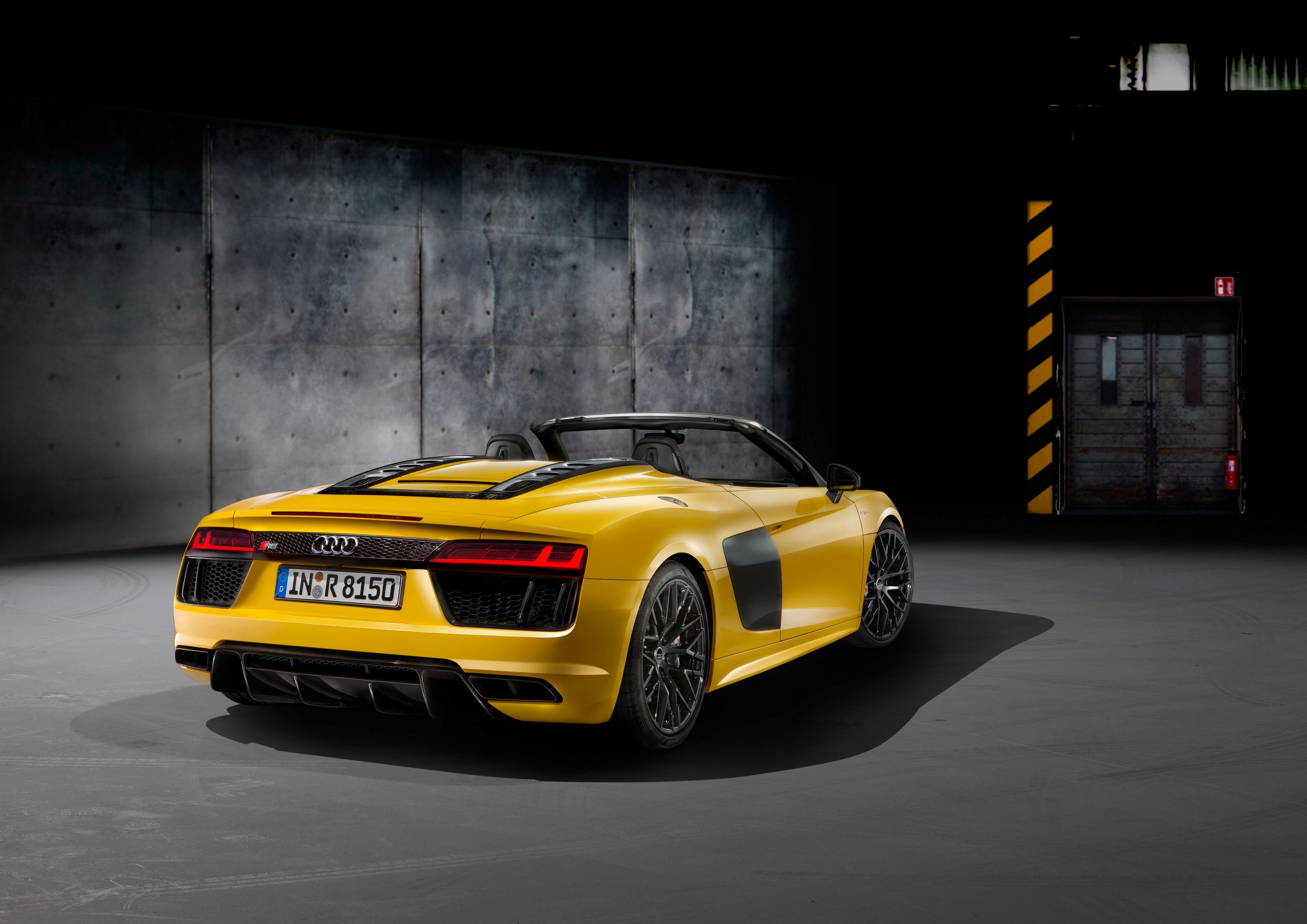
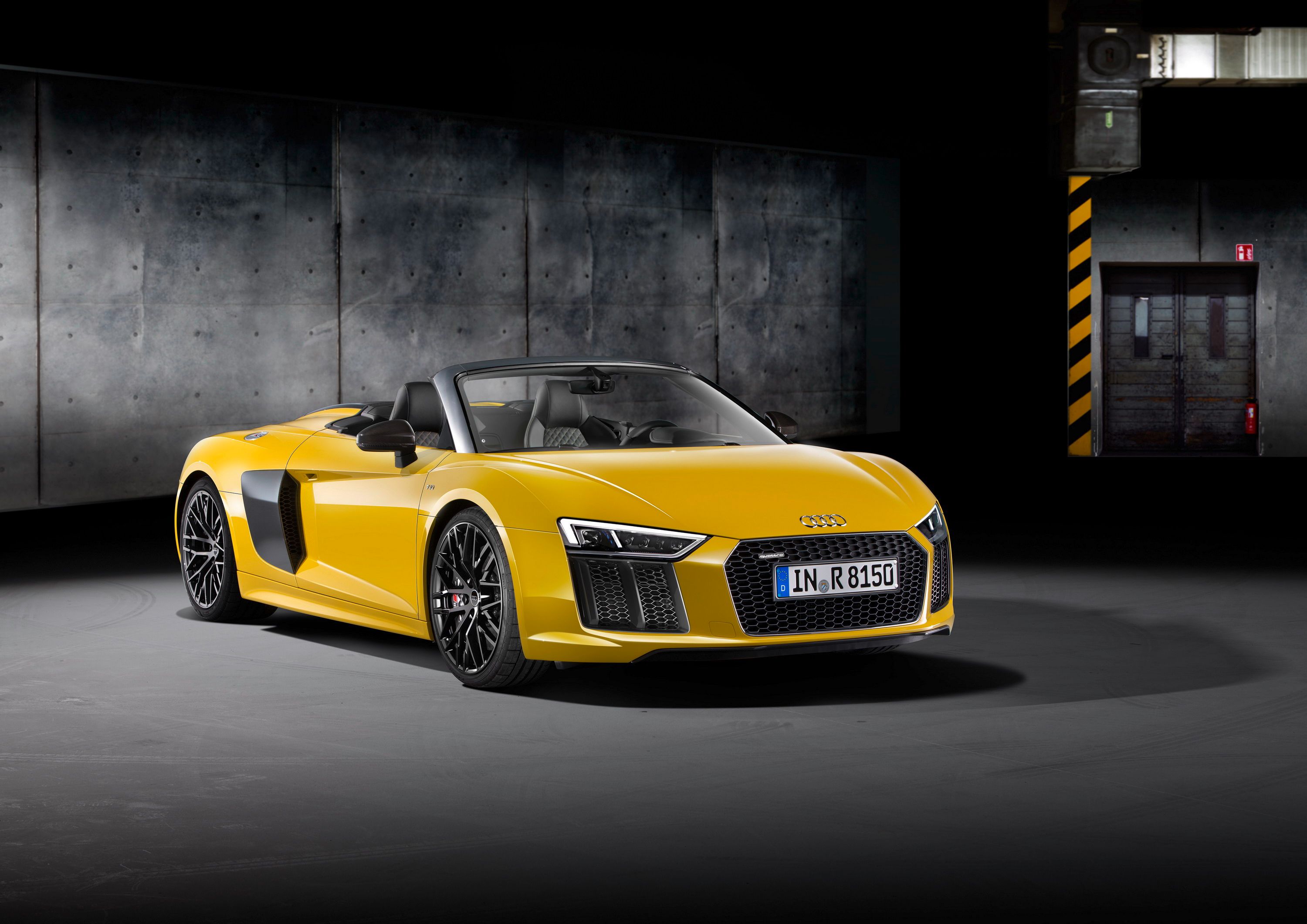
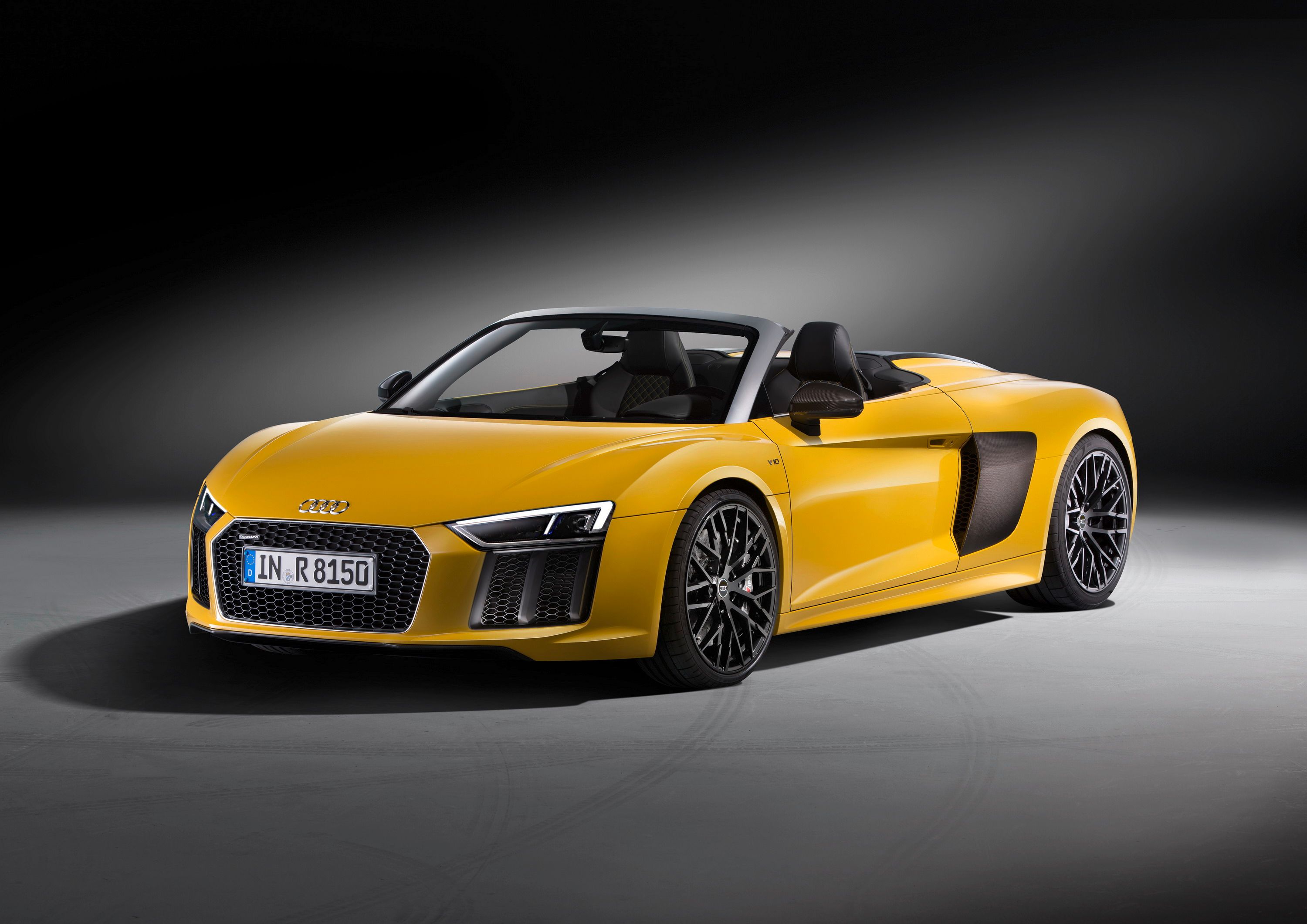
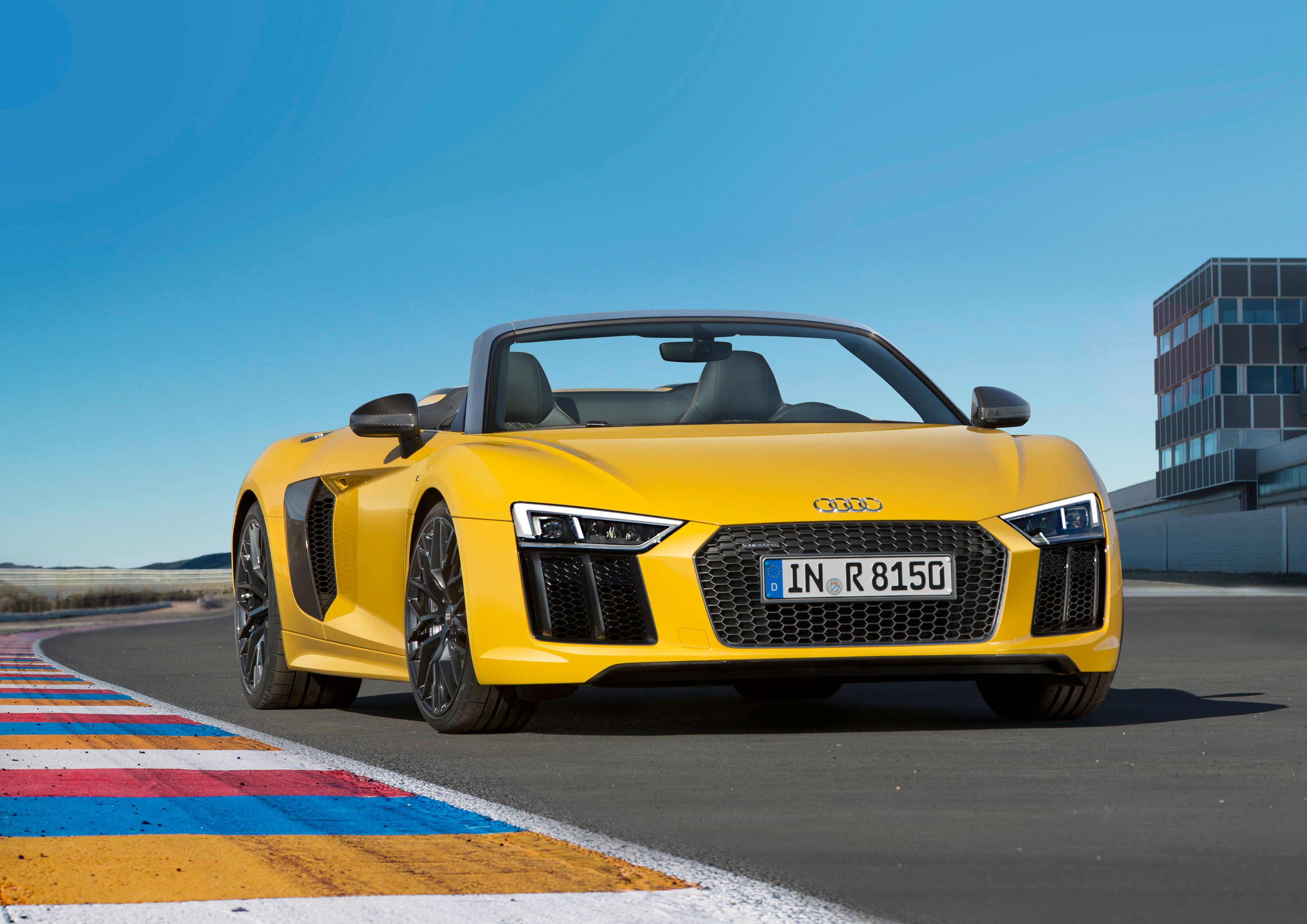
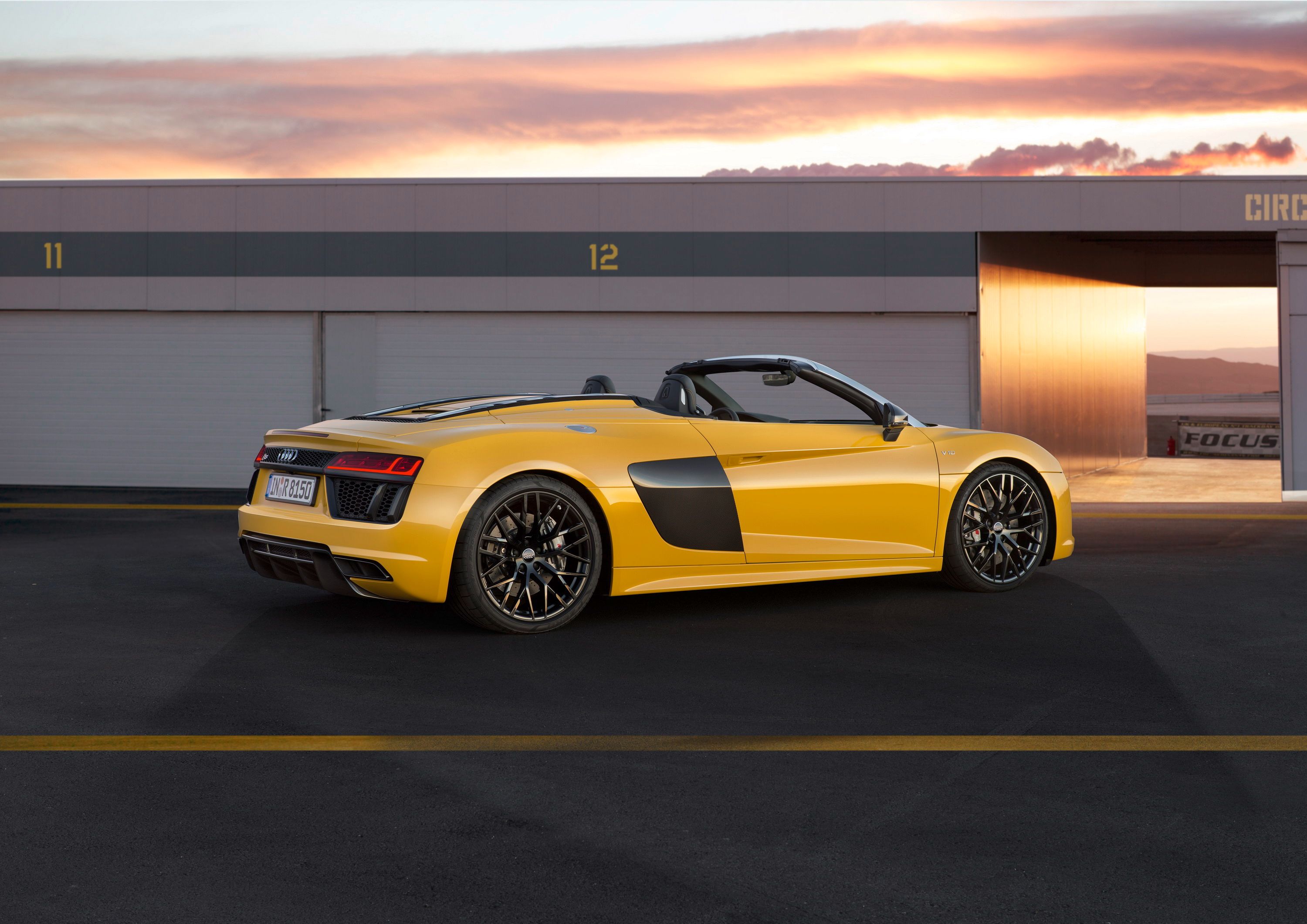
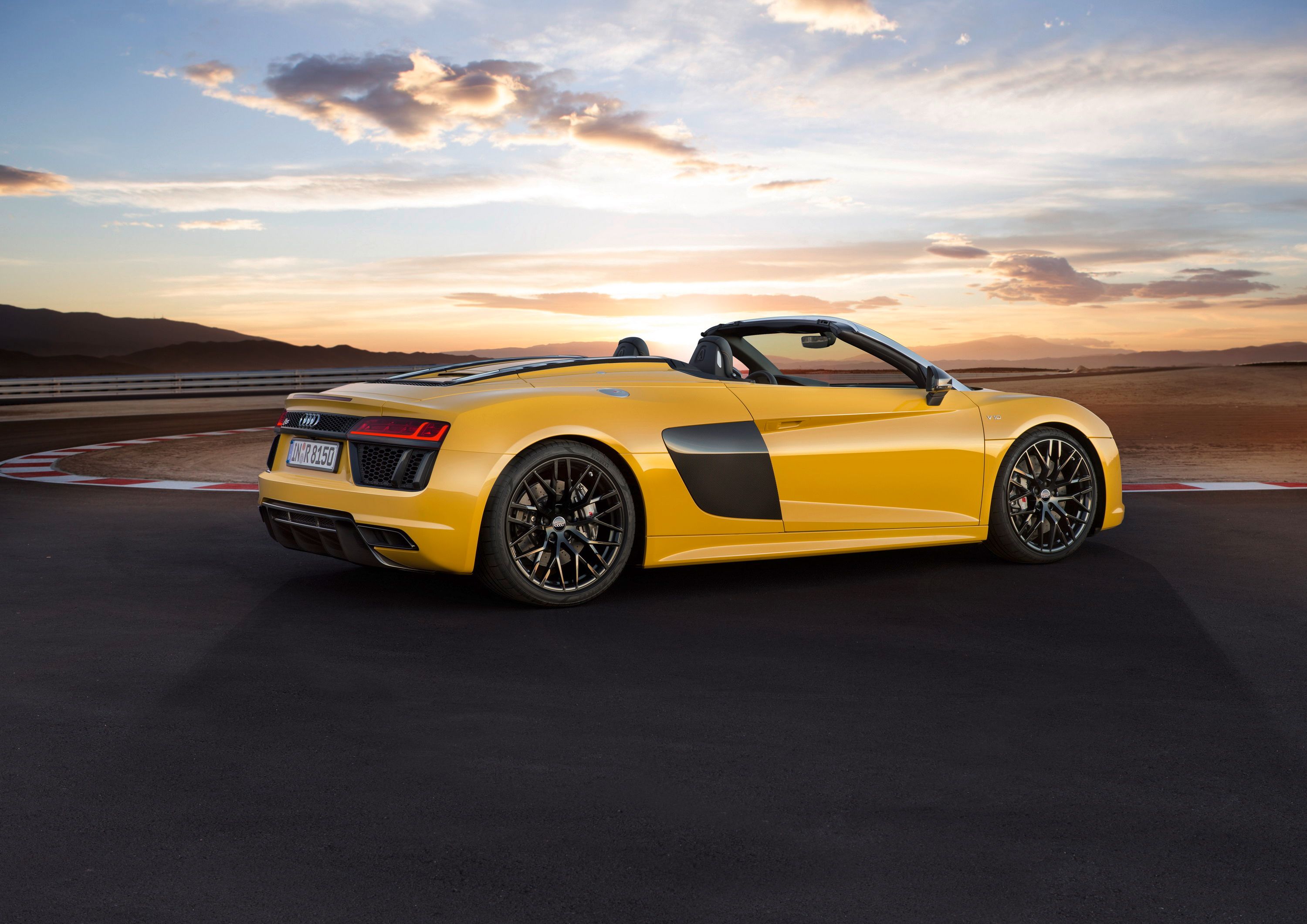
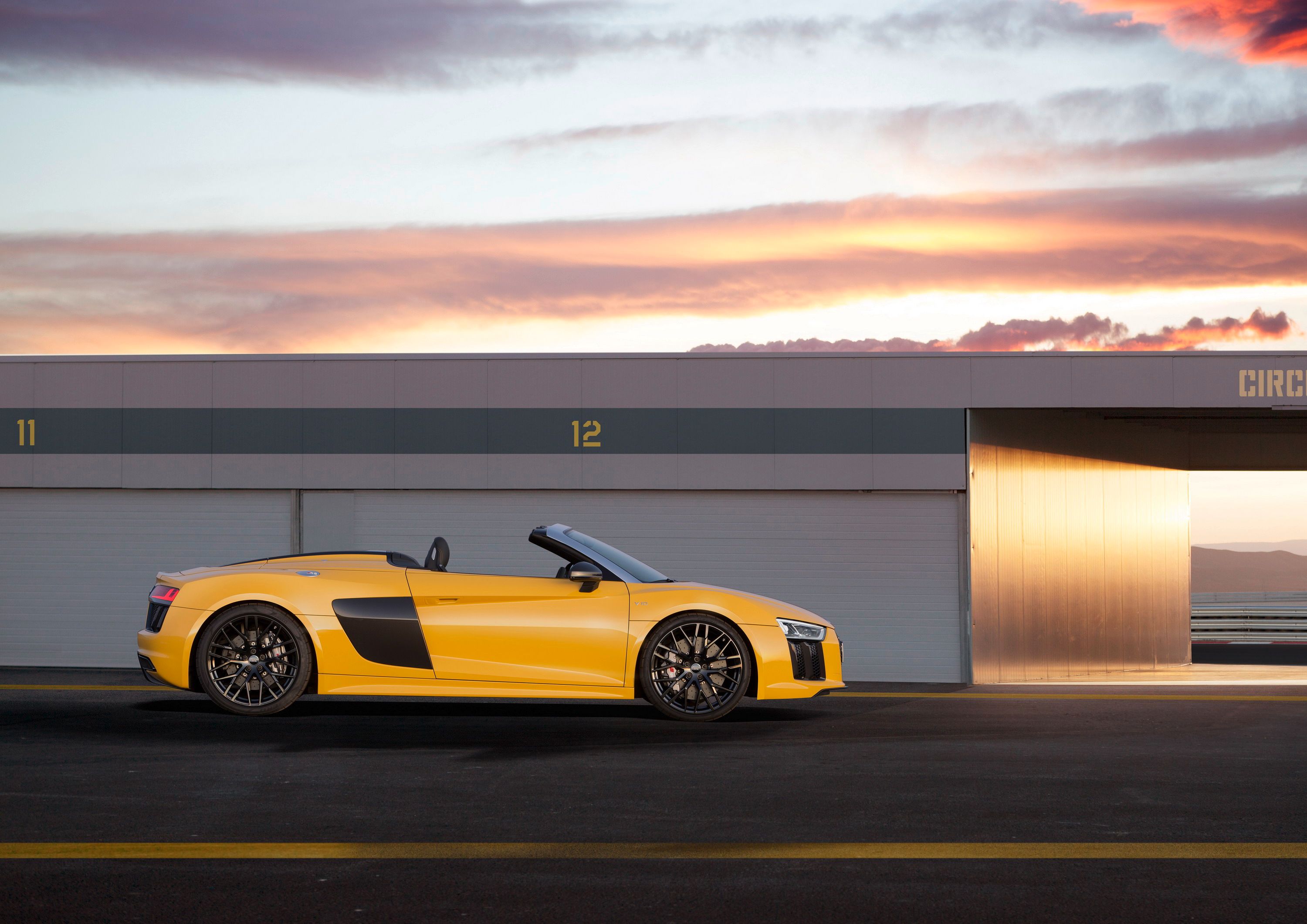
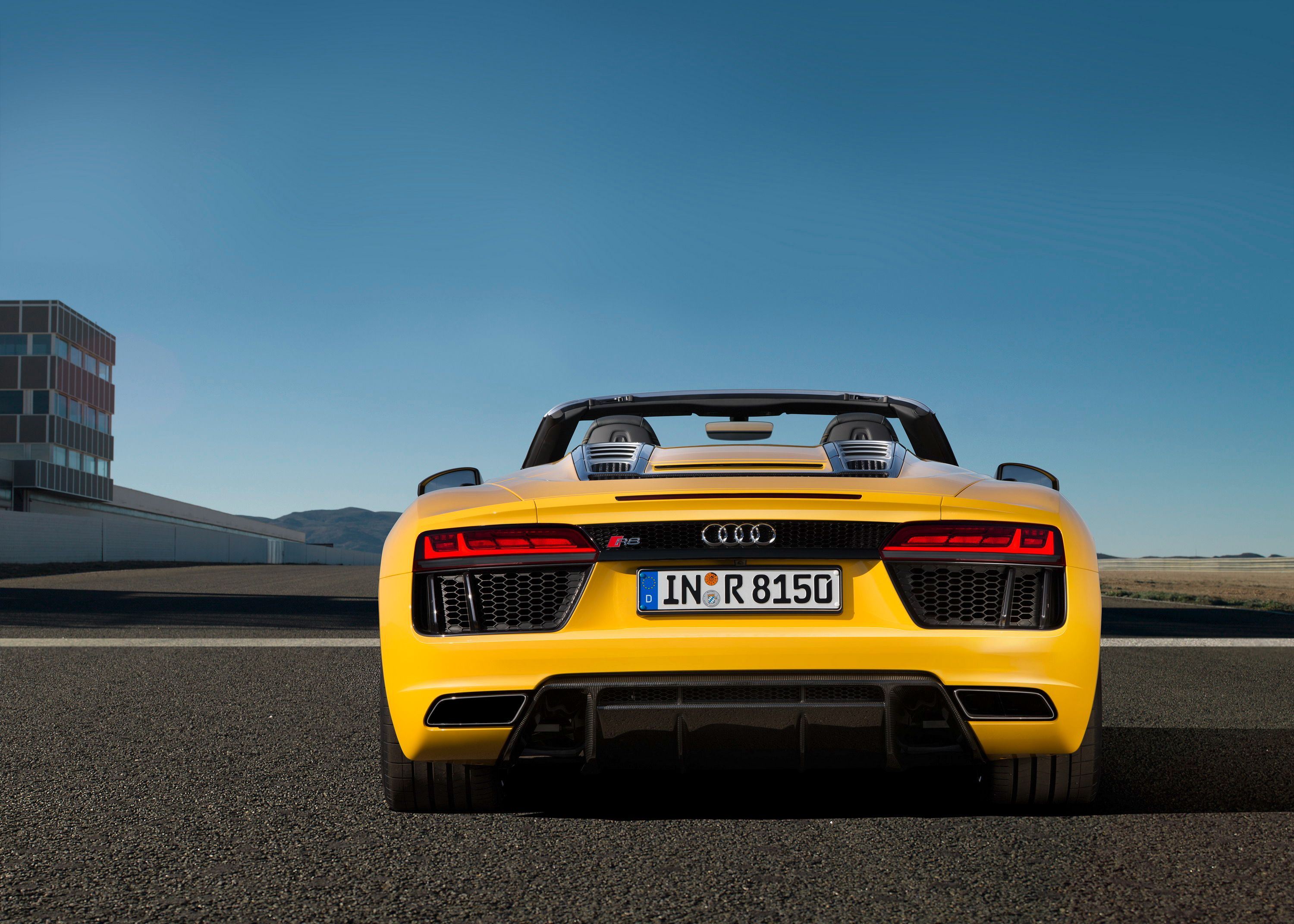
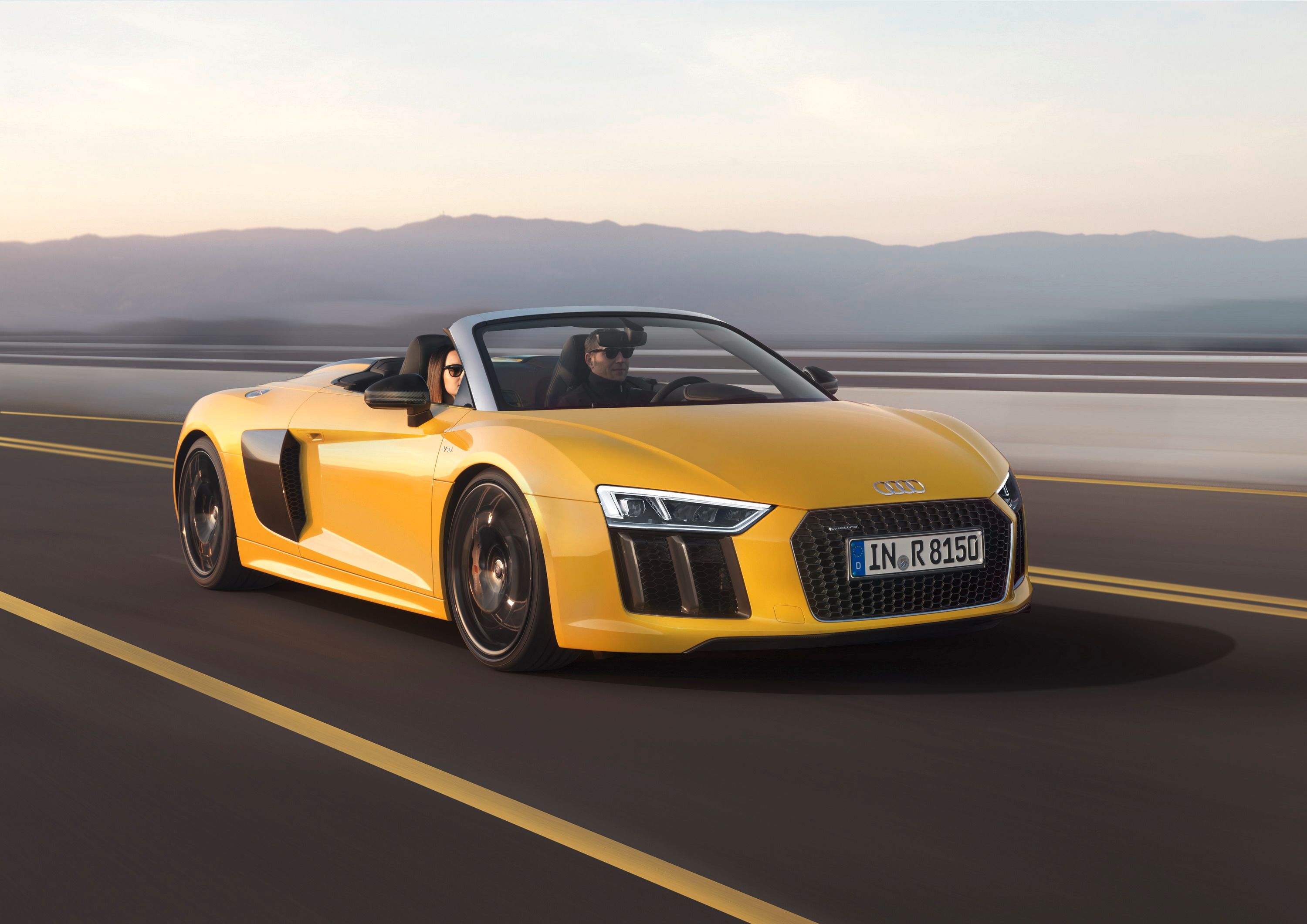
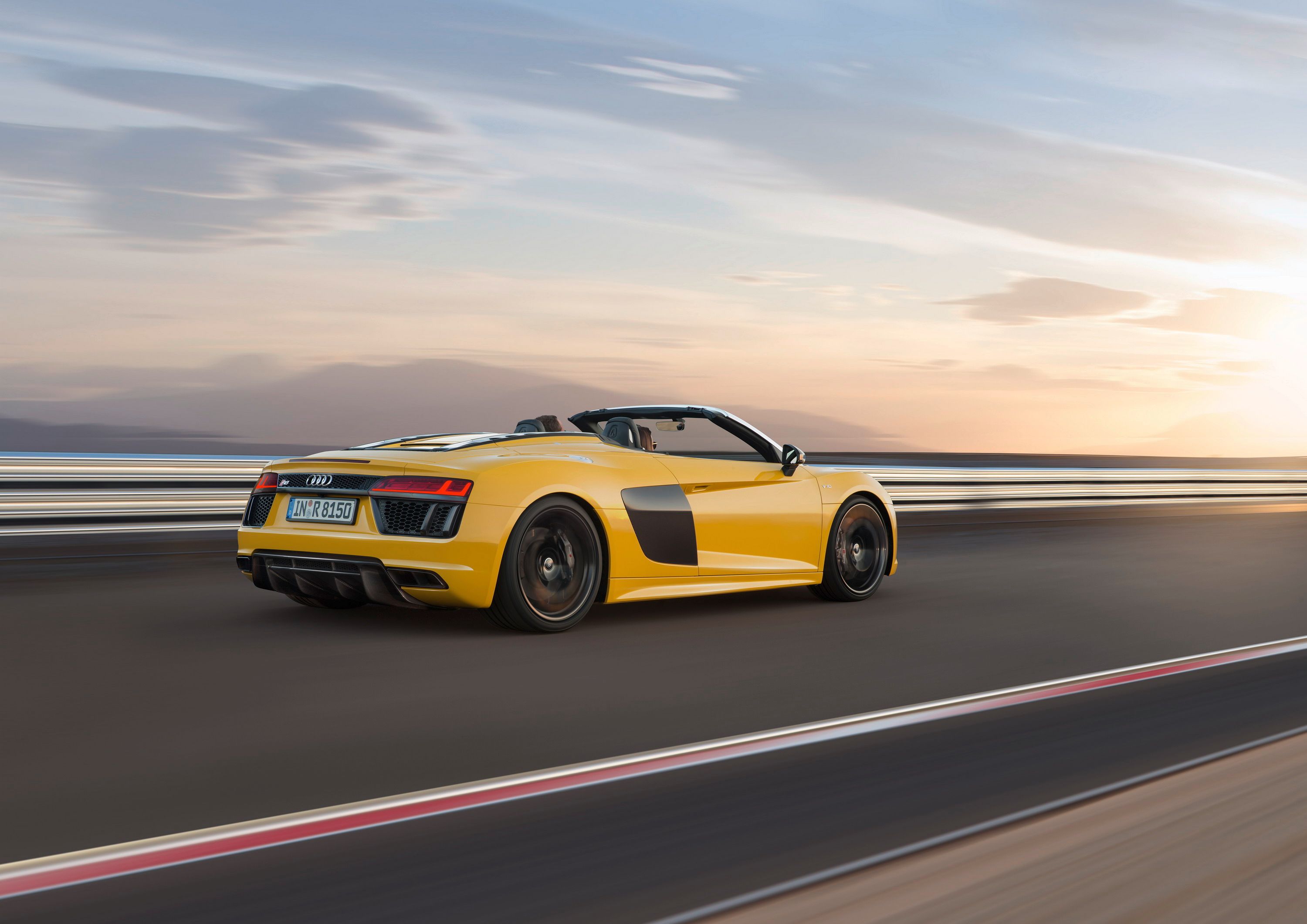
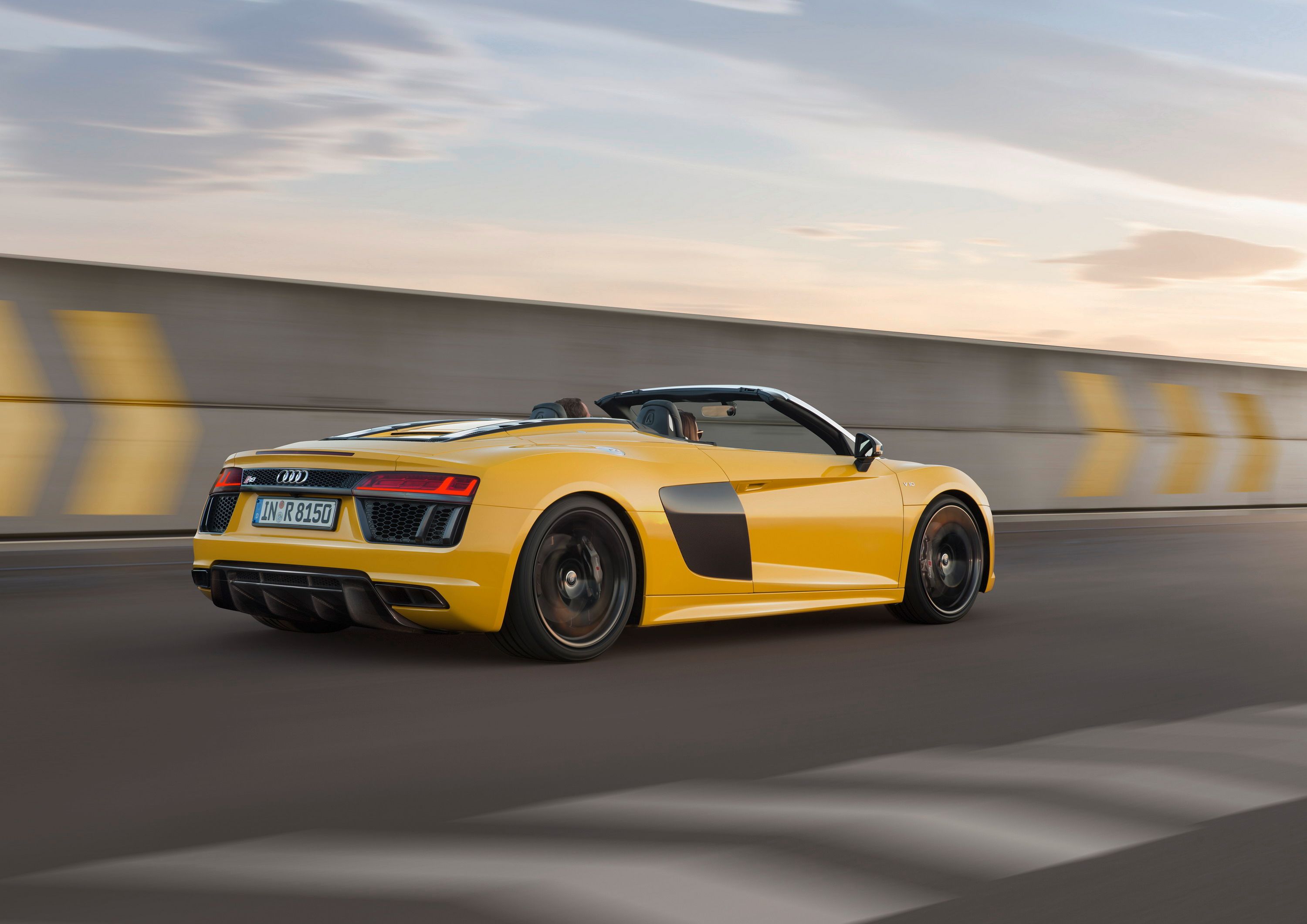
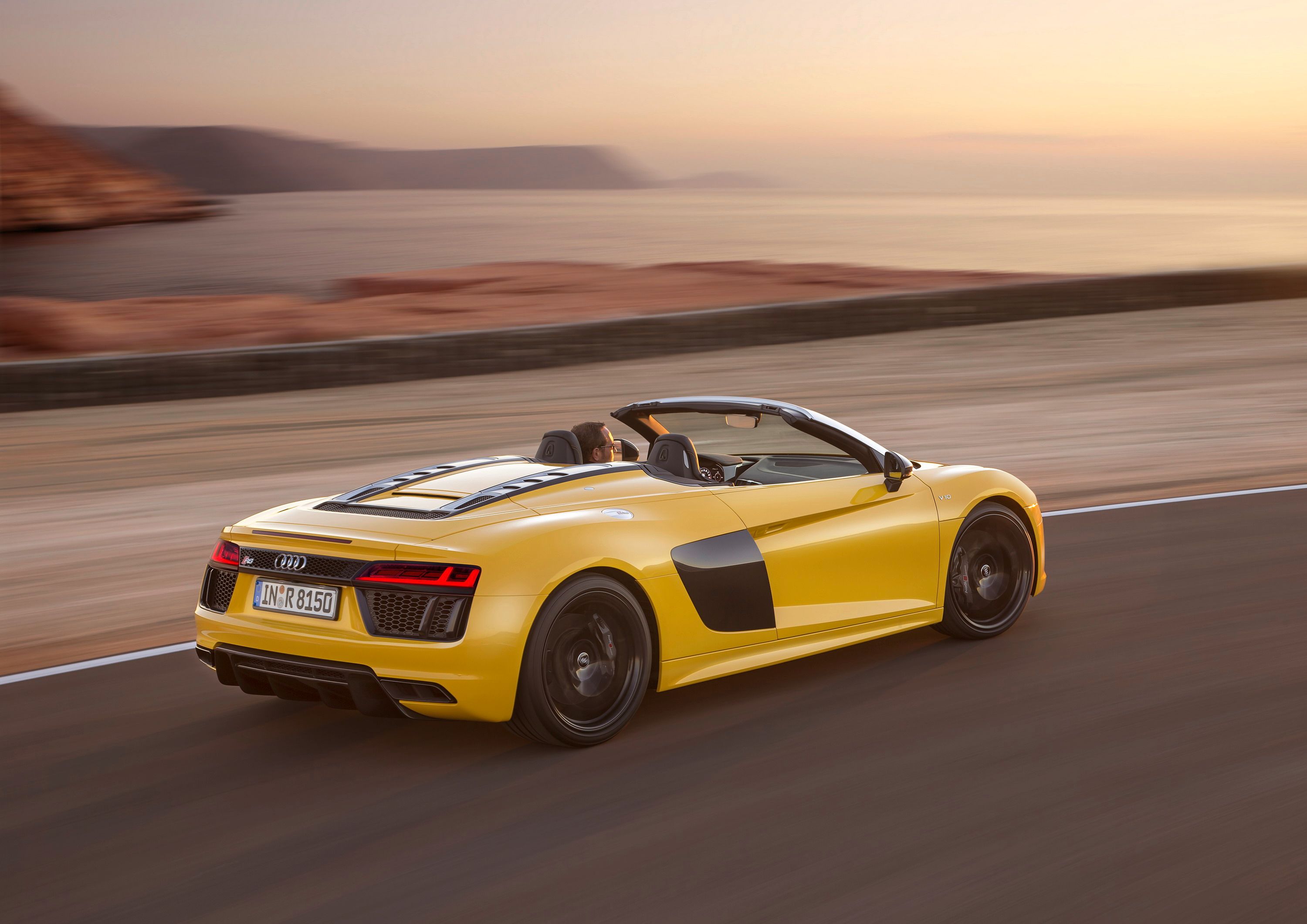
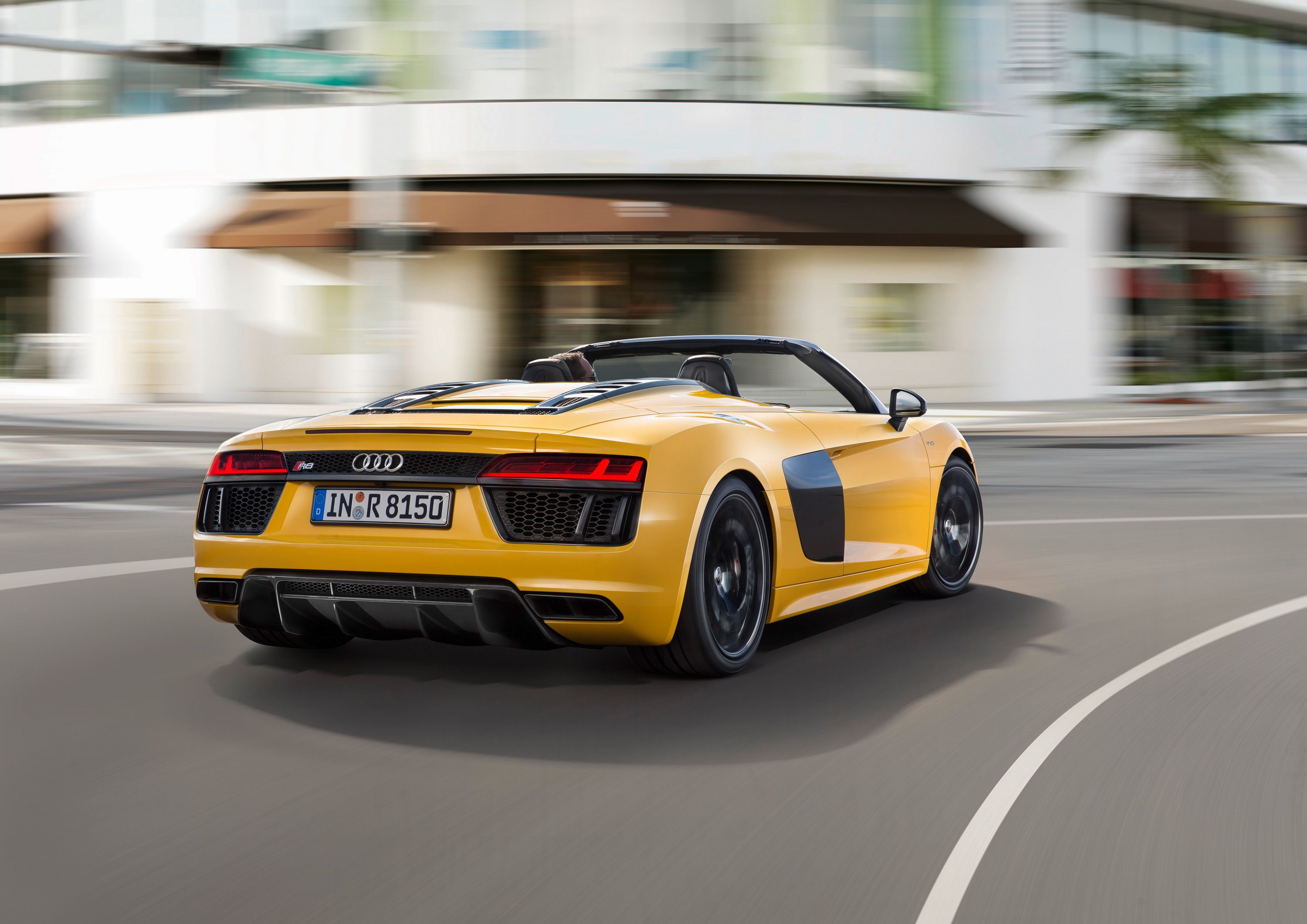
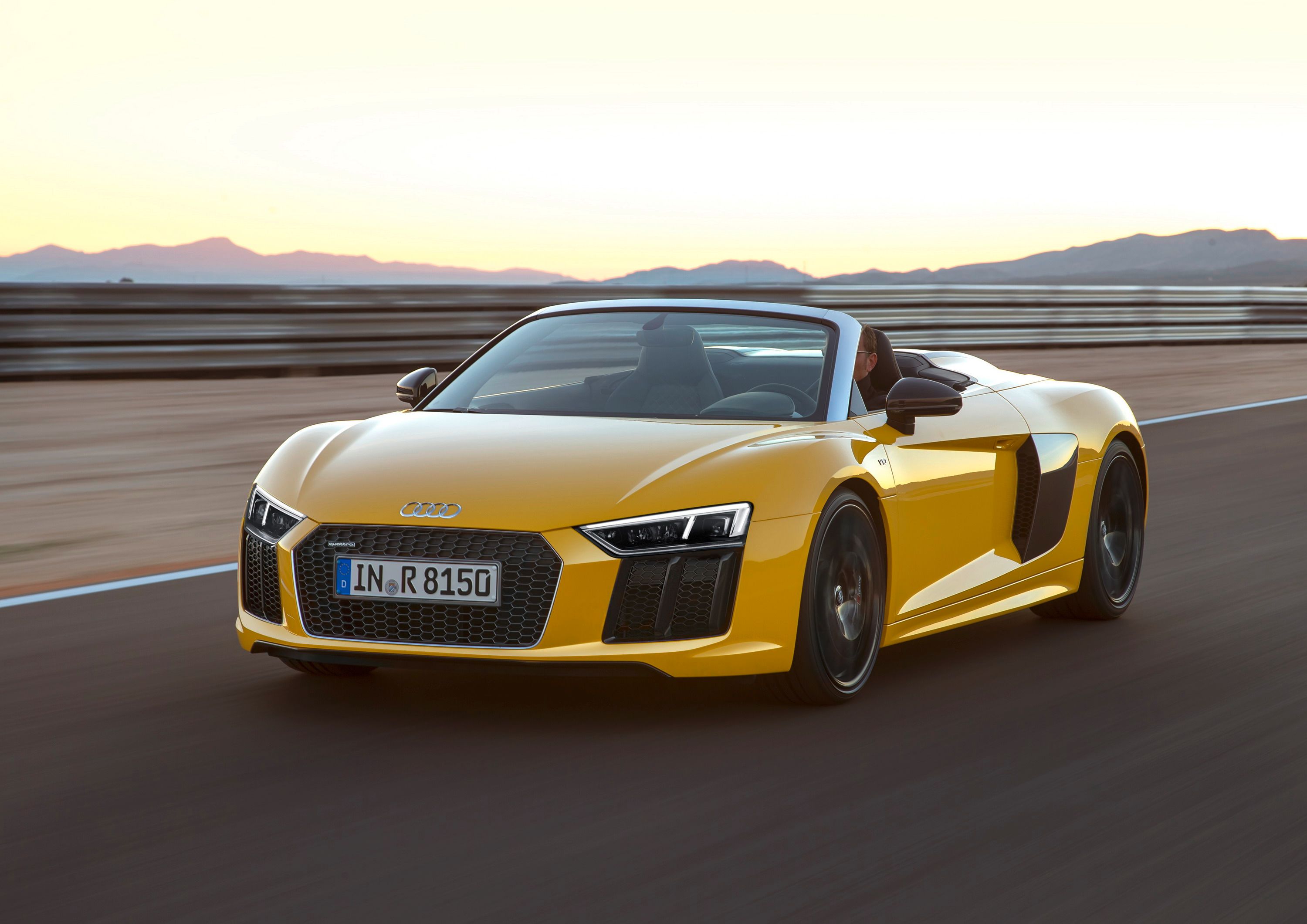
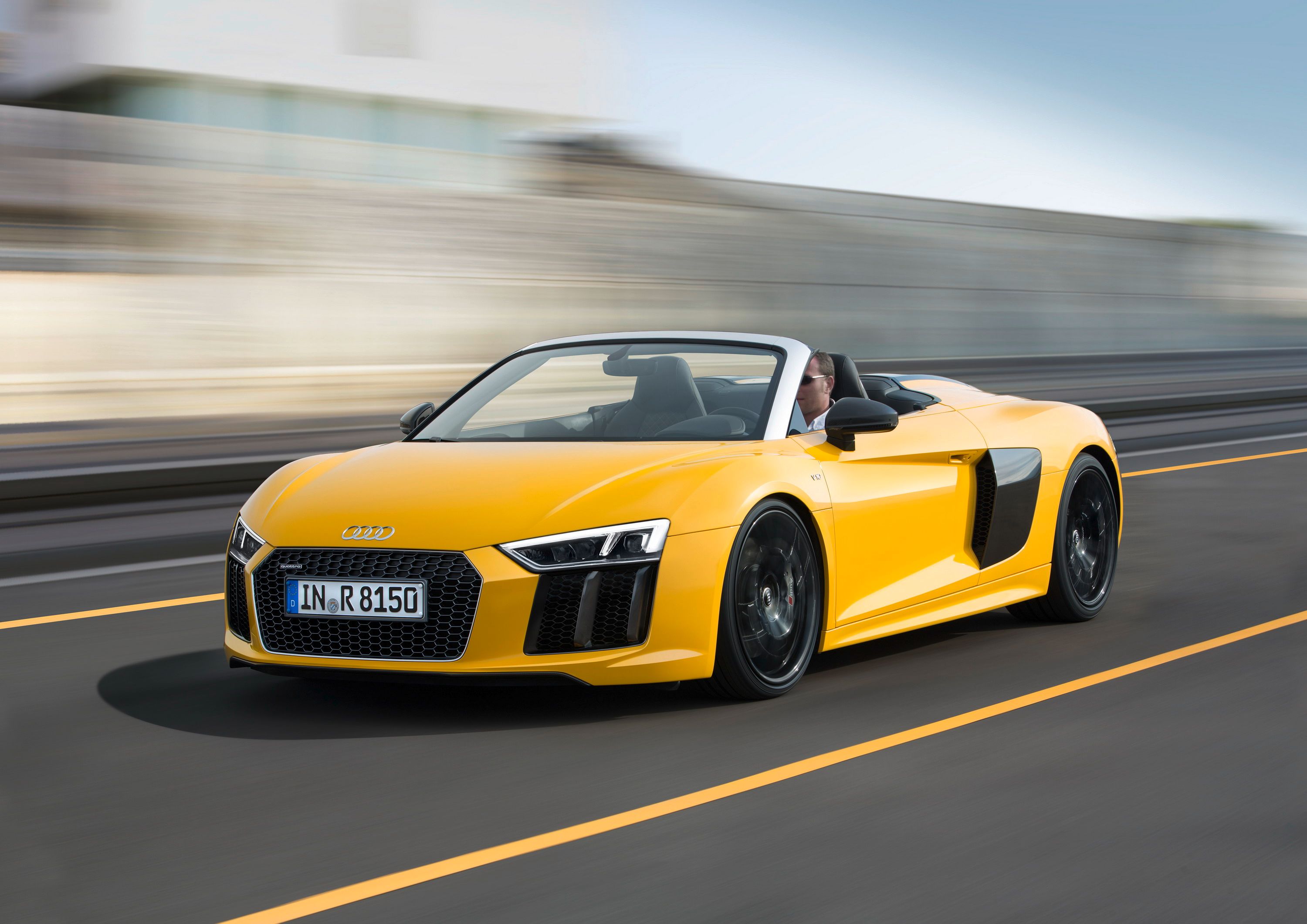
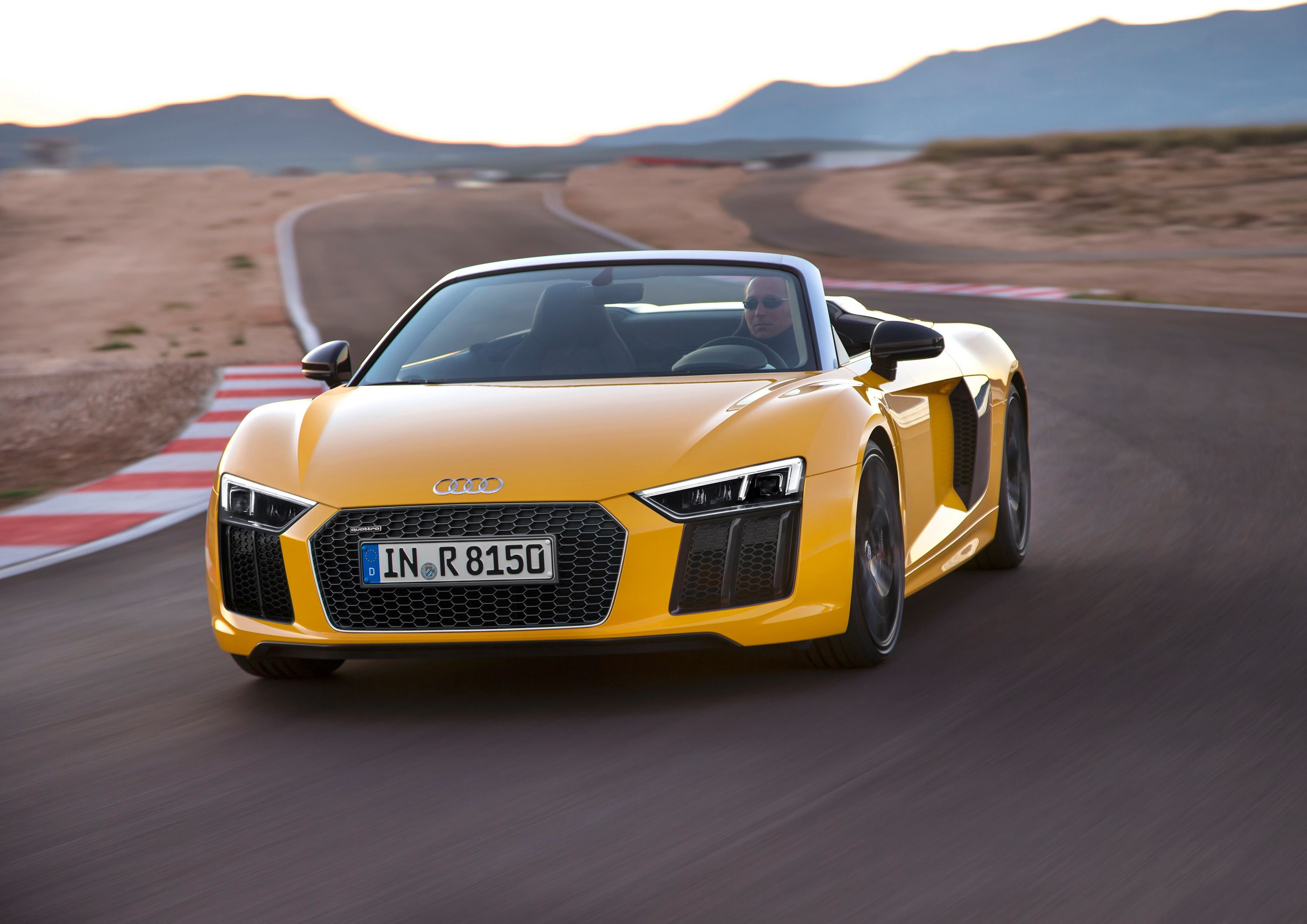
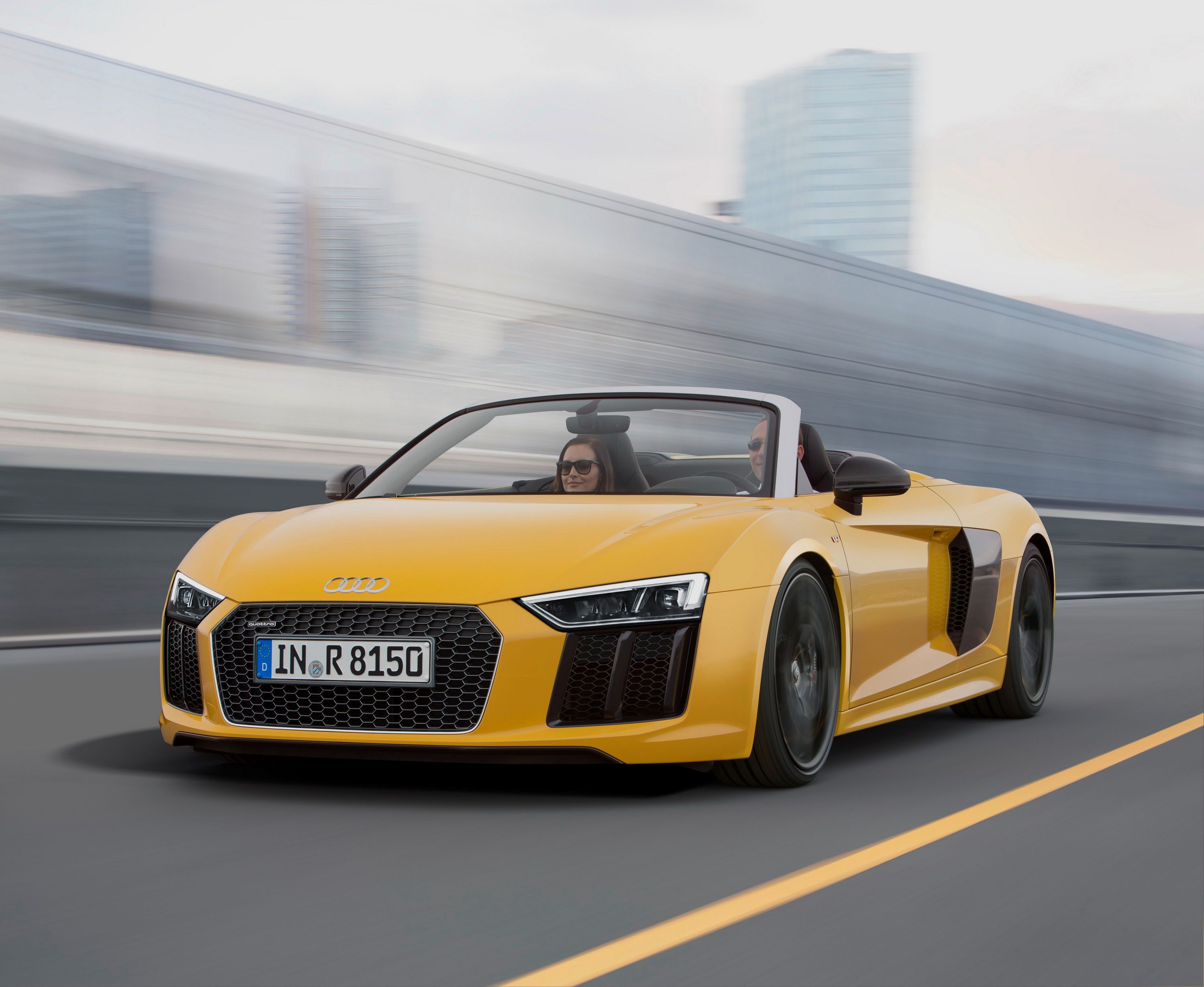
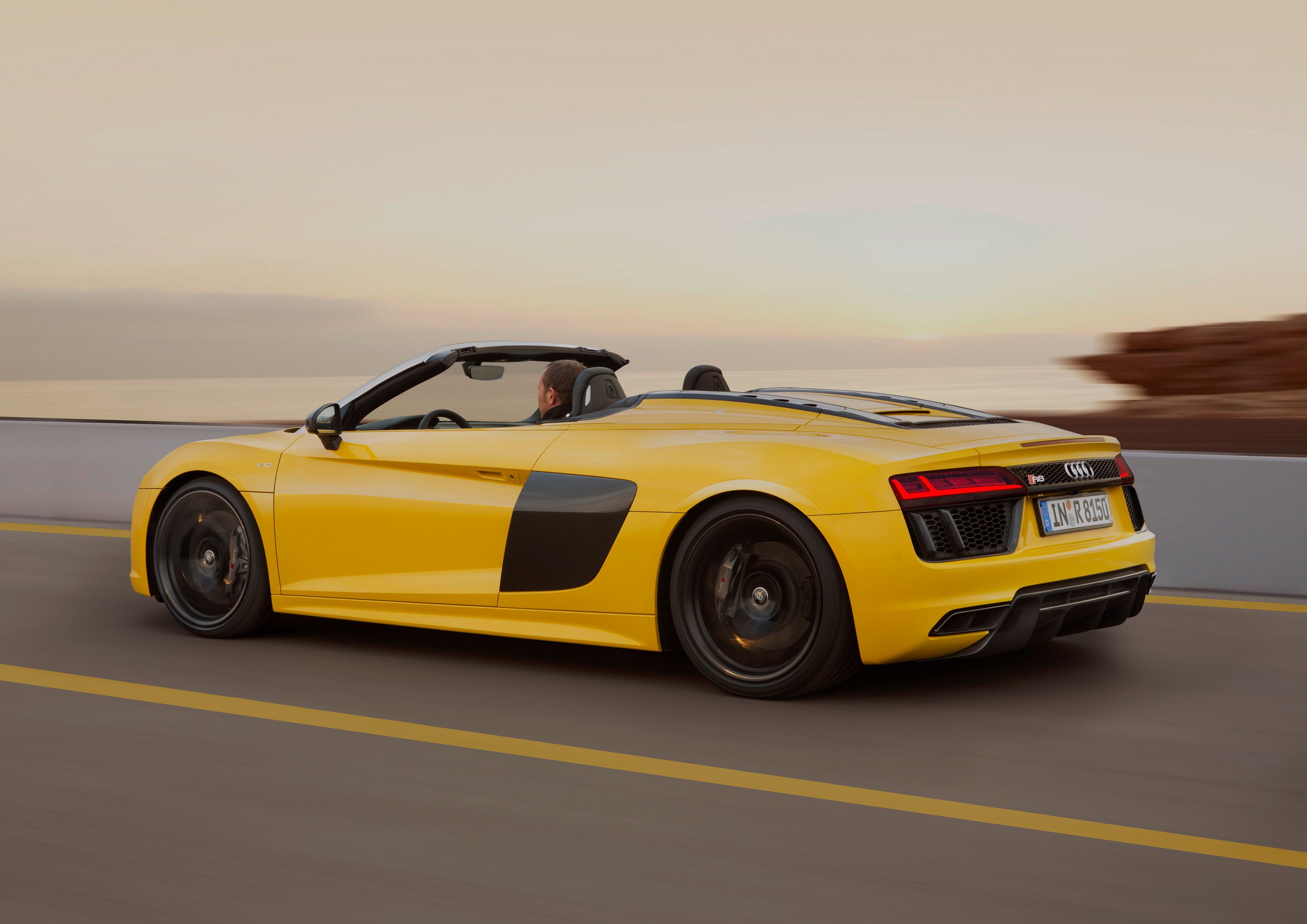
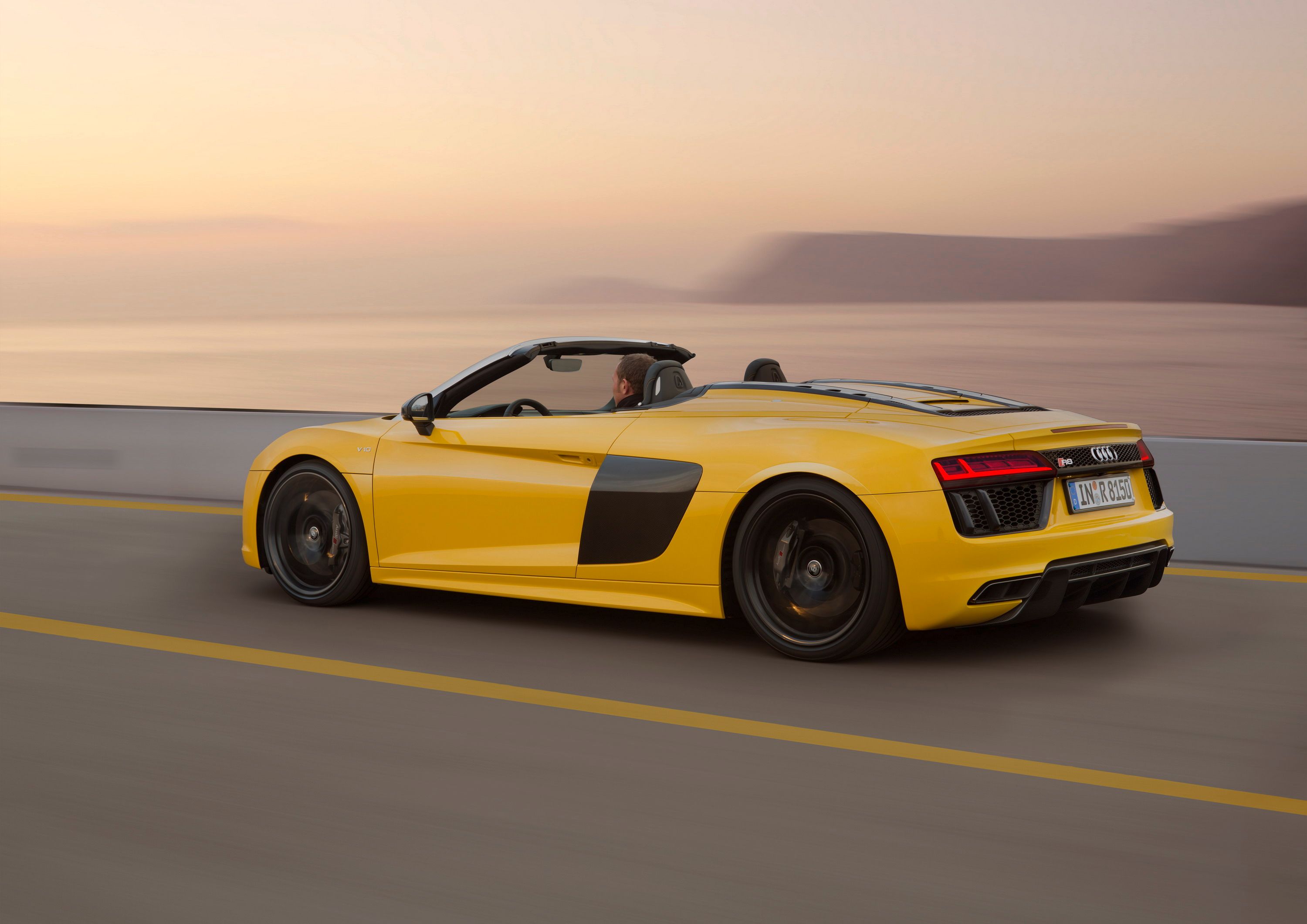
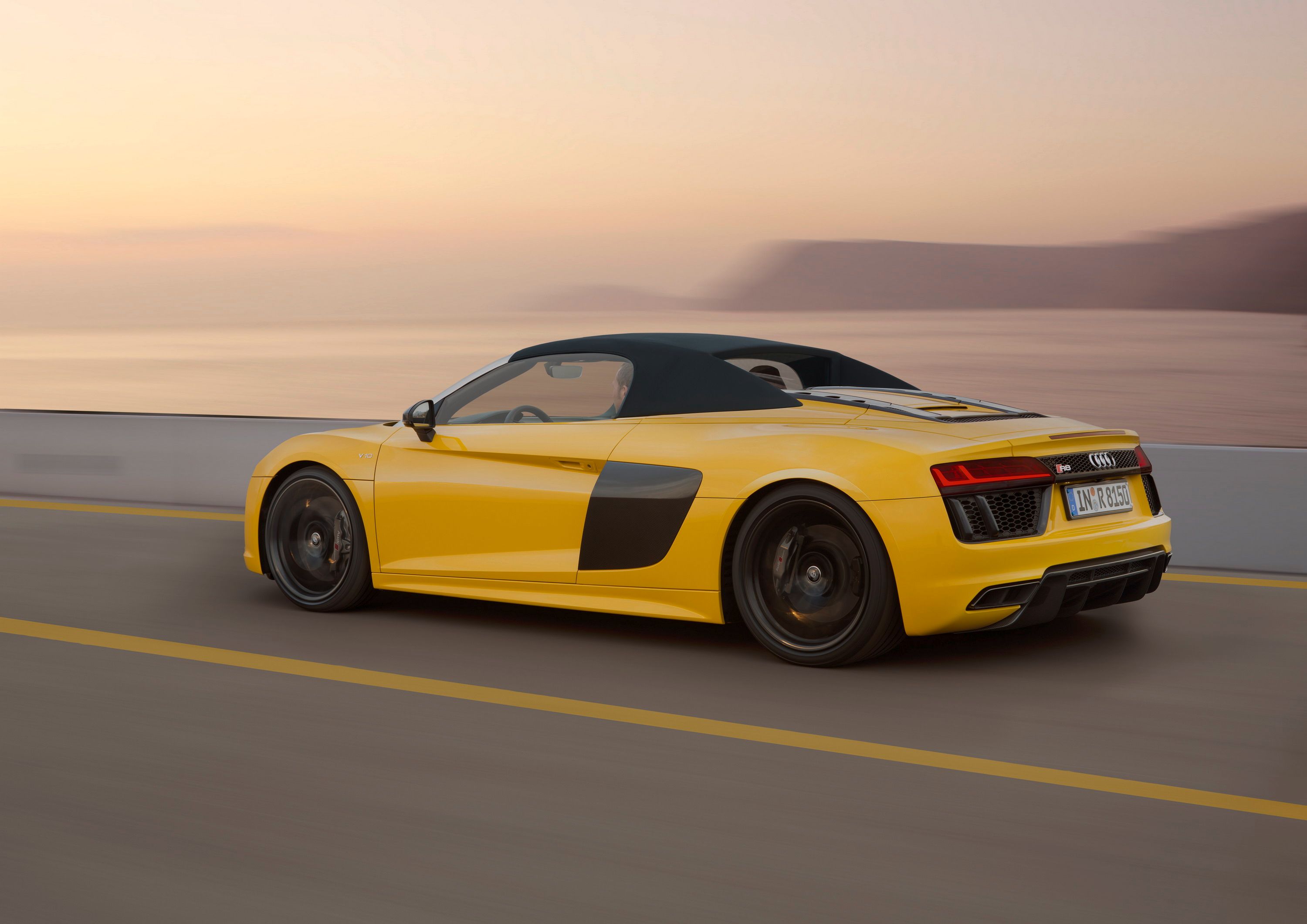
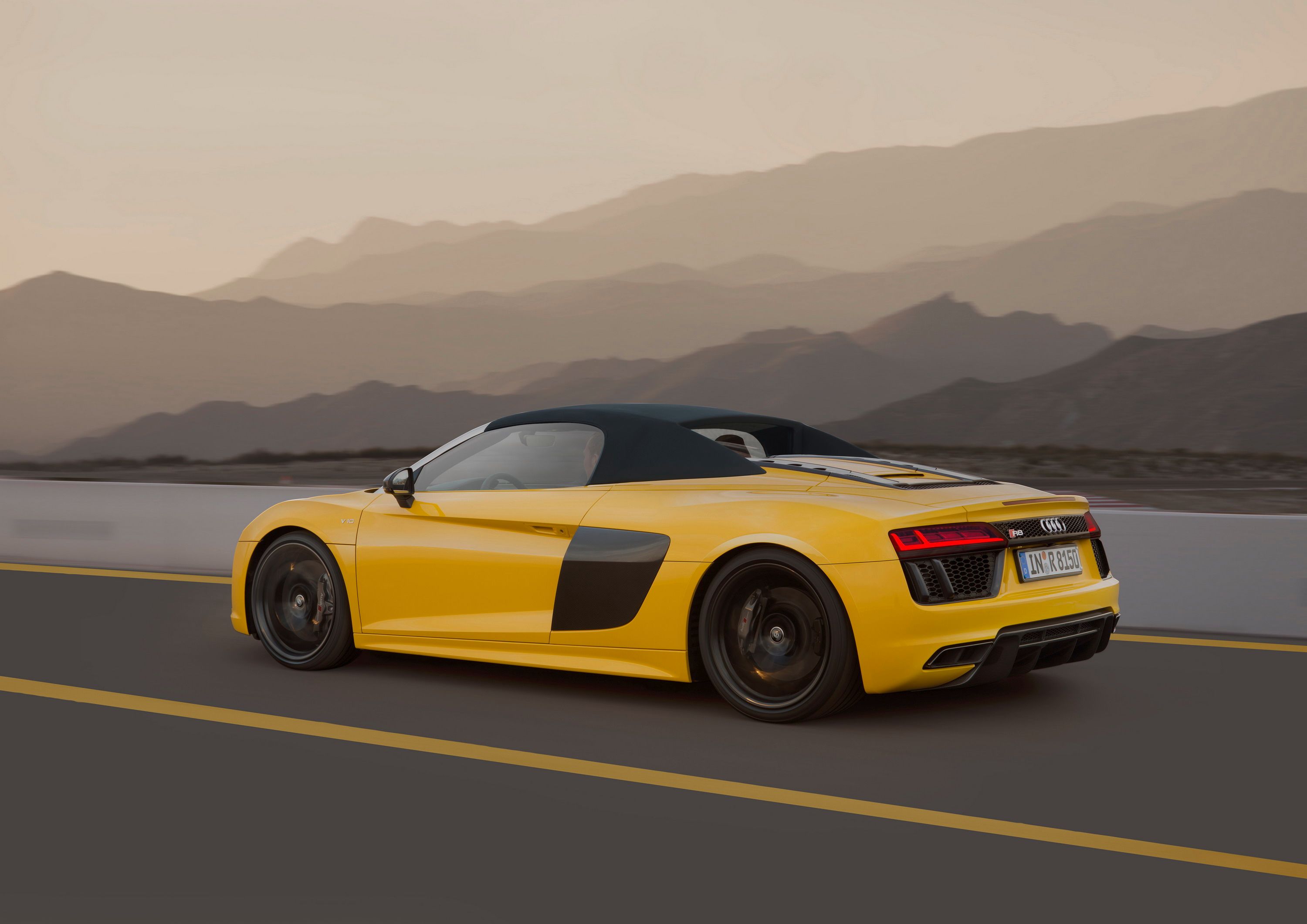
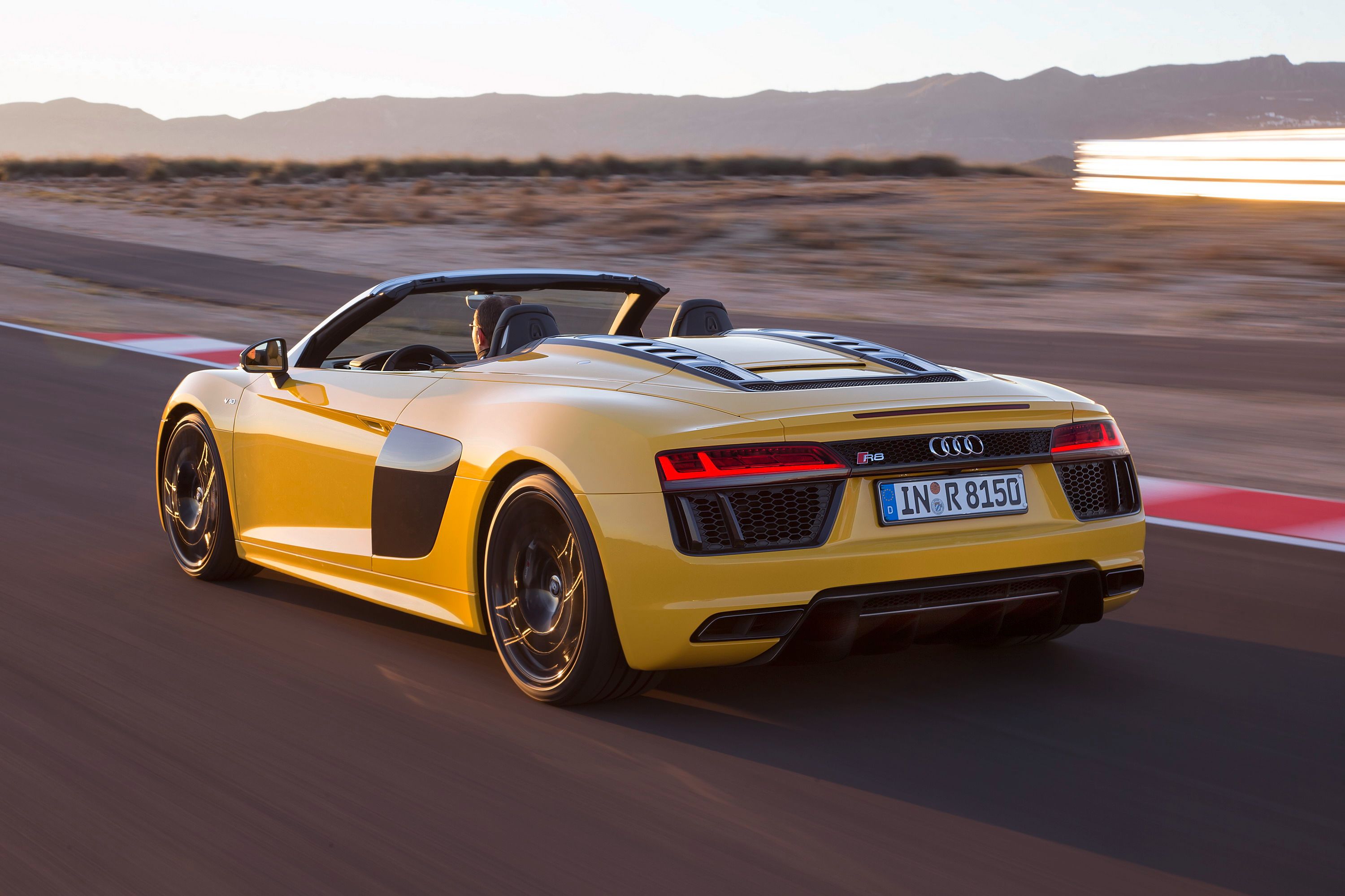
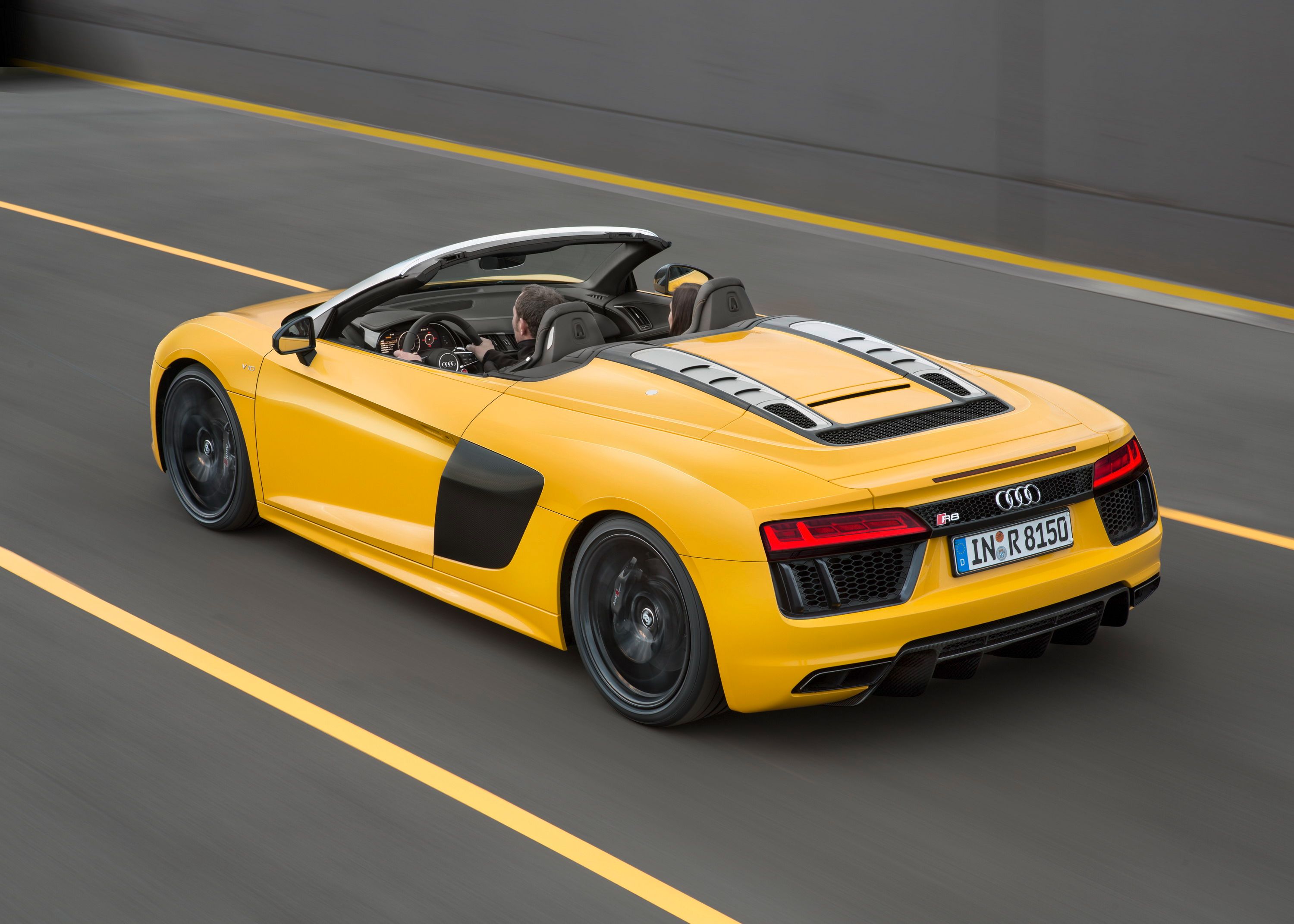
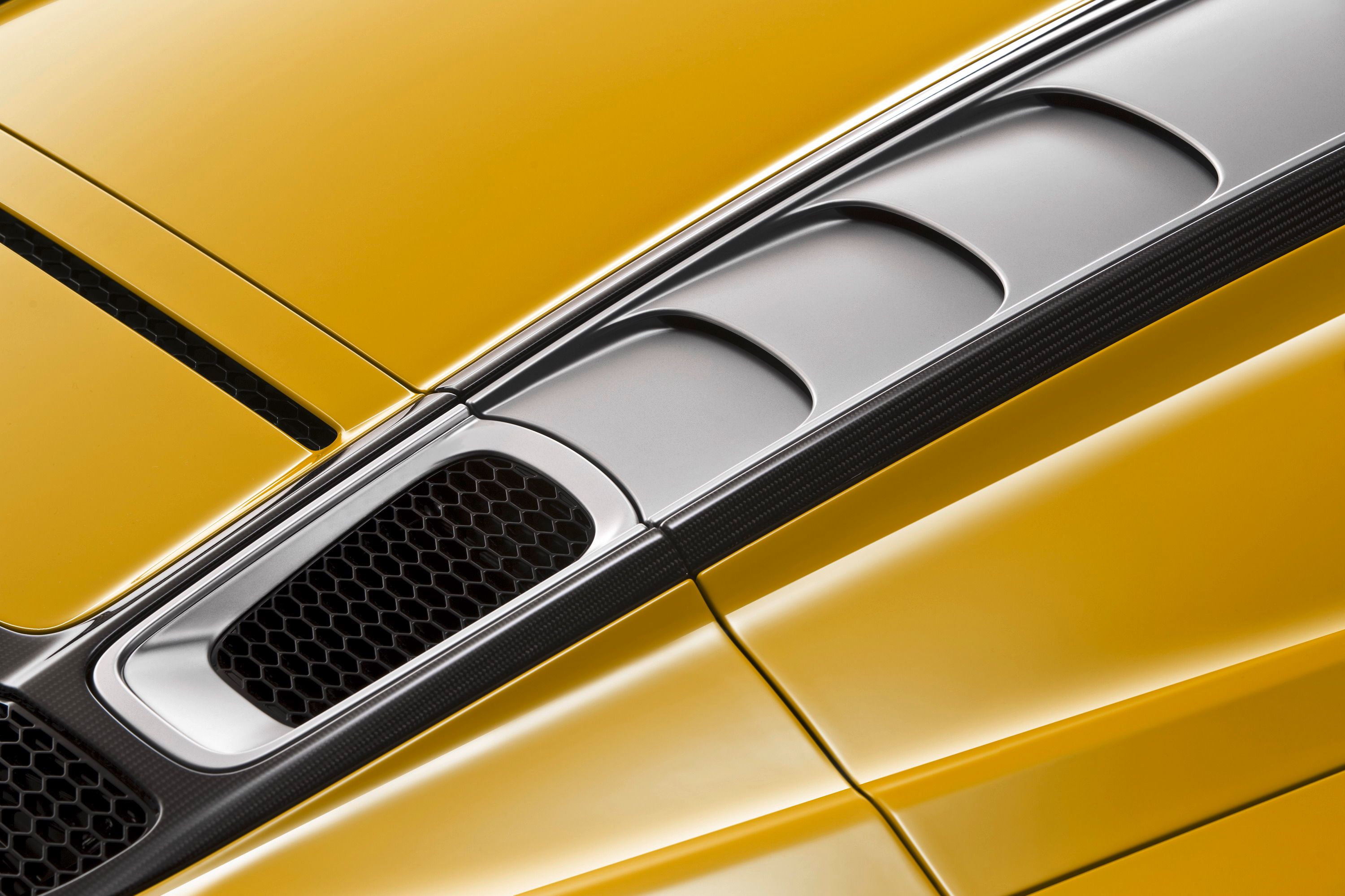
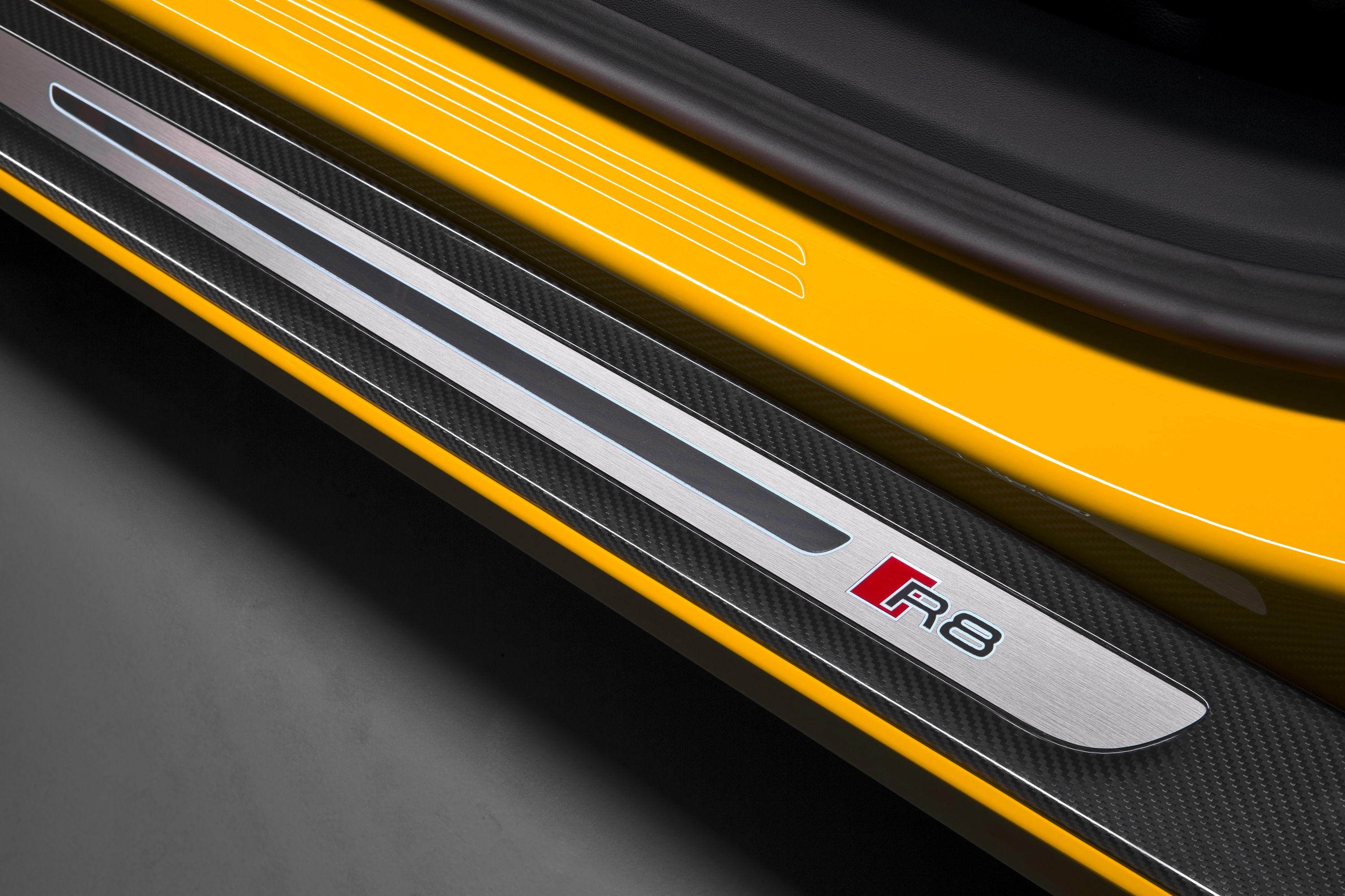
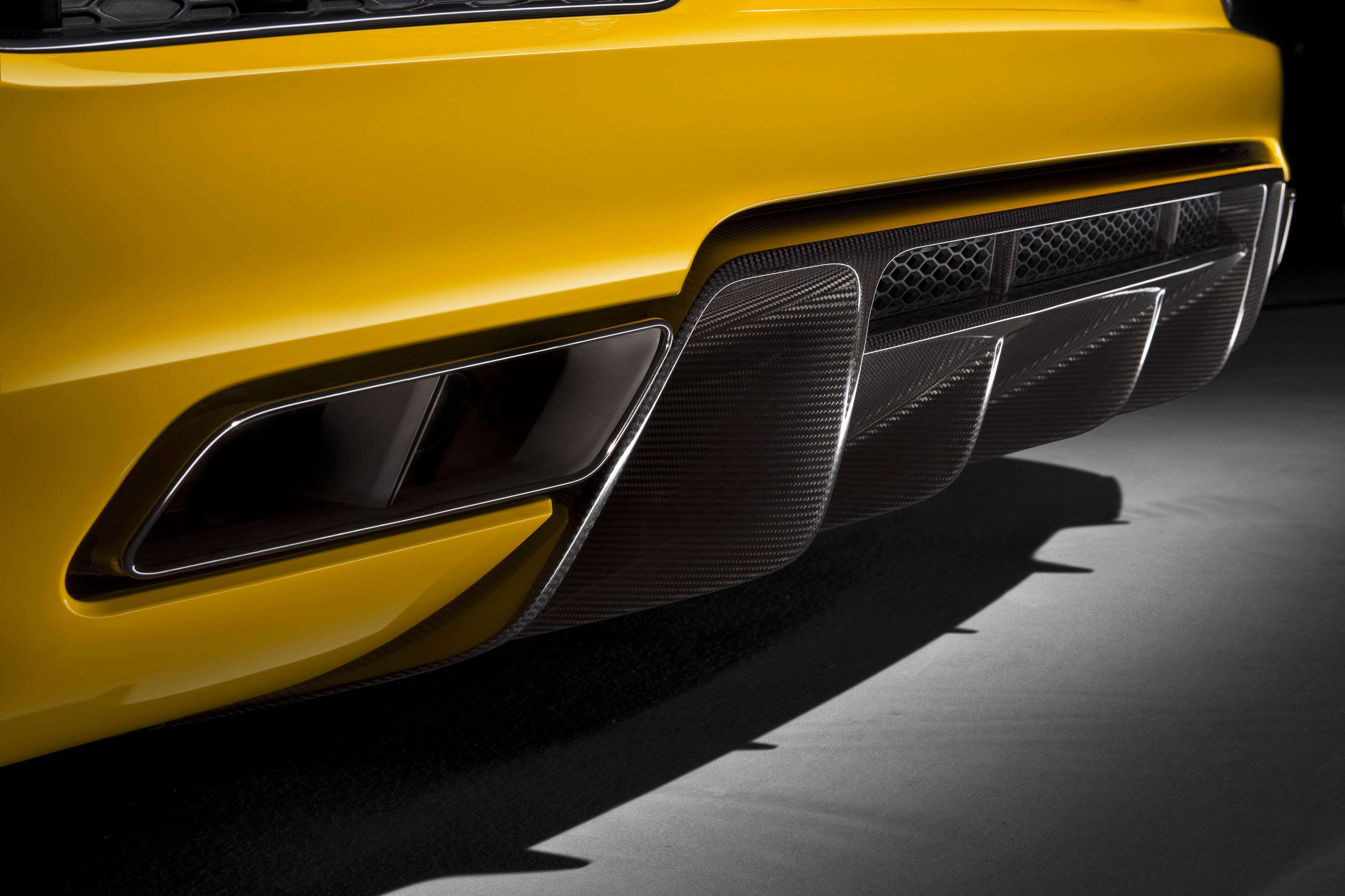
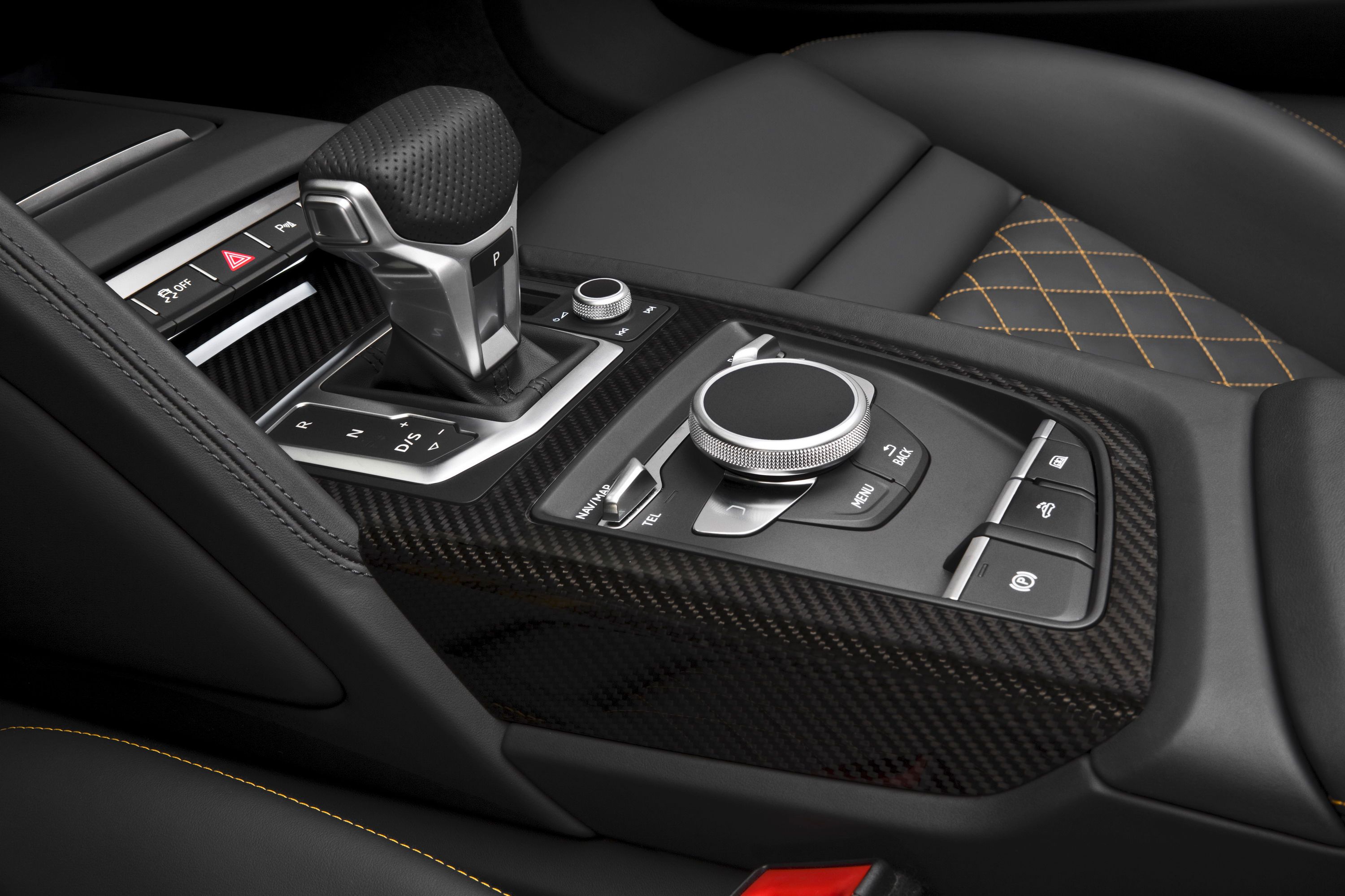
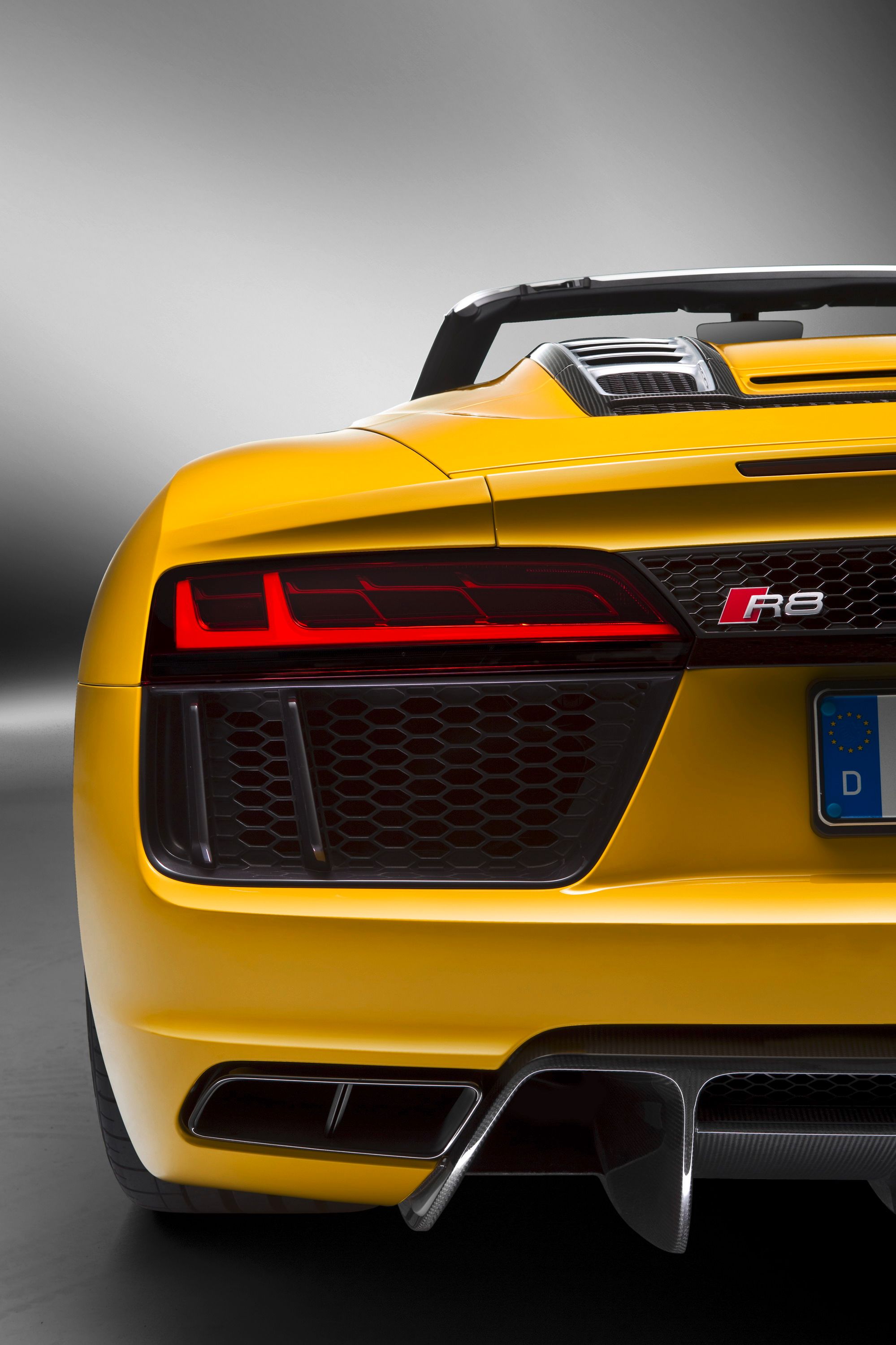
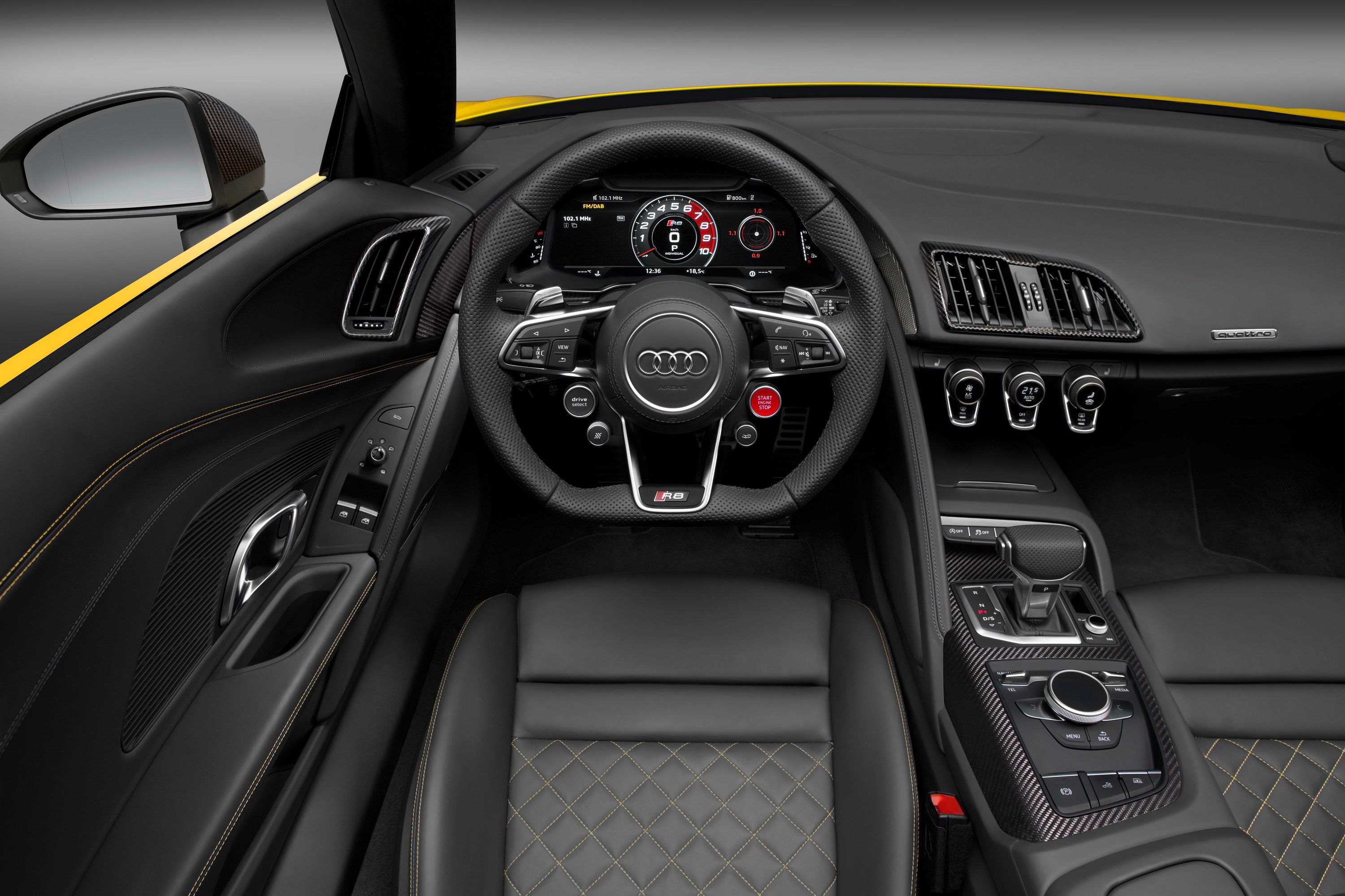
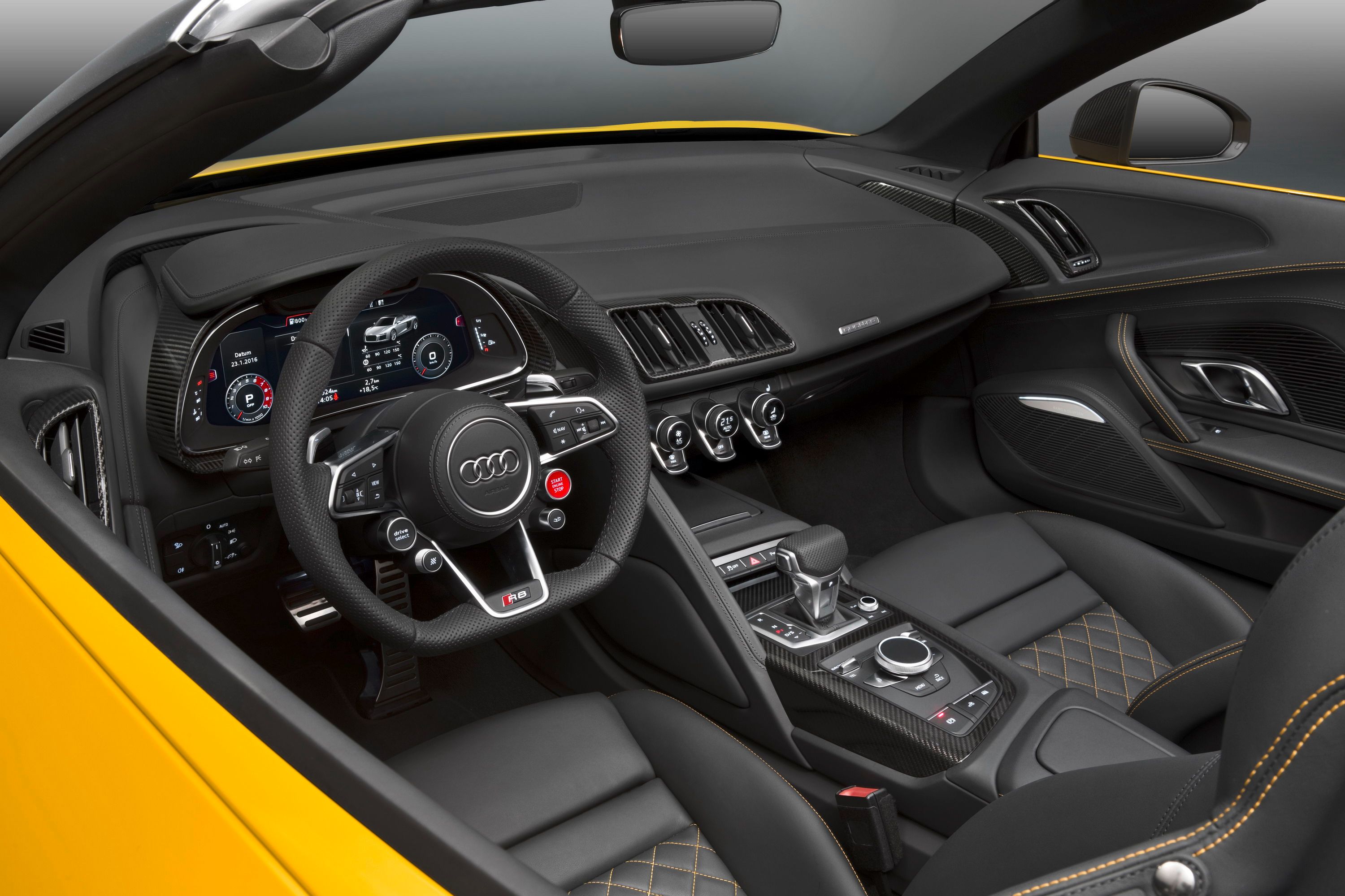
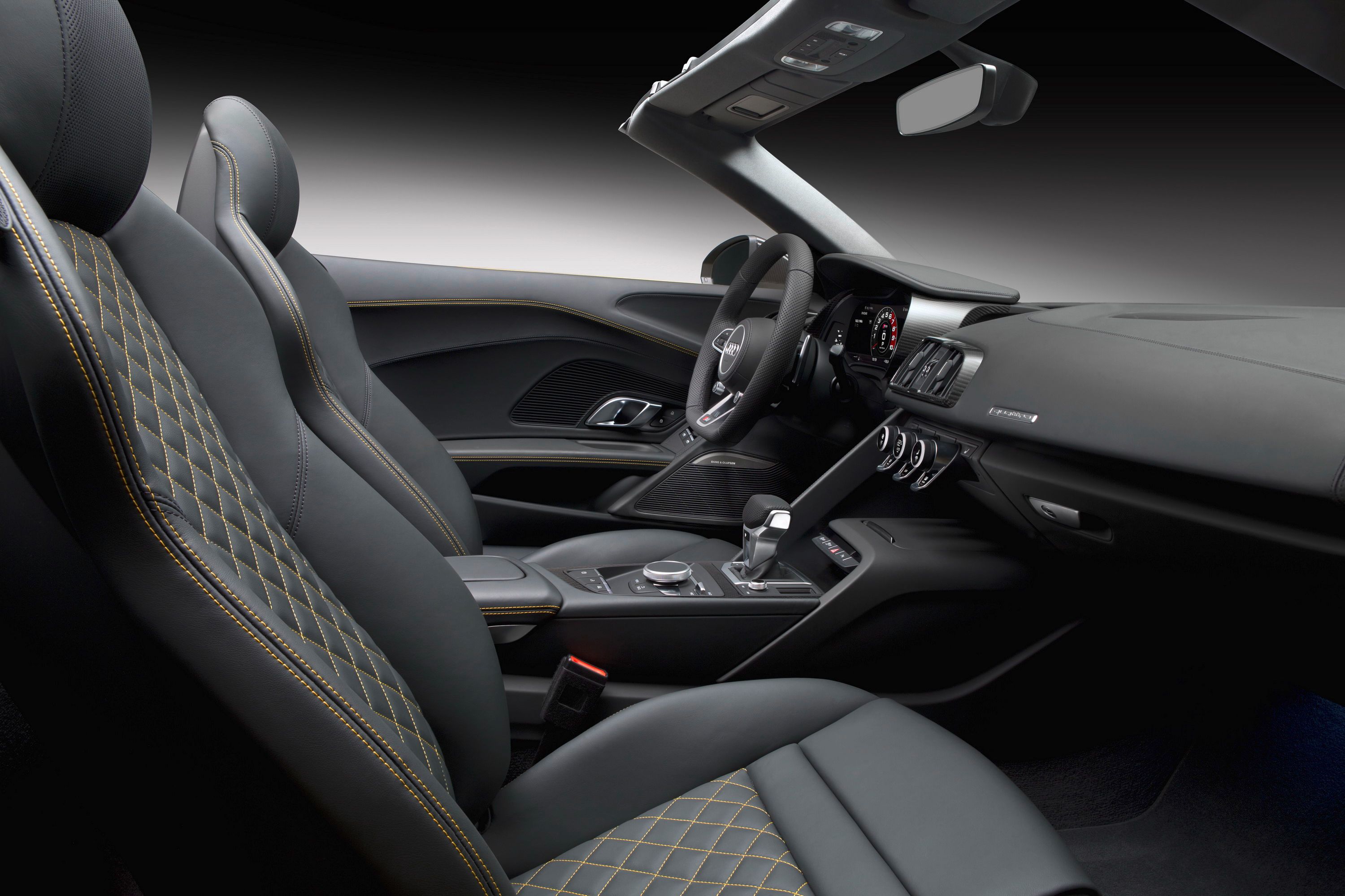
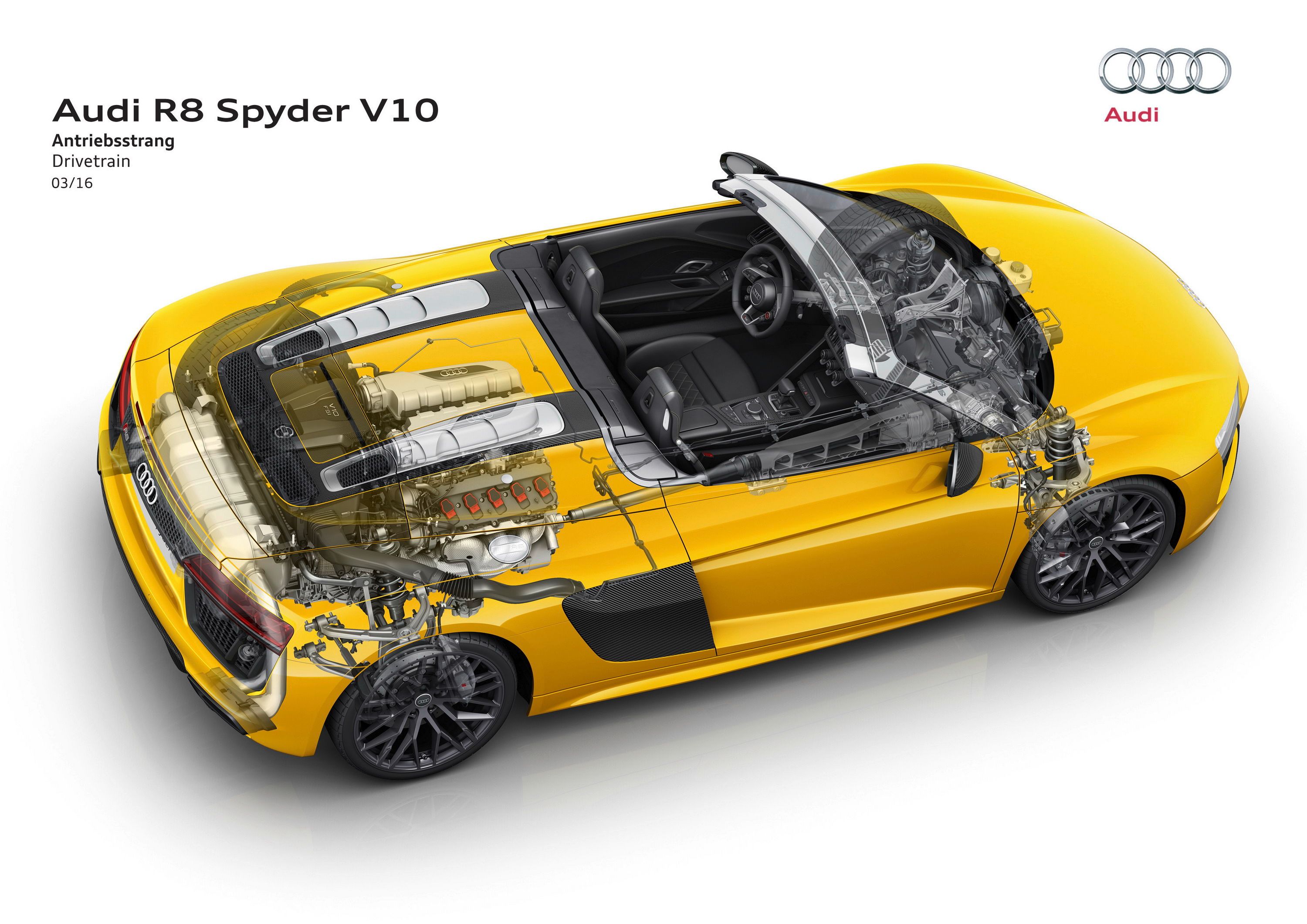
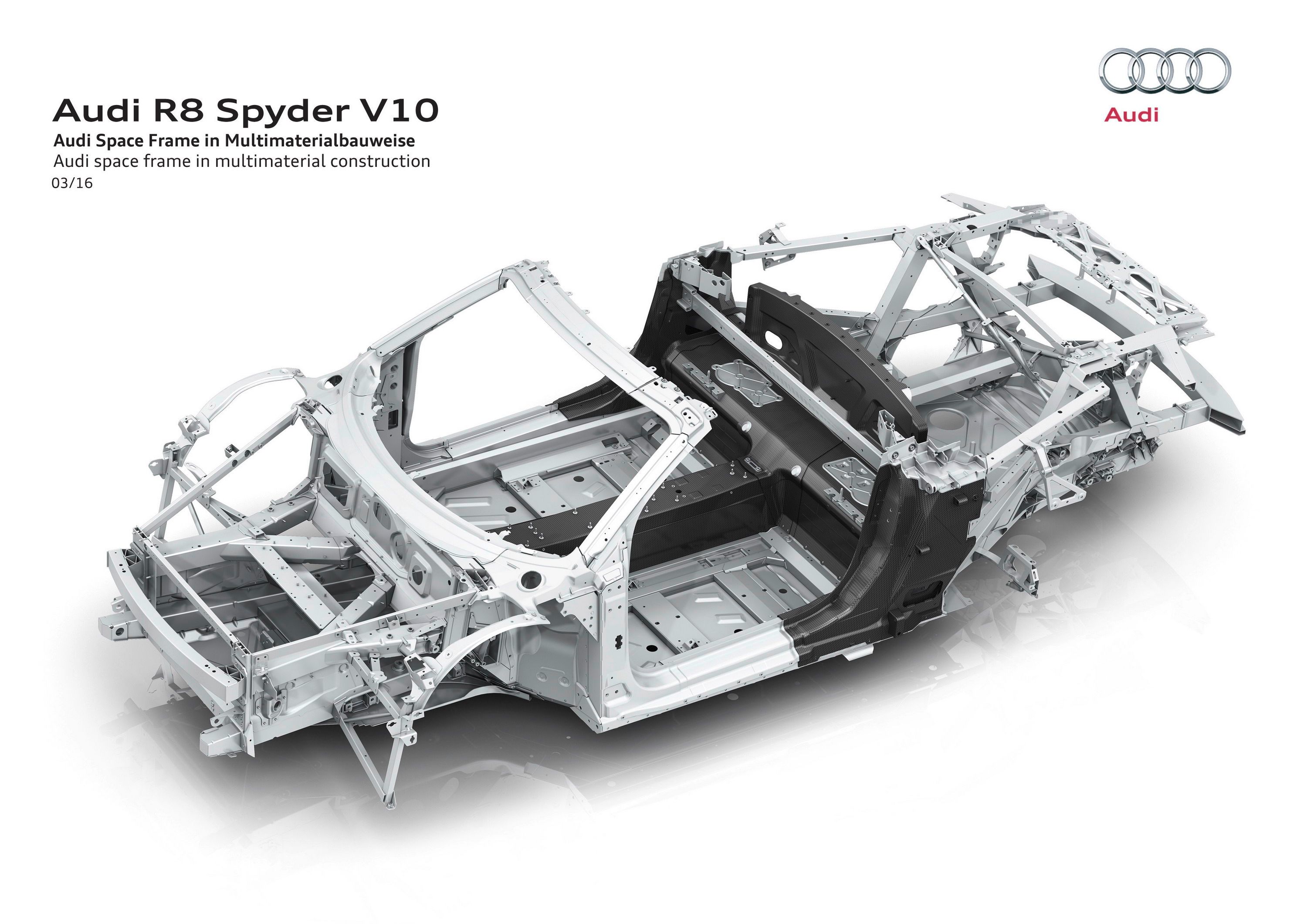
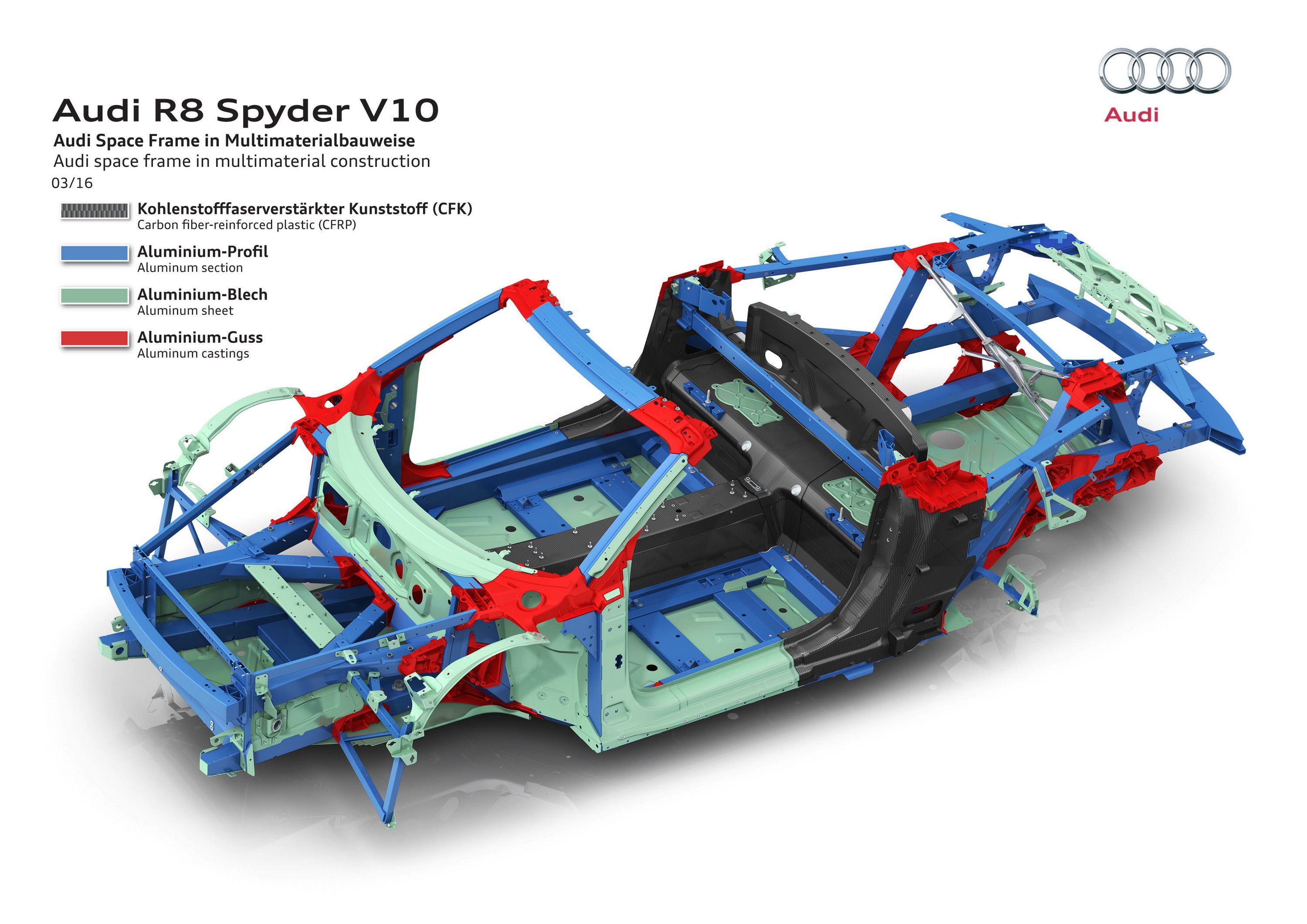
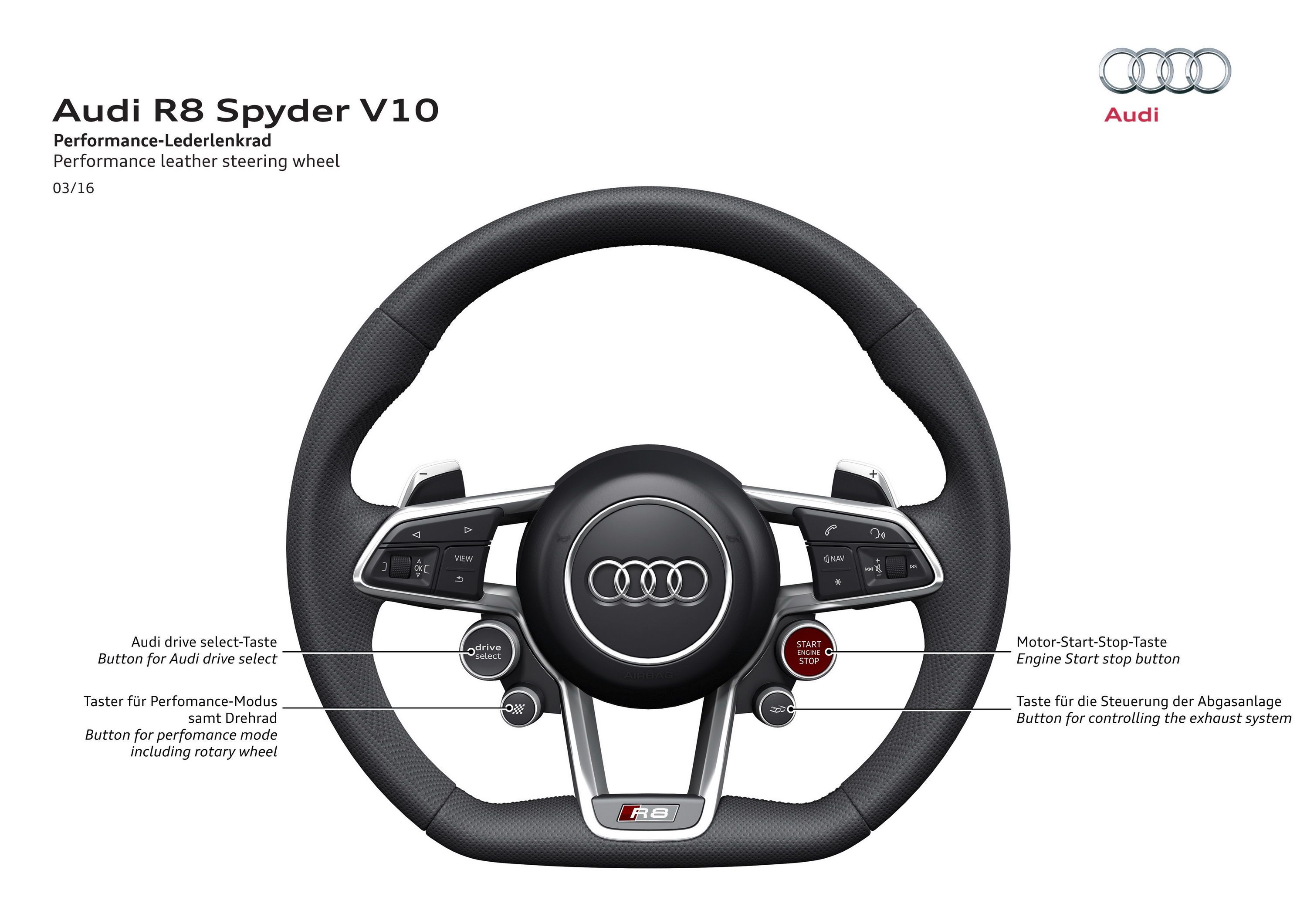
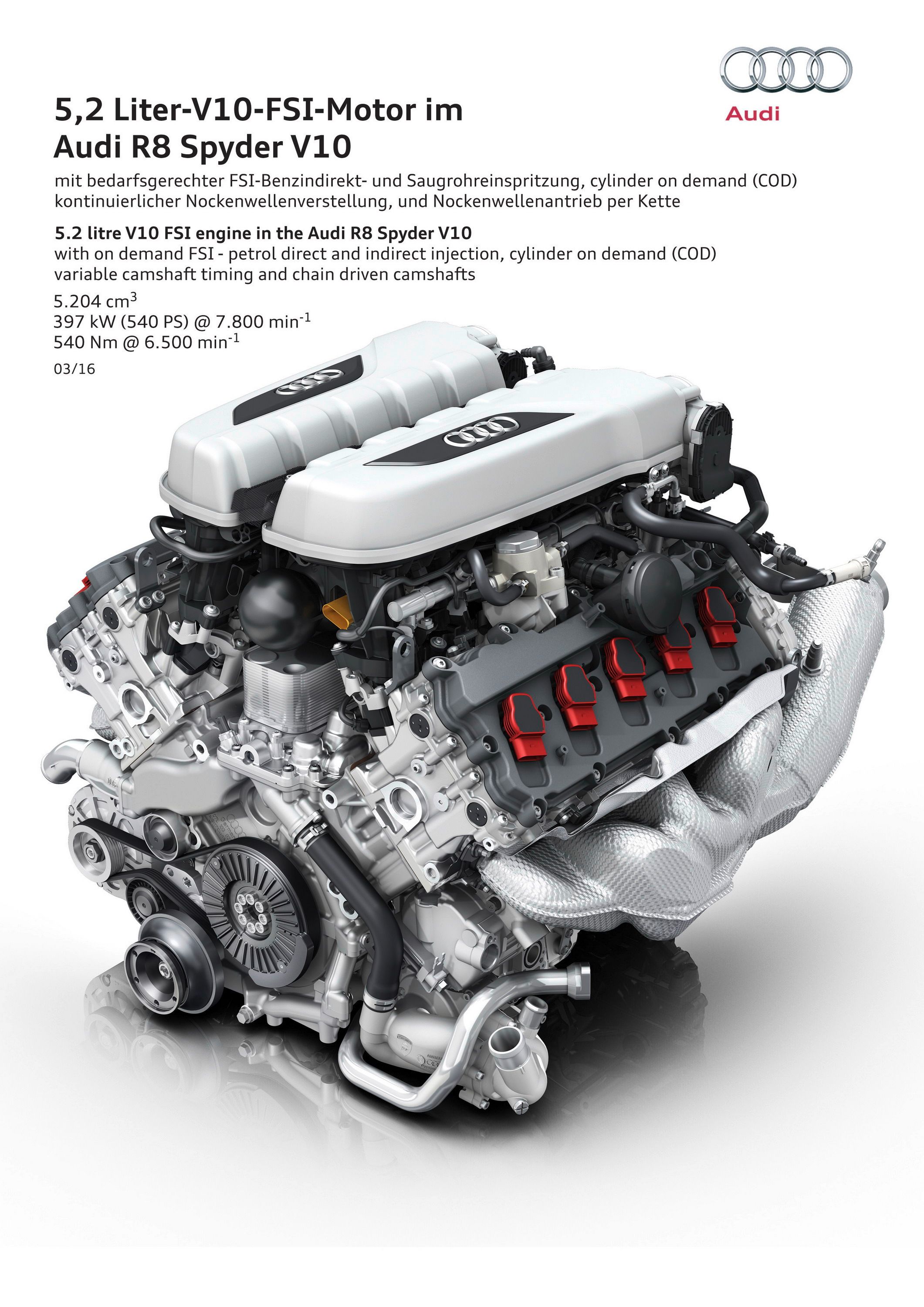
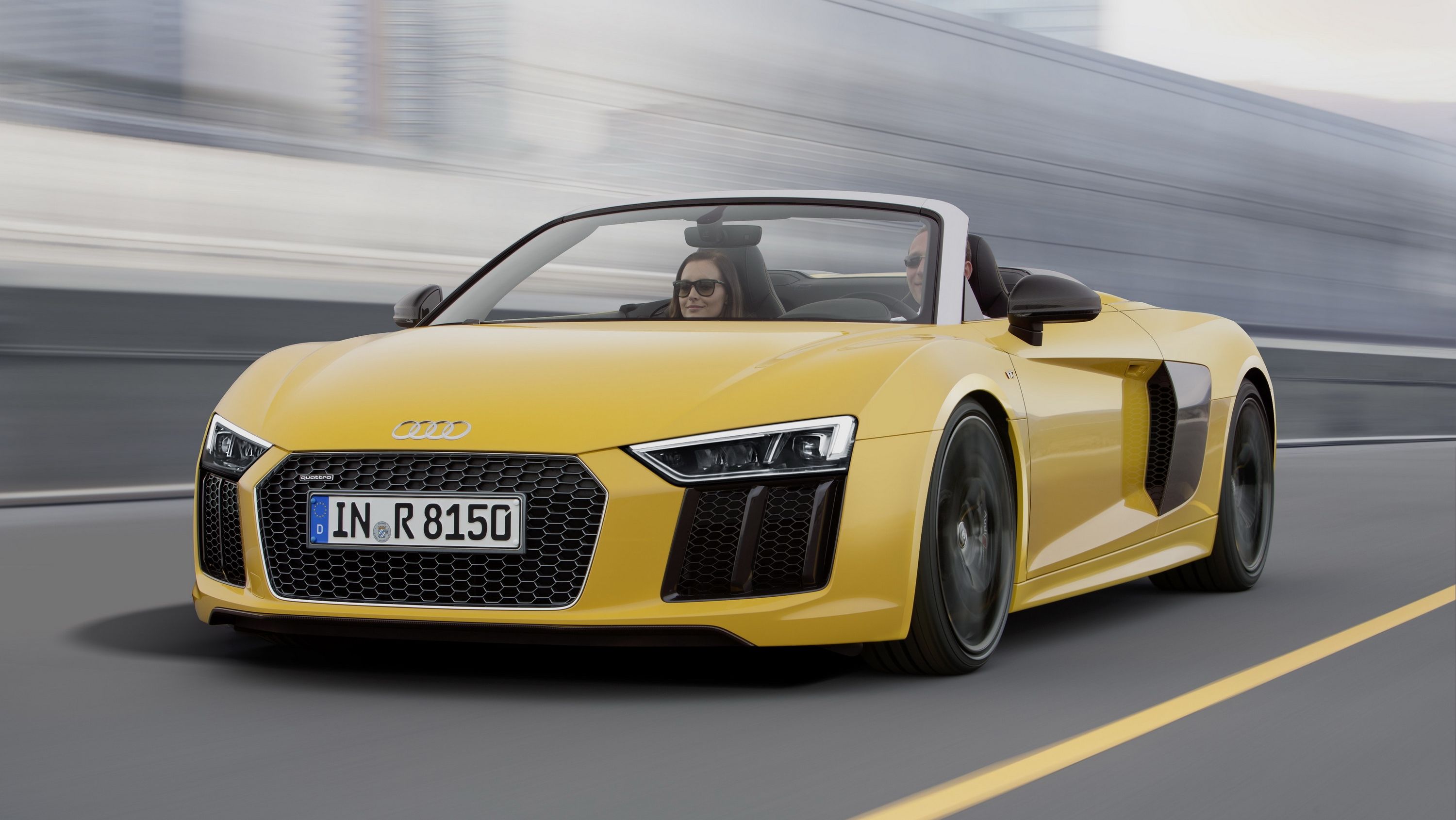

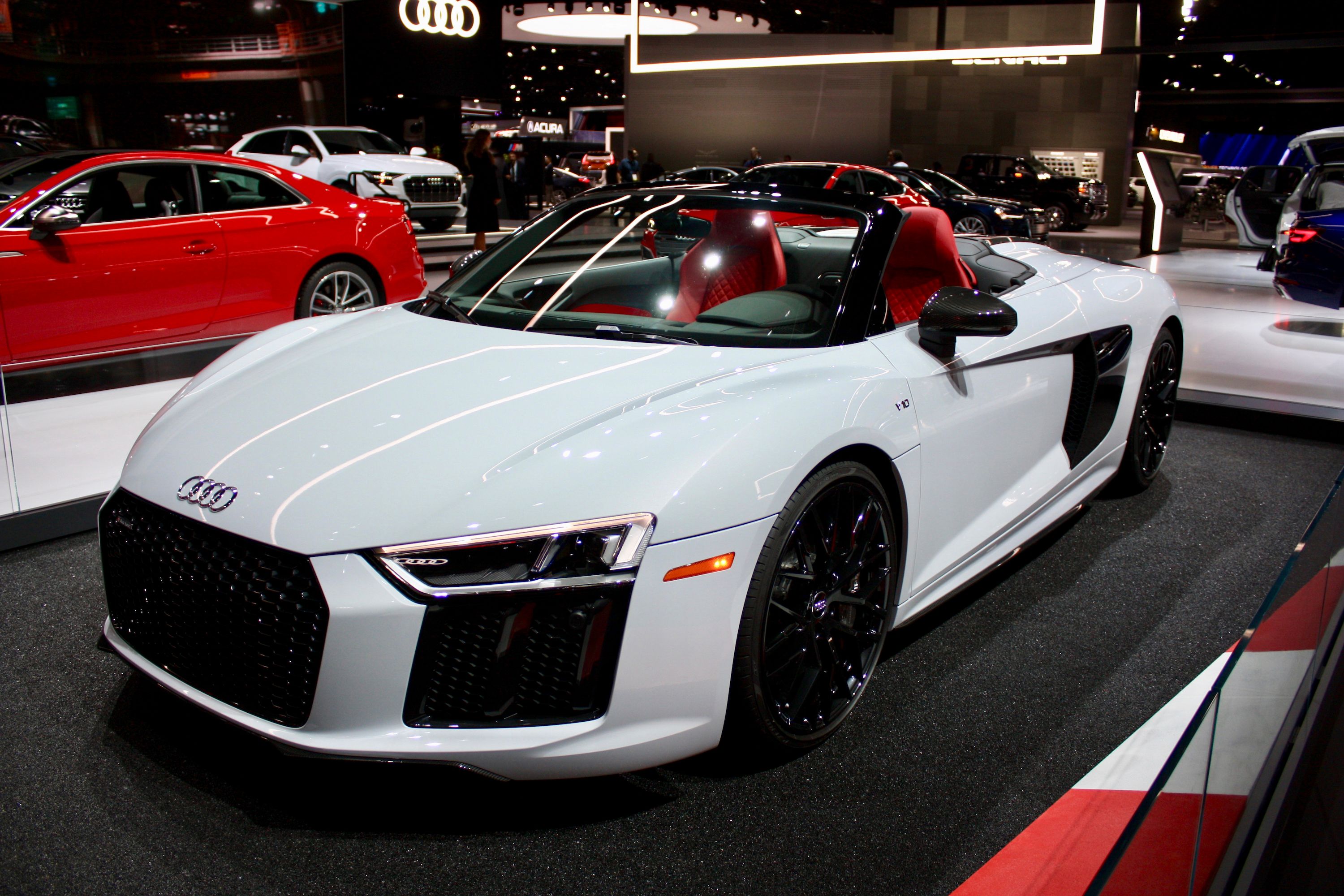




















- Make: Array
- Model: 2017 - 2018 Audi R8 Spyder
- [do not use] Vehicle Model: Array
Exterior
Much like any other transformation that turns a coupe into a convertible, the R8 Spyder is identical to the R8 Coupe we saw at the 2015 Geneva Motor Show, save for the roof and the engine hood. All told, the new Spyder sports the same evolutionary design featuring Audi’s new corporate language consisting of more angular features. Overall, the new R8 Spyder has a more aggressive stance due to its larger front grille and vertical side intakes, slender taillights, and race-like rear diffuser.
As for the features that make the R8 a supercar with infinite headroom, the metal top was replaced by a lightweight fabric top with an aluminum and magnesium frame, as well as a completely different engine lid. The recipe is similar to the first-gen car, as the large glass piece that shows the engine in the coupe was ditched in favor of a vented hood and a windscreen behind the rear seats.
The lightweight cloth is operated by an electro-hydraulic drive that opens and closes the hood in 20 seconds. The action can be done both ways at speeds of up to 31 mph. The rear window can be retracted and extended depending on how much air you want inside the cabin.
Interior
Much like the exterior, the Spyder’s interior mimics the coupe’s in just about every detail. It features a redesigned, flat-bottom steering wheel with three spokes and plenty of controls, revised sports seats with enhanced lateral support, and a 12.3-inch screen that replaces both the old instrument gauges and the MMI display previously fitted in the center stack. There’s also a redesigned dashboard with new A/C vents and a new center console. Trim options include an Alcantara and Nappa leather combo or the optional full Nappa leather for the seats, as well as clear-coated carbon-fiber for the center console, dashboard, and door panels. Naturally, the Spyder benefits from the infinite headroom that comes with all cabriolets.
Drivetrain
With the 2016 model year having marked the end of the line for the V-8-powered R8, the Spyder will get the V-10 as the only engine option. The unit in question is the same 5.2-liter V-10 first launched in the 2016 Lamborghini Huracan, but tweaked to produce 540 horsepower and 398 pound-feet of torque. That’s a 15-horsepower and an eight-pound-feet bump over the previous engine.
Another big change in the drivetrain department is the availability of only one transmission. Audi decided to drop the six-speed manual and offer the R8 with the S Tronic dual-clutch only. The S Tronic delivers power to all four wheels via Audi’s quattro AWD system and propels the supercar to 62 mph in about 3.6 seconds, a tenth-second slower than the coupe. Top speed sits at 197 mph, four mph off the coupe's benchmark.
Other novelties that come with the new drivetrain include a revised quattro system that diverts up to 100 percent of the power to the rear wheels in normal driving conditions and to the front wheels on slippery surfaces. Fuel economy is rated at 20 mpg combined for the new V-10, which is a 10 percent improvement over the previous model, thanks to a new stop-start system.
While the R8 Coupe also comes in a Plus version that benefits from 610 horsepower and 413 pound-feet, the Germans have yet to say whether the Spyder will get a similar trim. Unless Audi decides to extend the Plus nameplate to the Spyder, the convertible will only be offered with the standard V-10.
However, the R8 Spyder may get an all-electric version. The 2016 Audi E-tron coupe is motivated by two electric motors powered by a large, T-shaped, 49-kWh battery, which deliver a total of 455 horsepower and a whopping 679 pound-feet of torque. The R8 Spyder e-tron would need 3.9 seconds to hit 62 mph from a standing start and have an electronically limited top speed of 155 mph.
Prices
The R8 Spyder starts out at £128,185 plus a destination charge of £1,805, for a starting OTR price of £129,990. At current exchange rates, that computes to nearly $172,000. Solid, metallic, matt effect, pearl effect, and crystal paint finishes can be selected at no charge. If you look to Audi exclusive for a cool exterior color, you’ll be looking at just over $3,300 for a standard finish or just over $8,100 for a matt finish. Opting for the side blades to be finished in Ice Silver, Kendo Grey, or Mythos Black comes free of charge, but you’ll be asked to pay just over $2,600 for Gloss Carbon, almost $1,200 for Matt Titanium Grey, or nearly $1,400 extra for an Audi Exclusive color.
Three 19-inch, twin-spoke, alloy wheel designs are available at a price of $1,256 while going for any variation of the 20-inch Y-design wheels will set you back just over $3,100. Opting for LED headlights with Laser Light and High-beam assist will set you back almost $4,200. On the inside, you can go with R8 bucket seats for an extra $4,000. Adding a stitched diamond design to the leather upholstery comes at a premium of about $600.
Four packages are available to choose from, which give you the best equipment options at a reduced price. The driver assistance pack commands $860; the Gloss Carbon Exterior Styling Pack will set you back to the tune of $6,500, the Sound and Comfort Pack commands $5,200, and the Sport Plus Pack calls for just over $4,600. As you can see, obtaining a fully loaded R8 could easily breach the $200,000 mark, but that’s the price you have to pay for power and luxury, right?
If you're interesting in configuring an R8 to suit your needs, you can check out the online configurator here.
2018 Audi R8 Spyder prices
|
Audi R8 Spyder V10 quattro S tronic |
$177,100 |
Competition
Porsche 911 Turbo Cabriolet
The Porsche 911 Turbo Cabriolet might not have the R8’s supercar looks, but the sports car is significantly quicker thanks to its turbocharged, 3.8-liter, flat-six engine. rated at 540 horsepower in standard trim and 580 horses in S trim. The six-cylinder pushes the 911 from 0 to 60 mph in three and 2.9 seconds, respectively, while top speed sits at 198 mph for the Turbo and 205 mph for the Turbo S. Also, the 911 Turbo offers a different driving experience, due to both its turbocharged mill, rear-engined configuration, and four-wheel steering. Price-wise, the Turbo S Cabriolet is a lot more expensive than the R8, checking in at $171,500 and $200,400.
Find out more about the Porsche 911 Turbo Cabriolet here.
McLaren 570S Spider
Note: 2016 McLaren 570S Coupe shown here.
Introduced for the 2016 model year as McLaren's first sports car->ke506 aimed at the Porsche 911 Turbo, the 2016 McLaren 570S Coupe has yet to receive an open-top version, but it has been confirmed that the Spider is underway for 2017. Much like its competitors from Porsche->ke1 and Audi->ke14, the 570S Spider will make use of the coupe's drivetrain, a twin-turbo 3.8-liter V-8 that cranks out 562 horsepower and 443 pound-feet of torque. The Spider will likely need 3.3 seconds to hit 62 mph and reach a top speed of around 202 mph, which would make it quicker than the R8 but slower than the 911 Turbo S. The British drop-top should retail from around $200,000, making it the most expensive of the bunch.
Learn more about the upcoming McLaren 570S Spider here.
Conclusion
Though it wasn't the quickest and most powerful supercar in its segment, the first-generation R8 was a popular choice among enthusiasts due to its relatively affordable sticker and availability of both V-8 and V-10 engines. This tradition is likely to continue with the second-generation car despite the fact that Audi discontinued the V-8 mill and the starting price sits a lot higher because of that. On the other hand, the lack of a manual transmission is a serious issue that will likely upset a lot of purists. However, Audi is only doing what other automakers are doing with their sports cars -- ditching manual gearboxes for dual-clutch automatics.
Update History
Update 7-29-2016: Audi has announced that the R8 Spyder will be priced from £129,990 (including destination fees) in the U.K. That translates to nearly $172,000 at current exchange rates. Check out the details as well as the options available in the Prices section below.
Updated 03/23/2016: Audi unveiled the all new, 2017 R8 Spyder at the 2016 New York Auto Show.
Updated 03/09/2016: Our spy photographers caught the upcoming R8 Spyder cruising on the streets of Europe with absolutely no camouflage on it. And we have to admit, the car looks amazing in yellow. Of course we all know what this means: and official debut should happen shortly.

